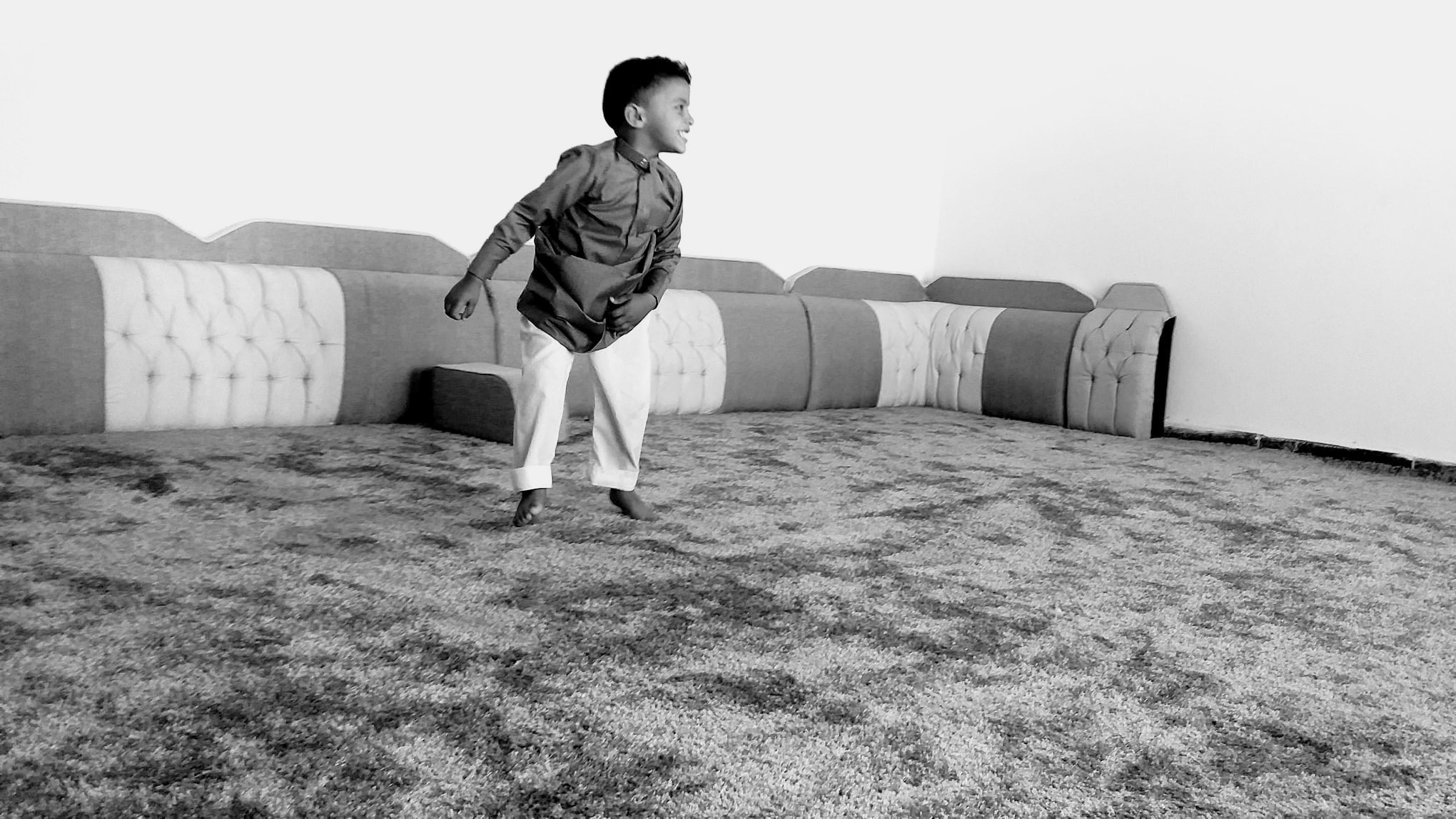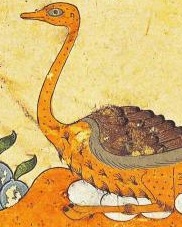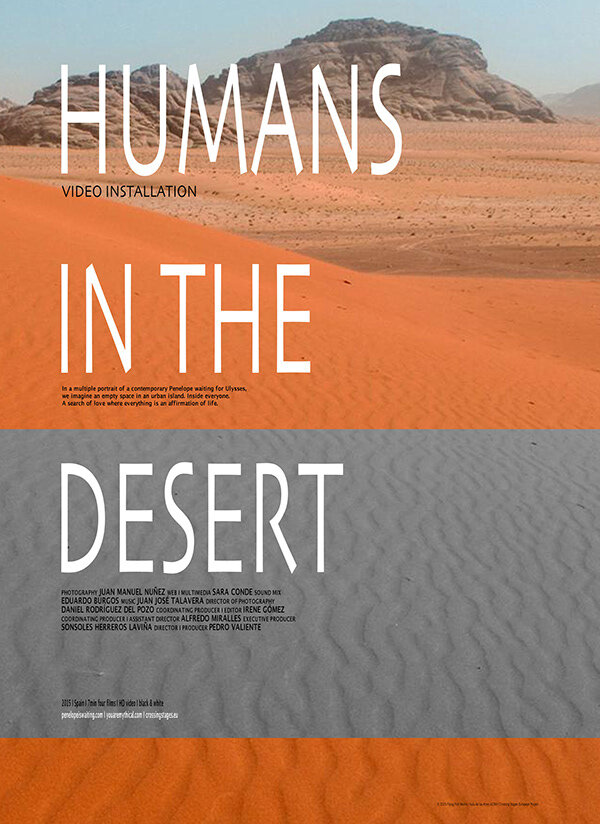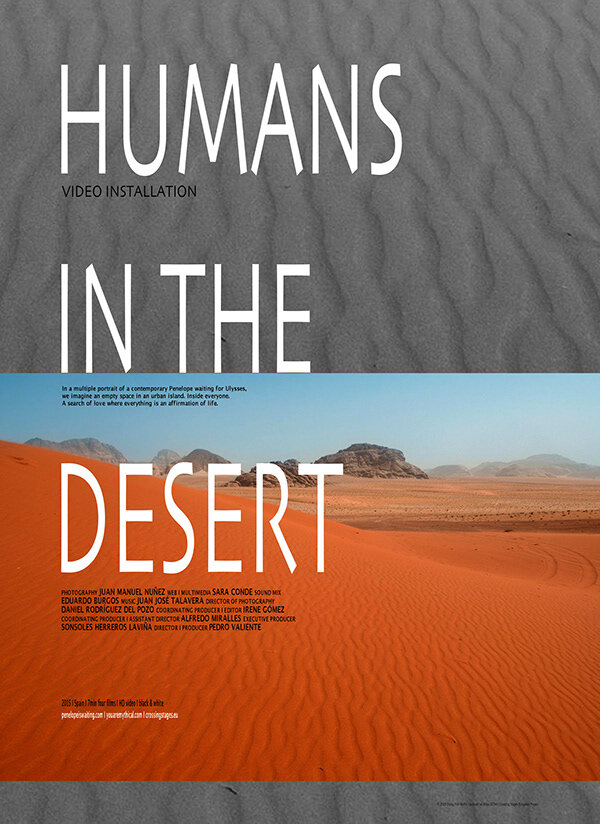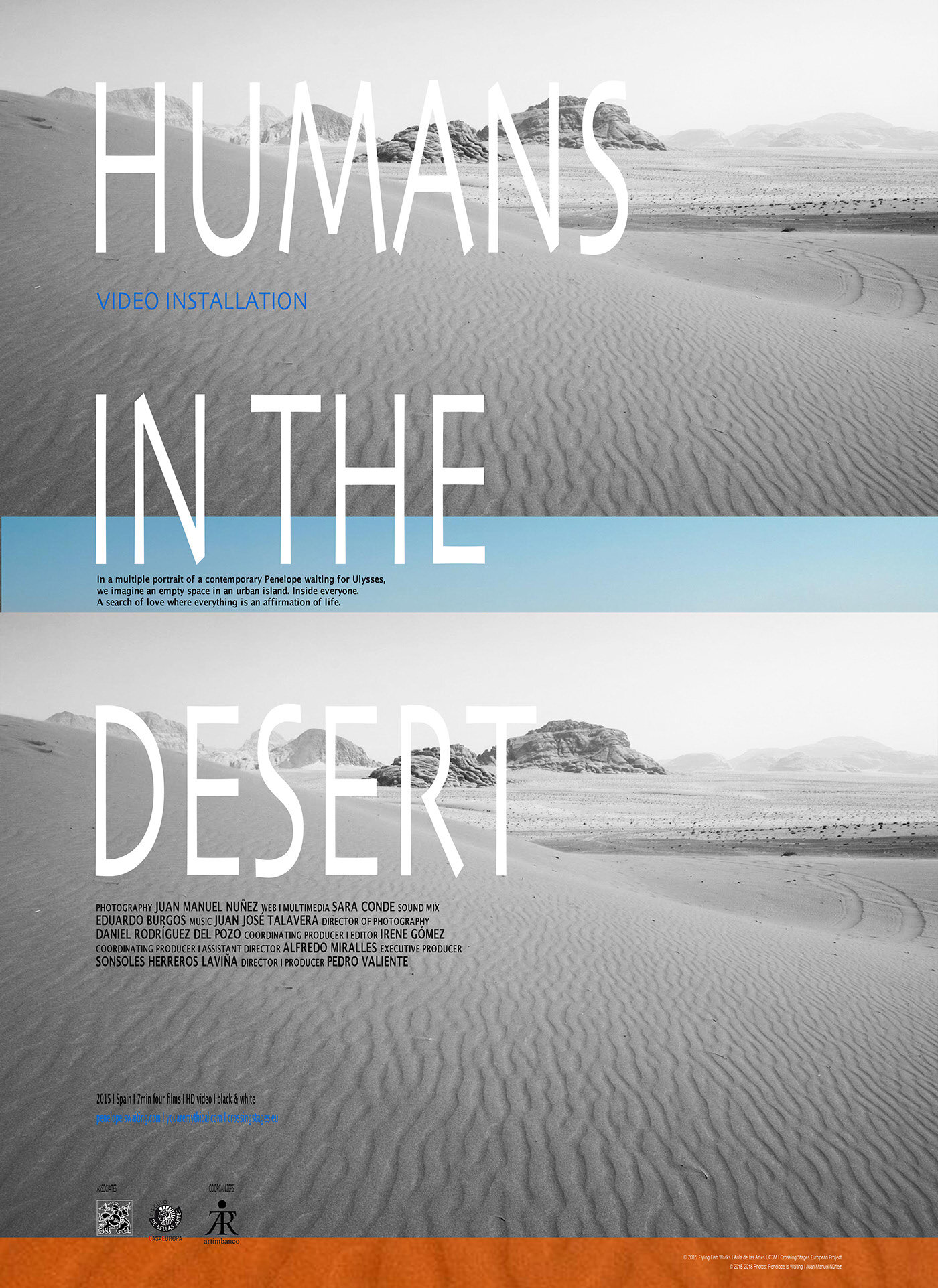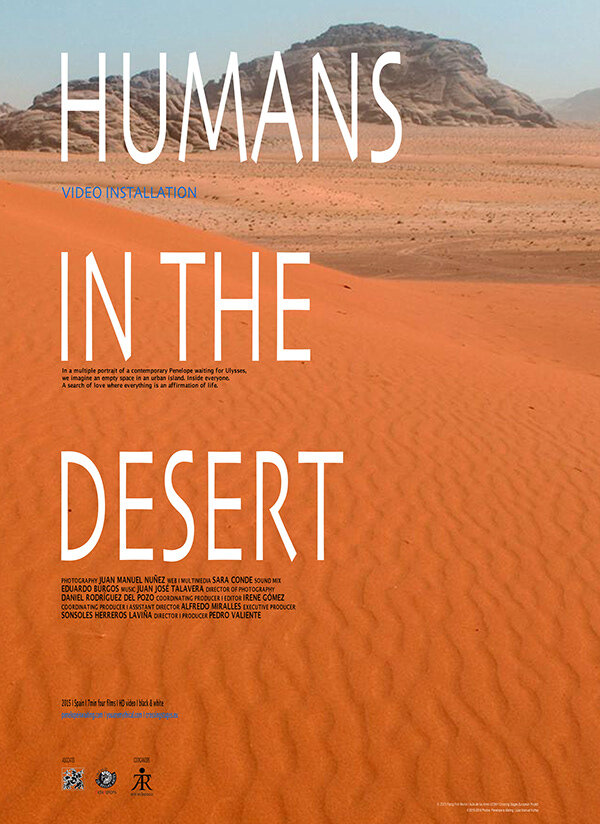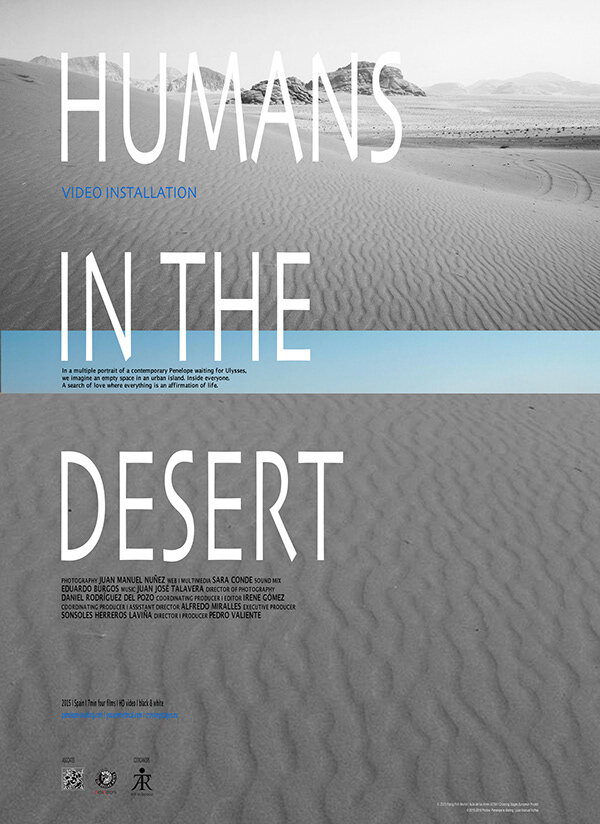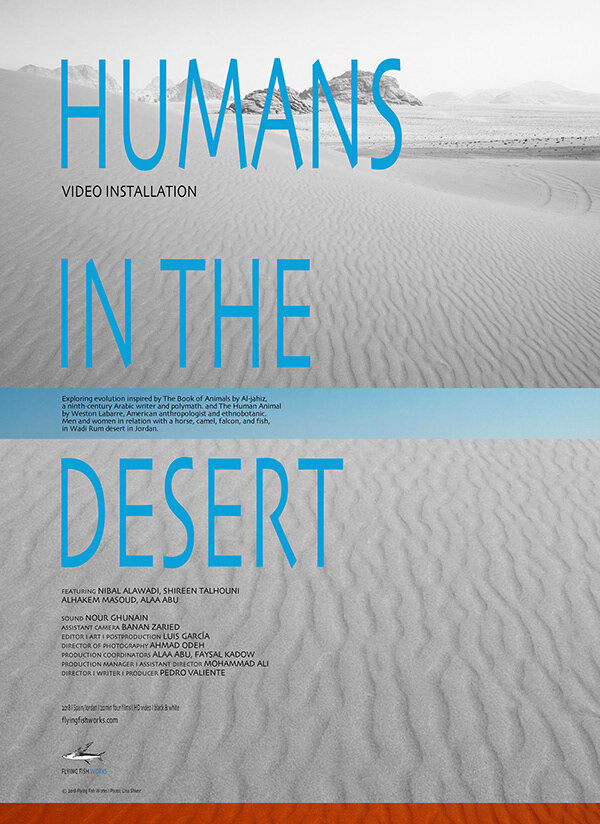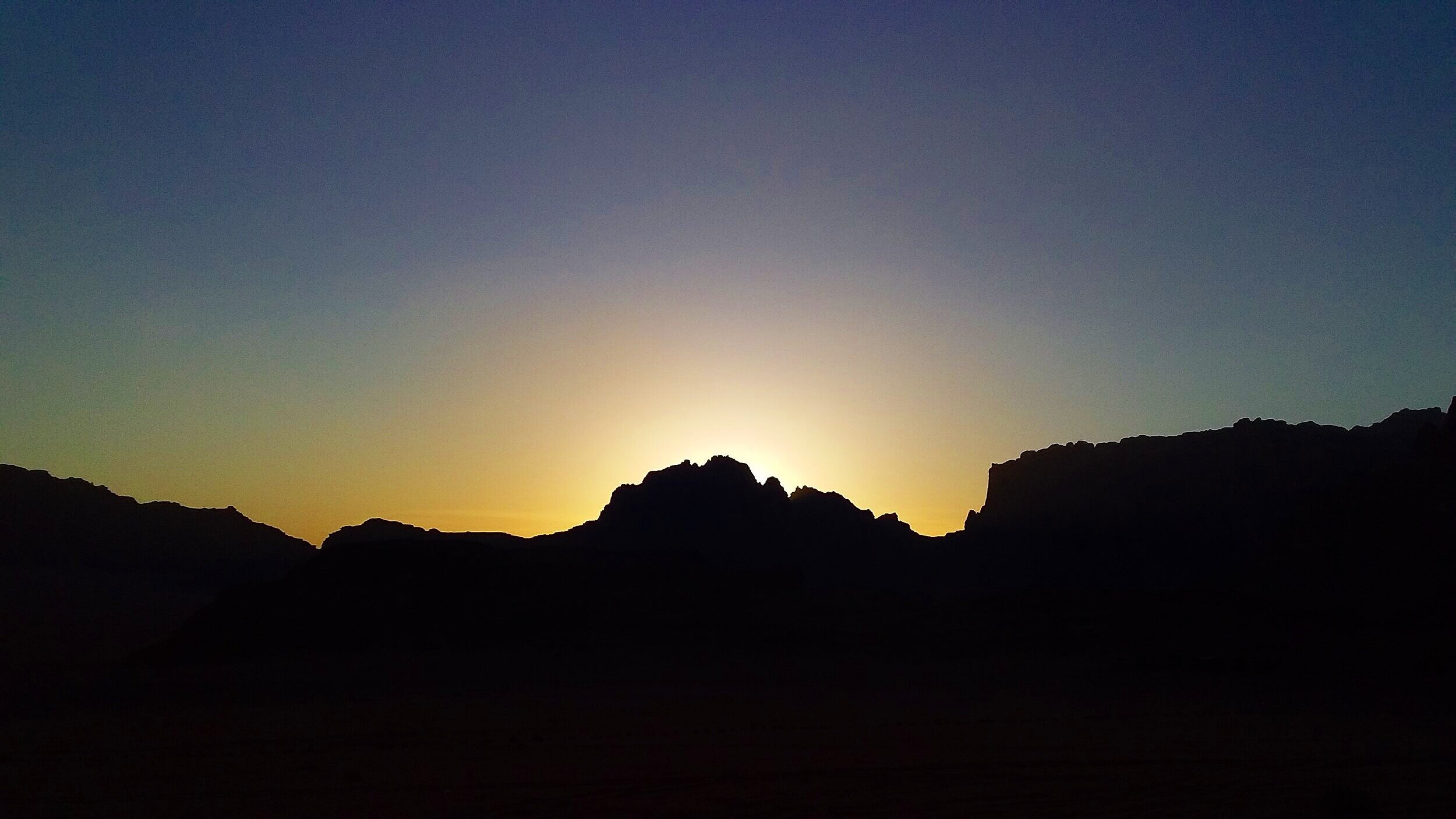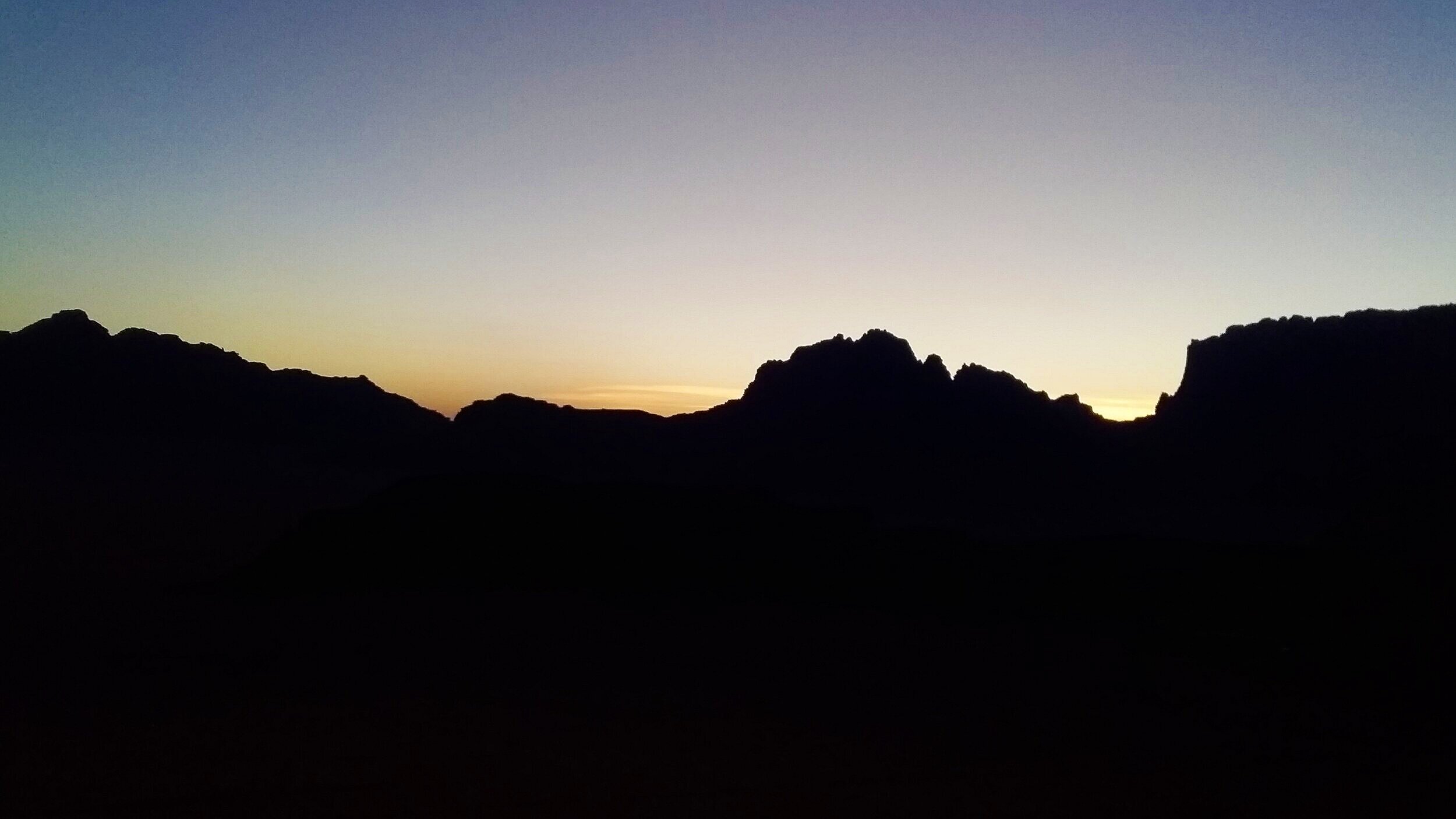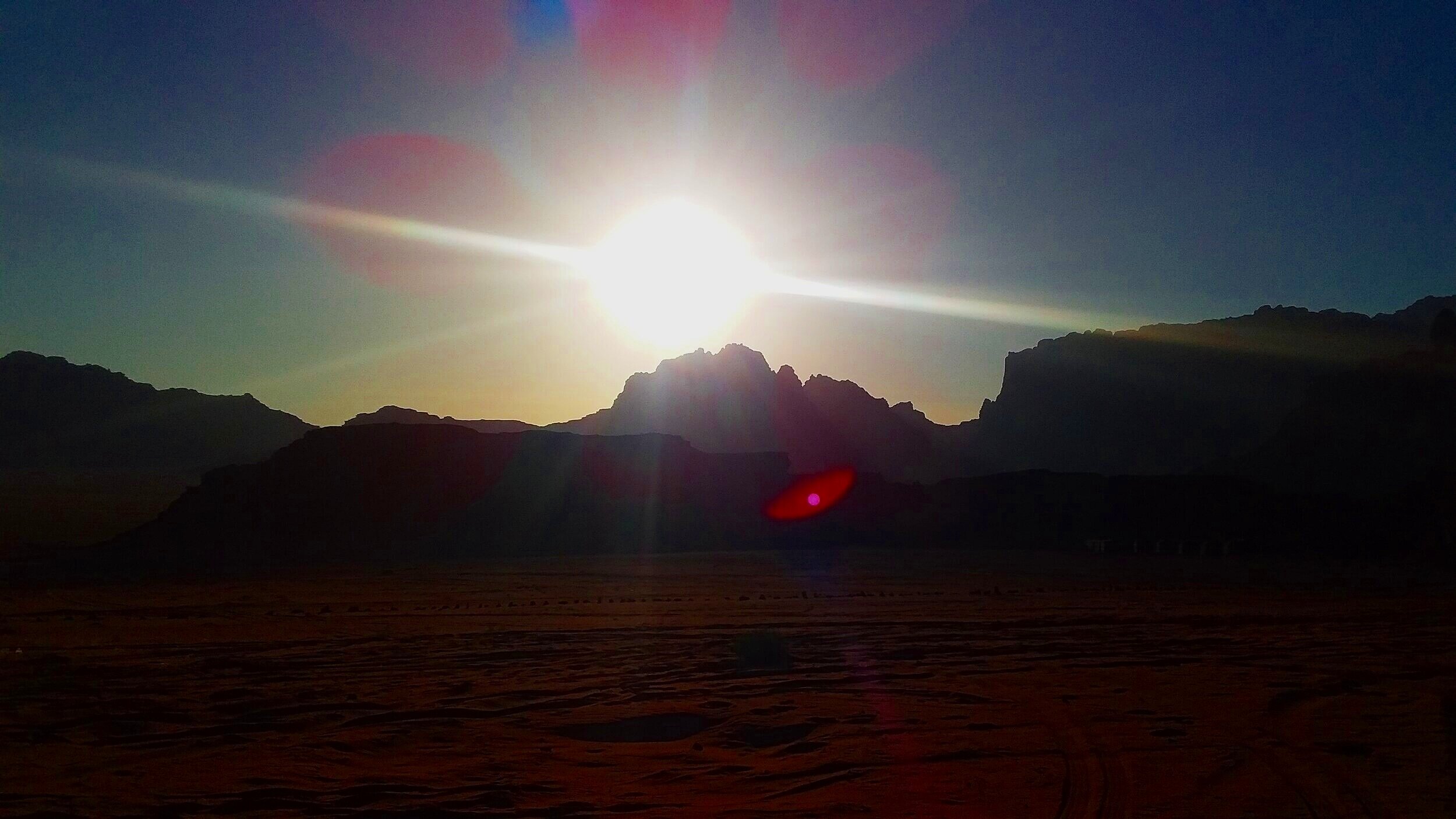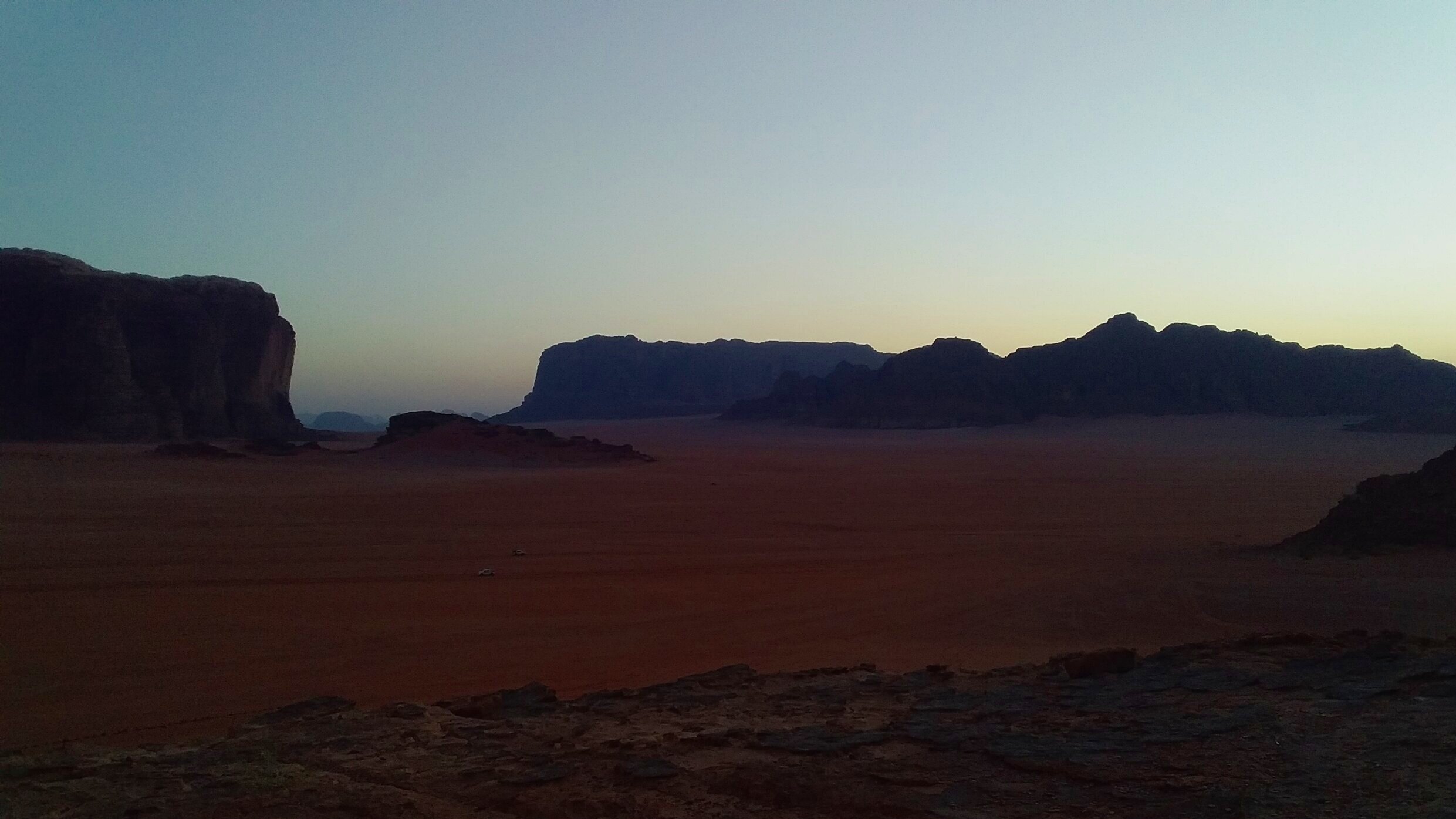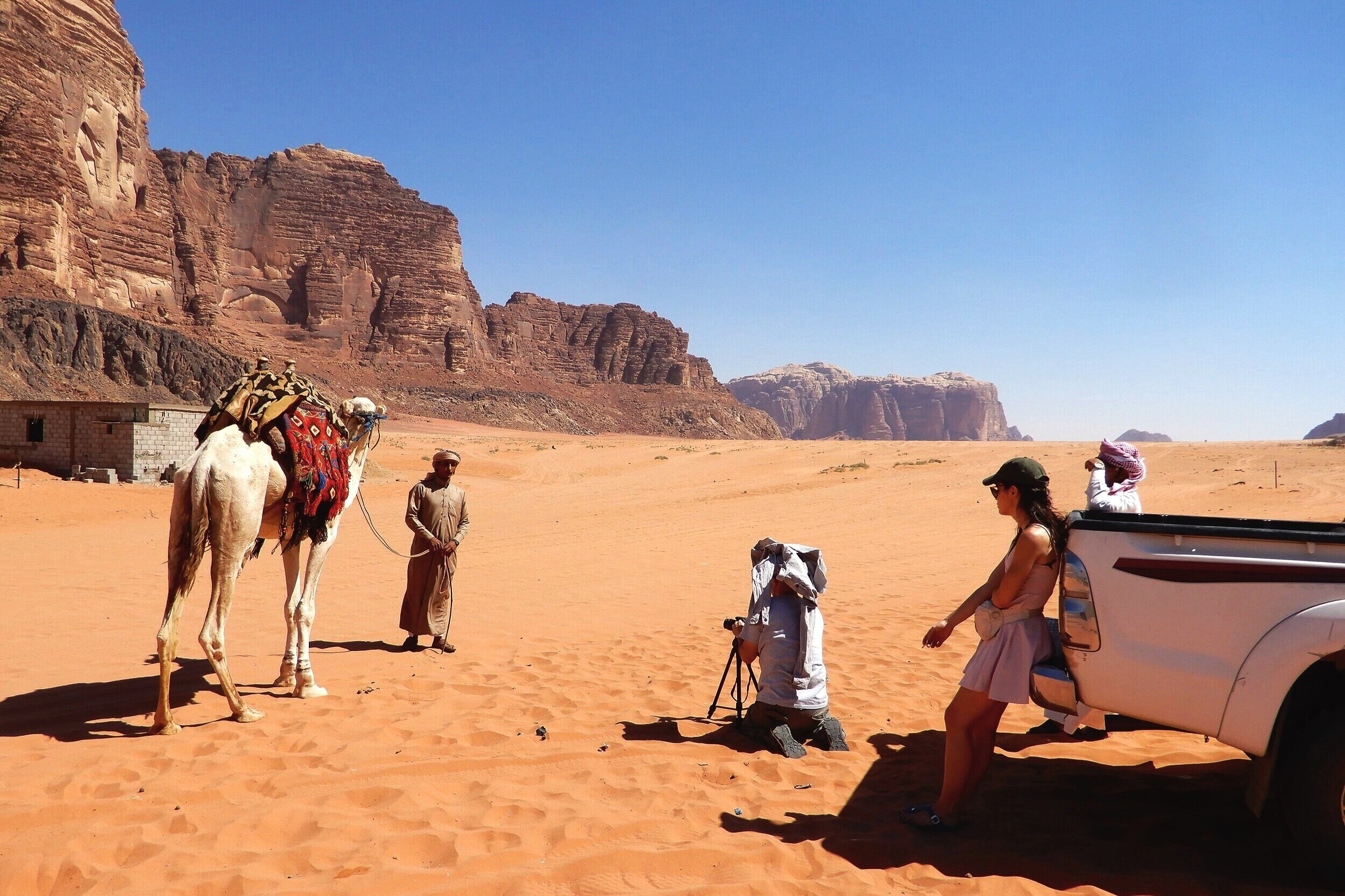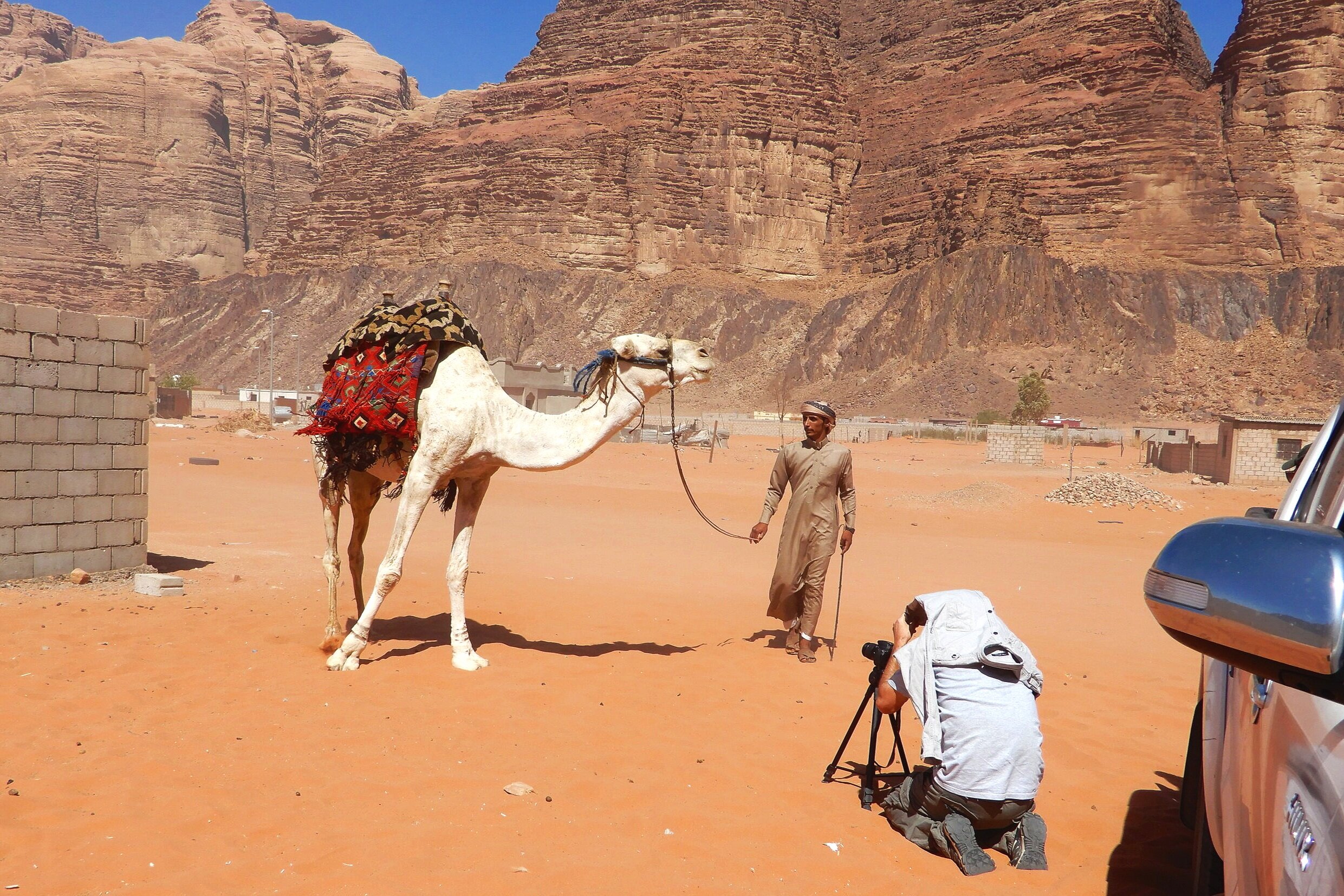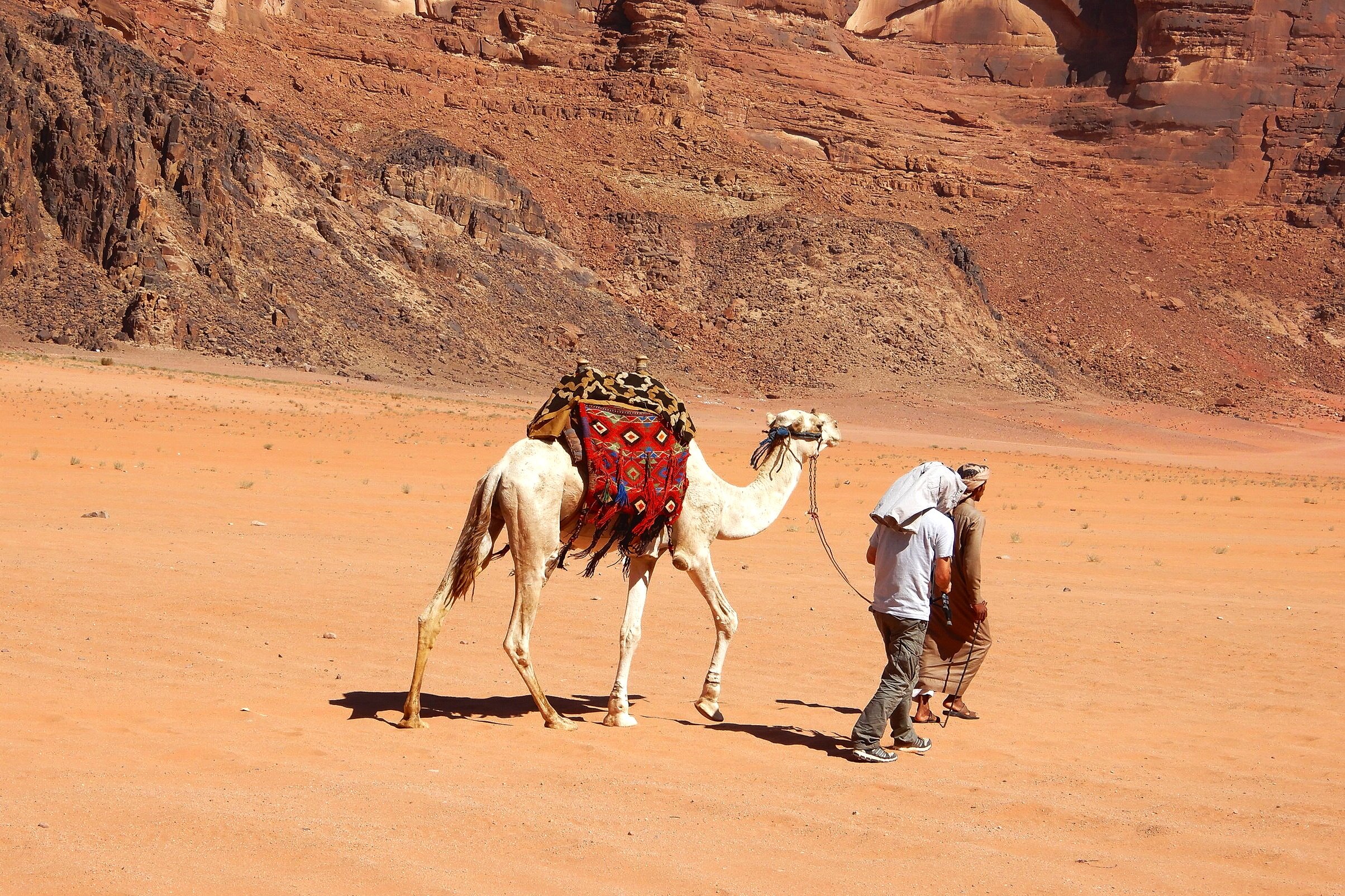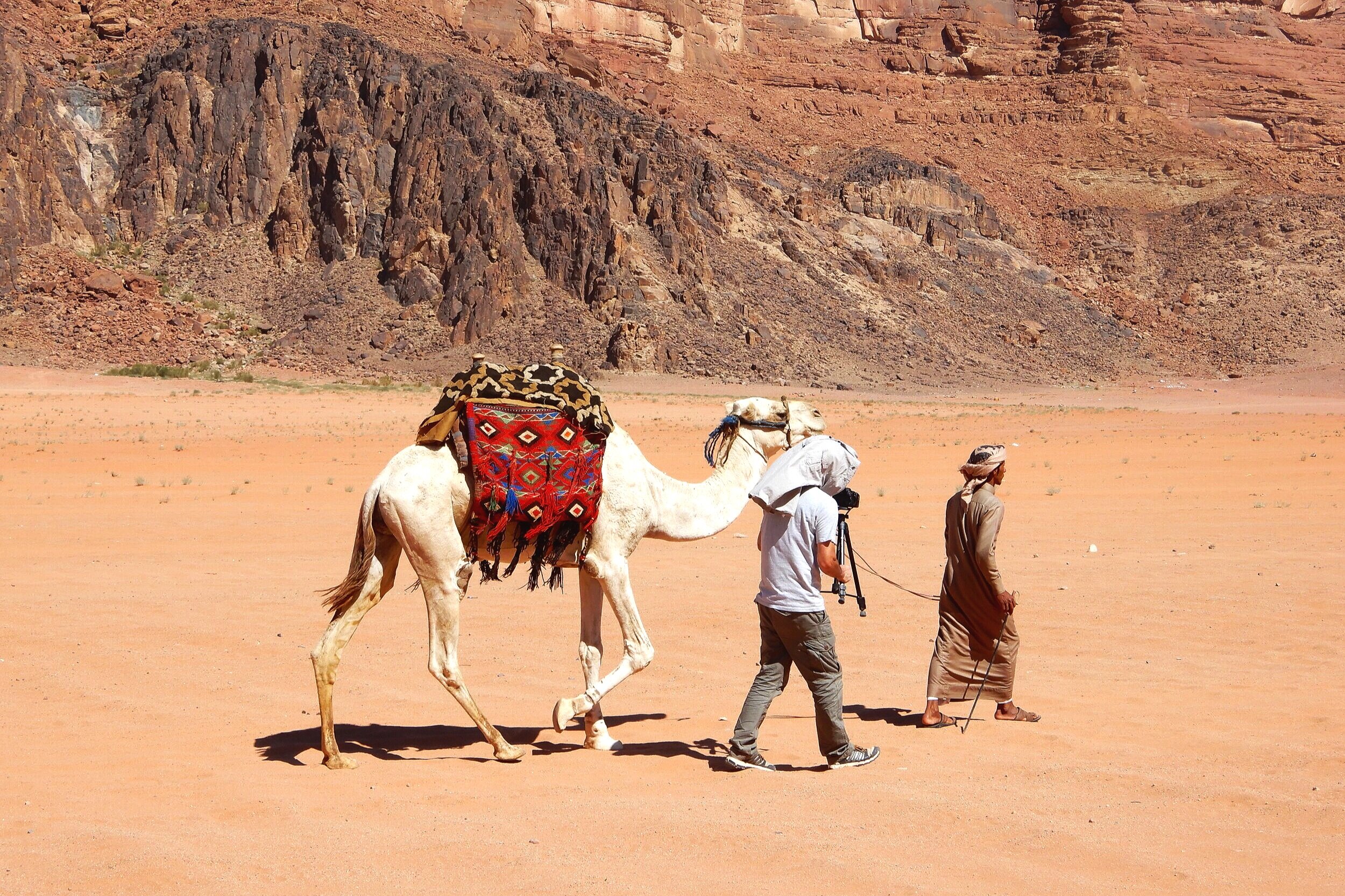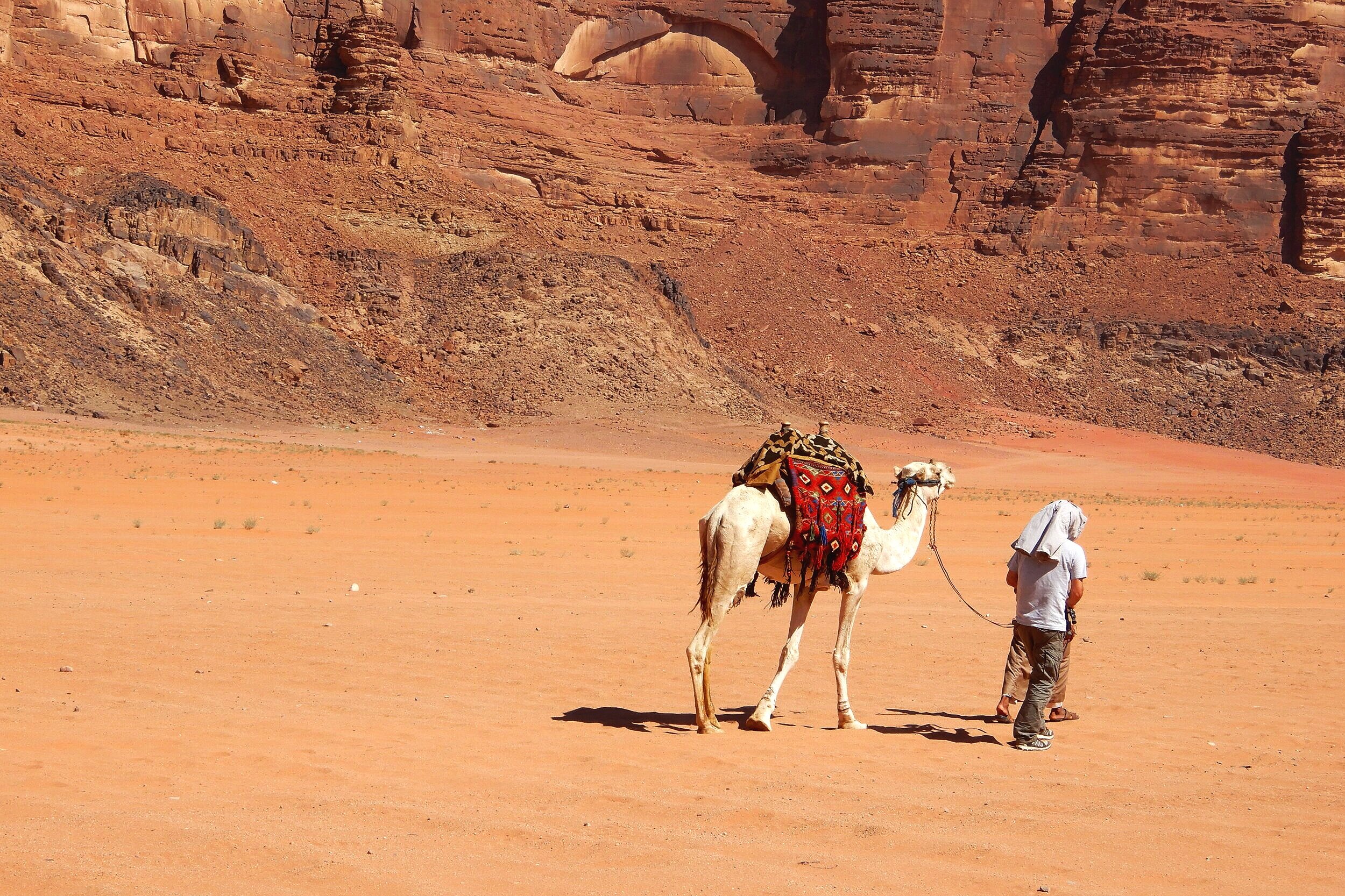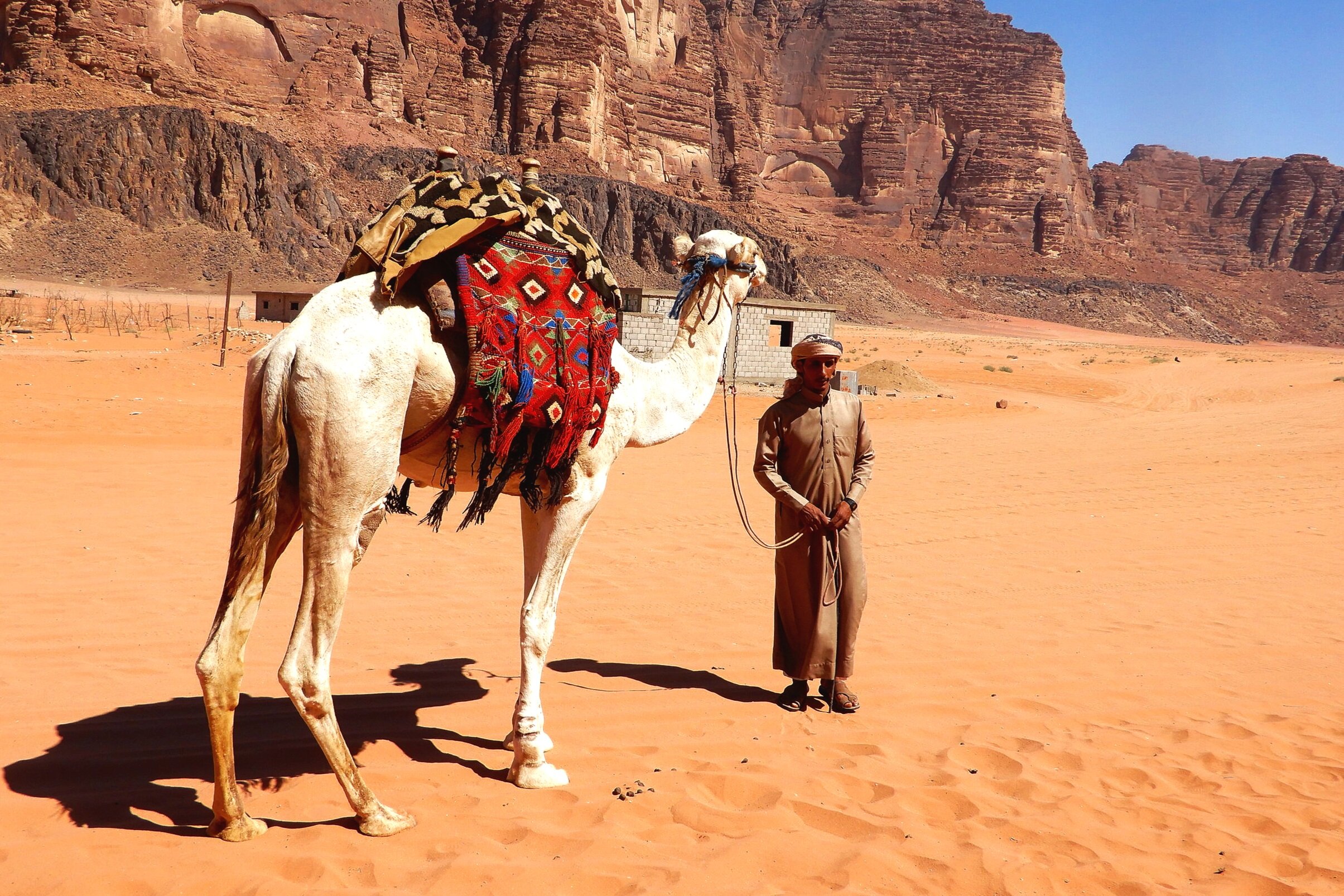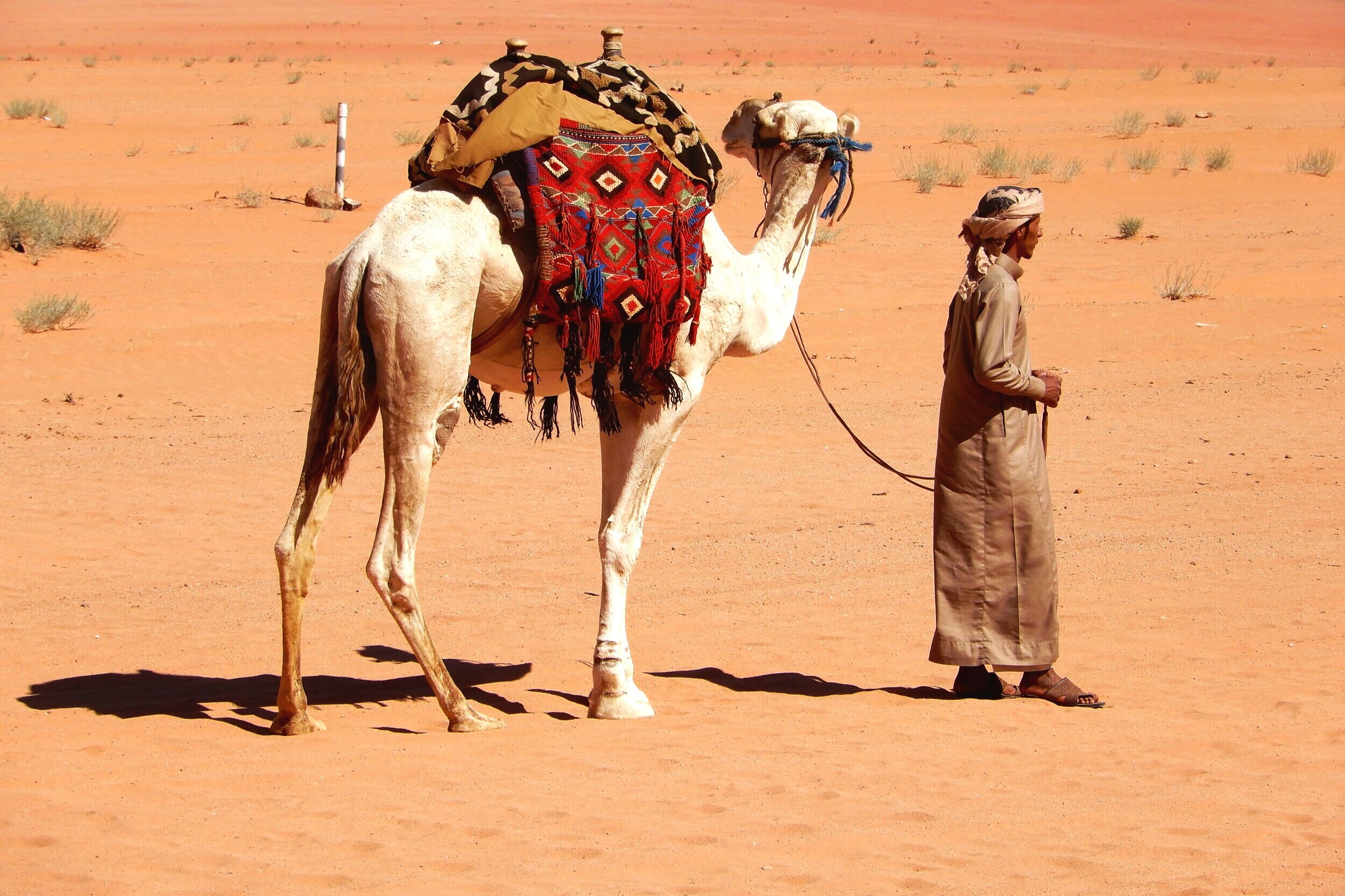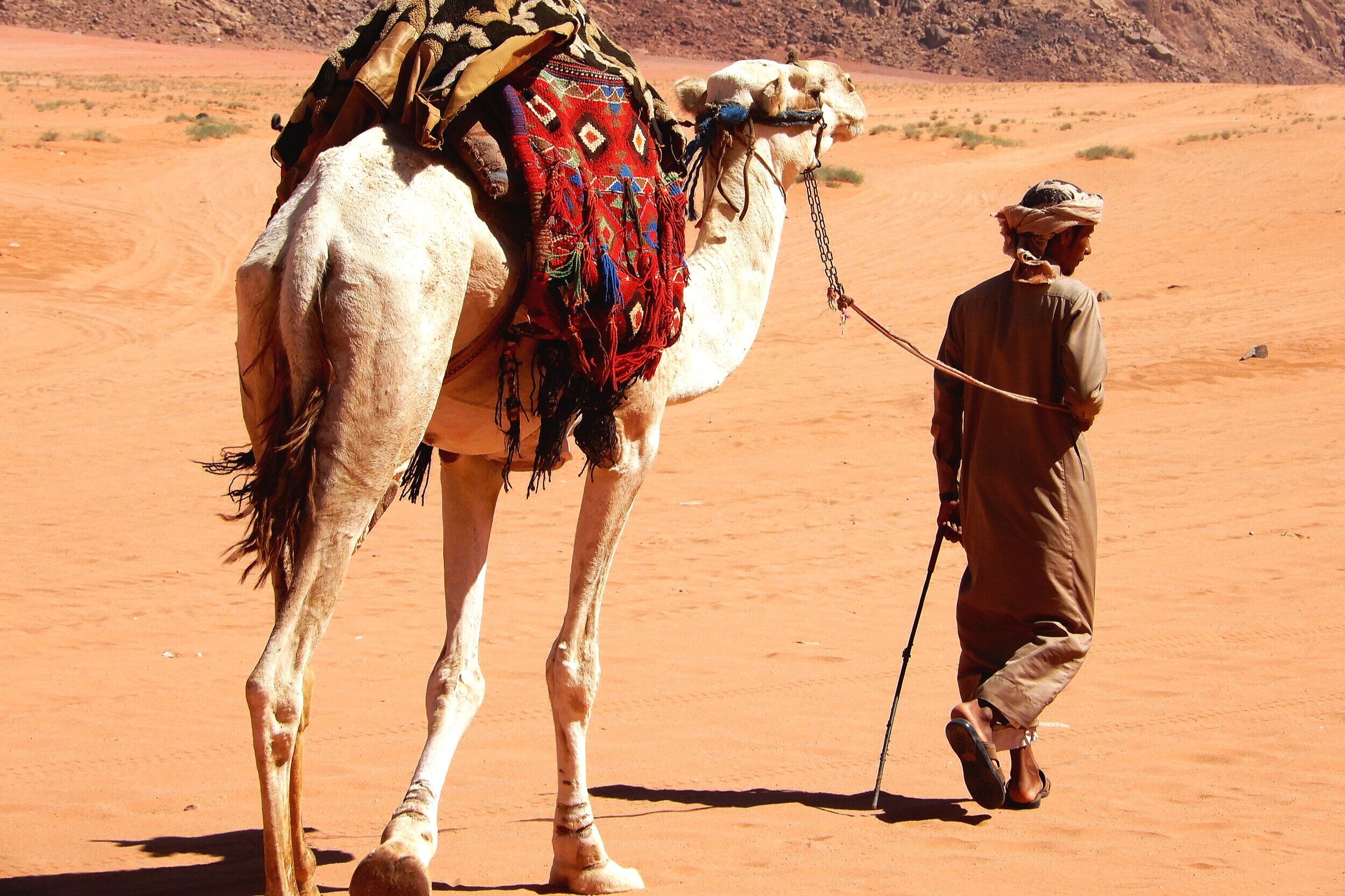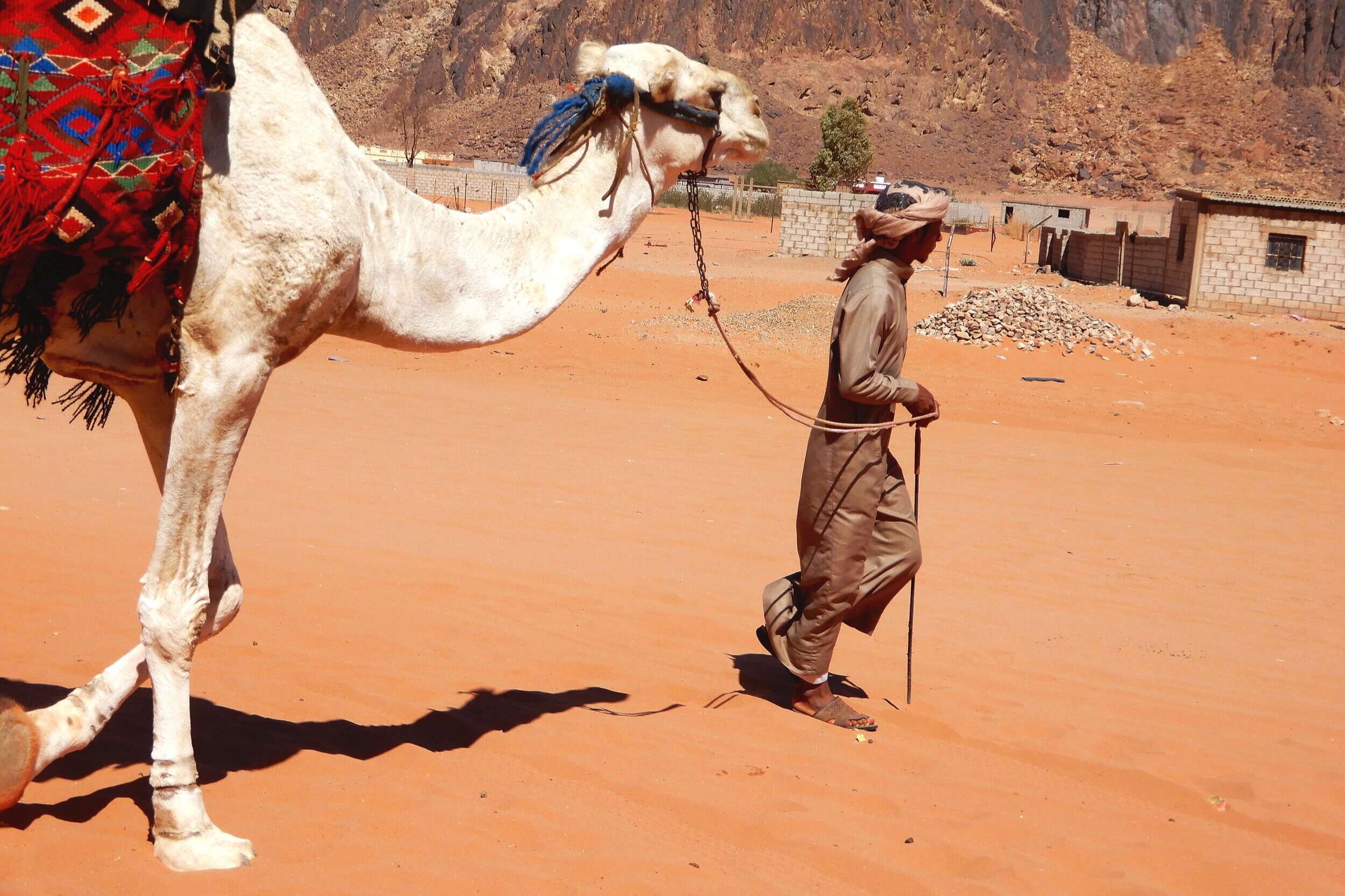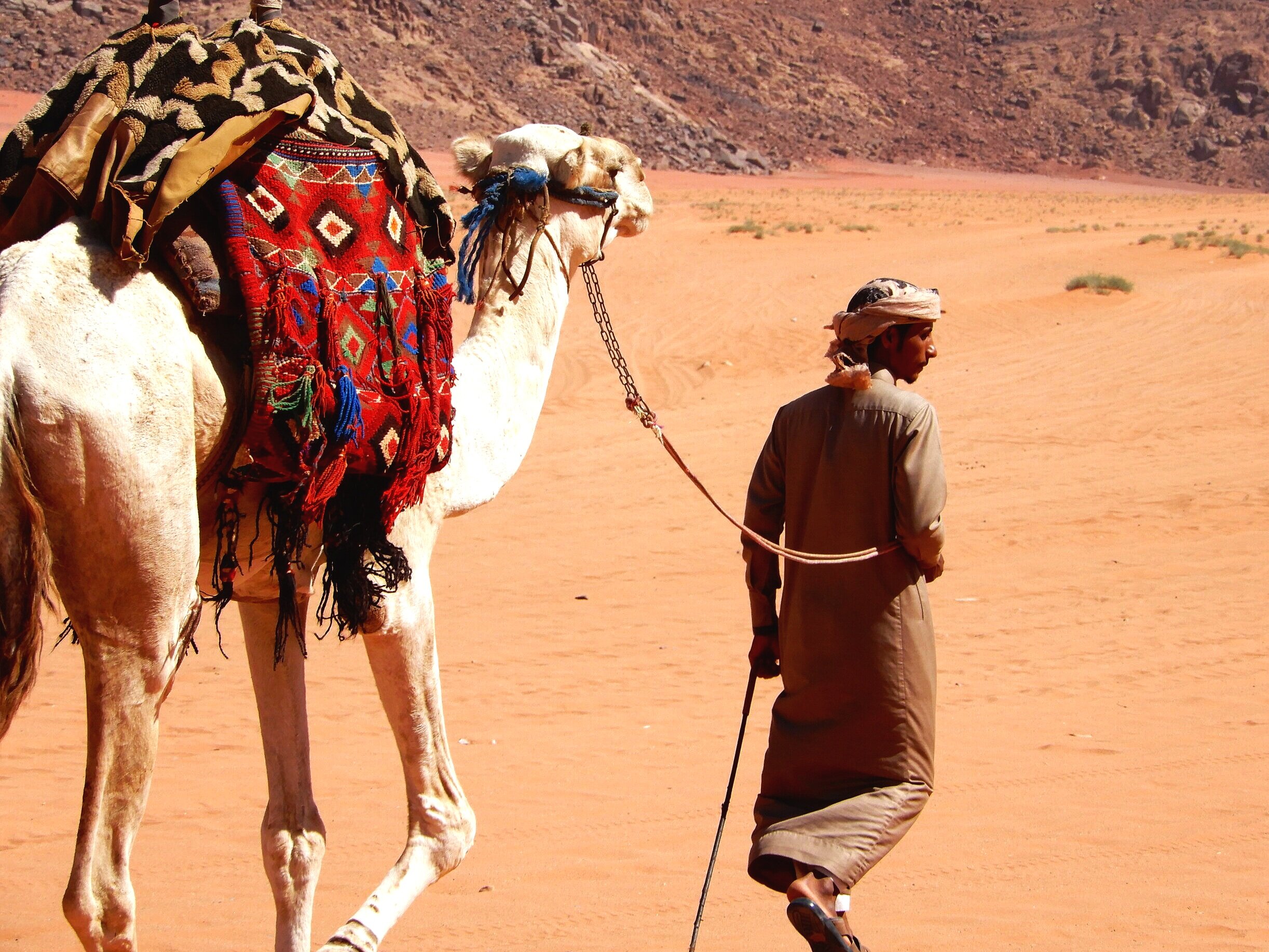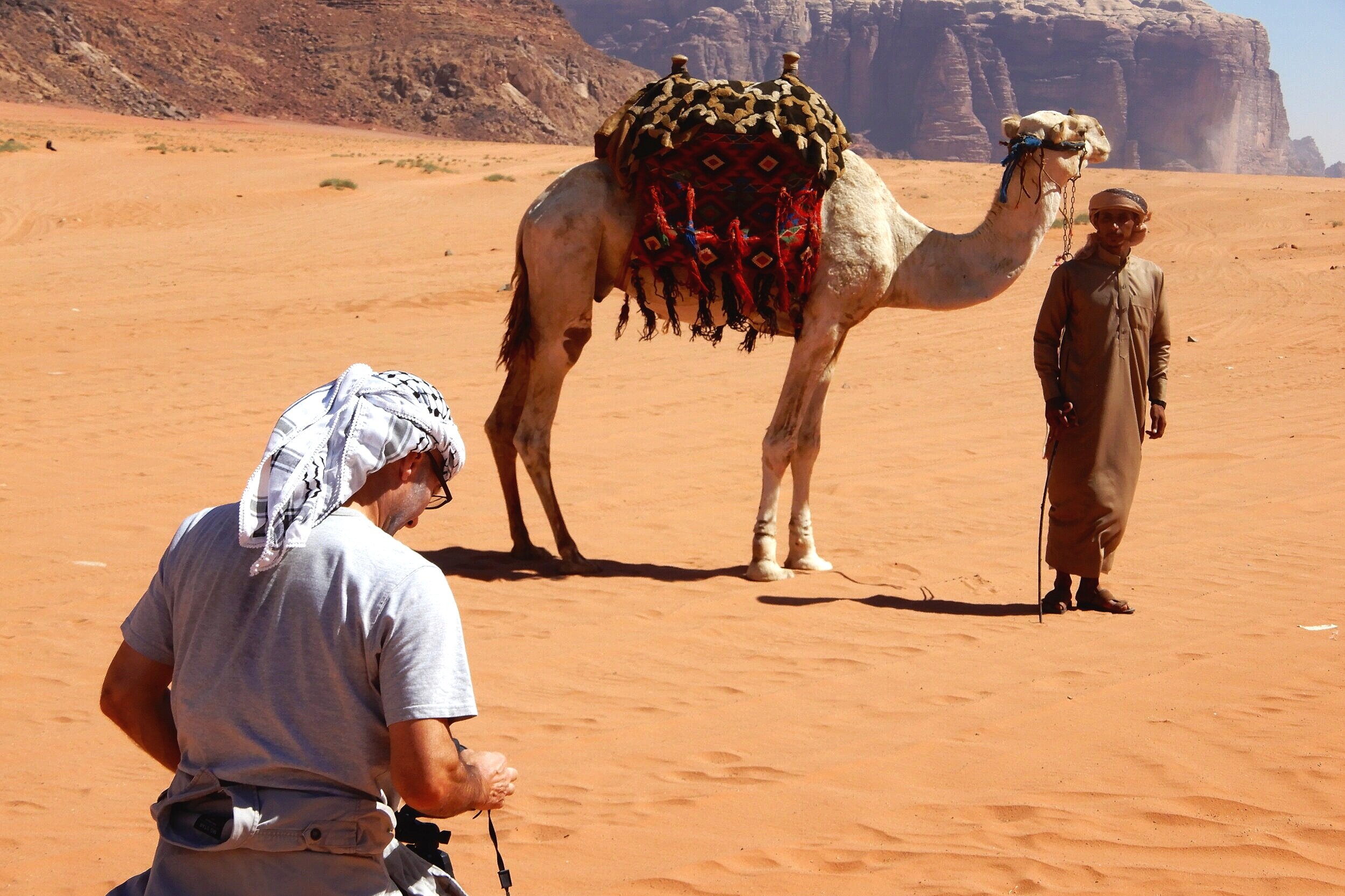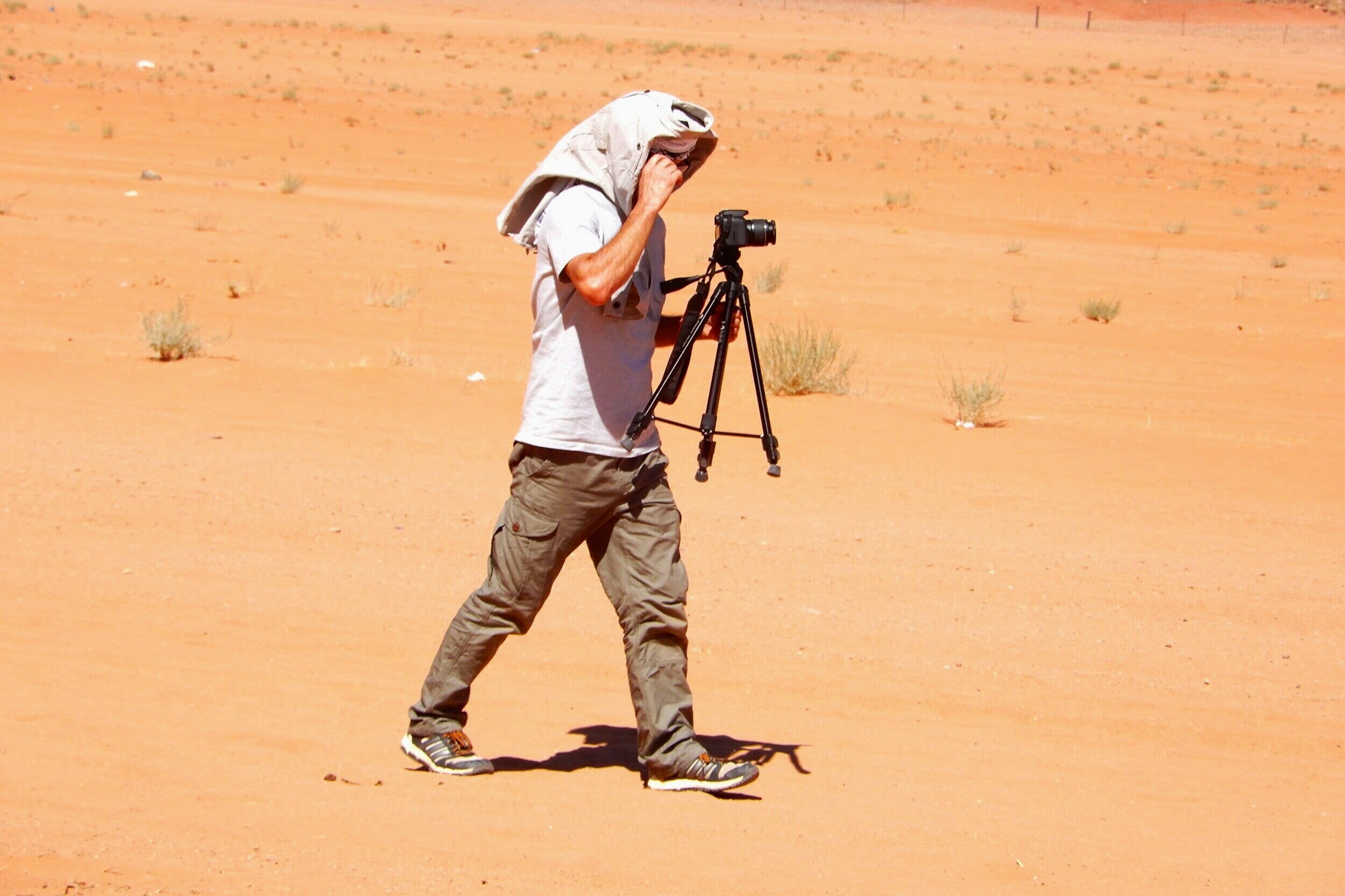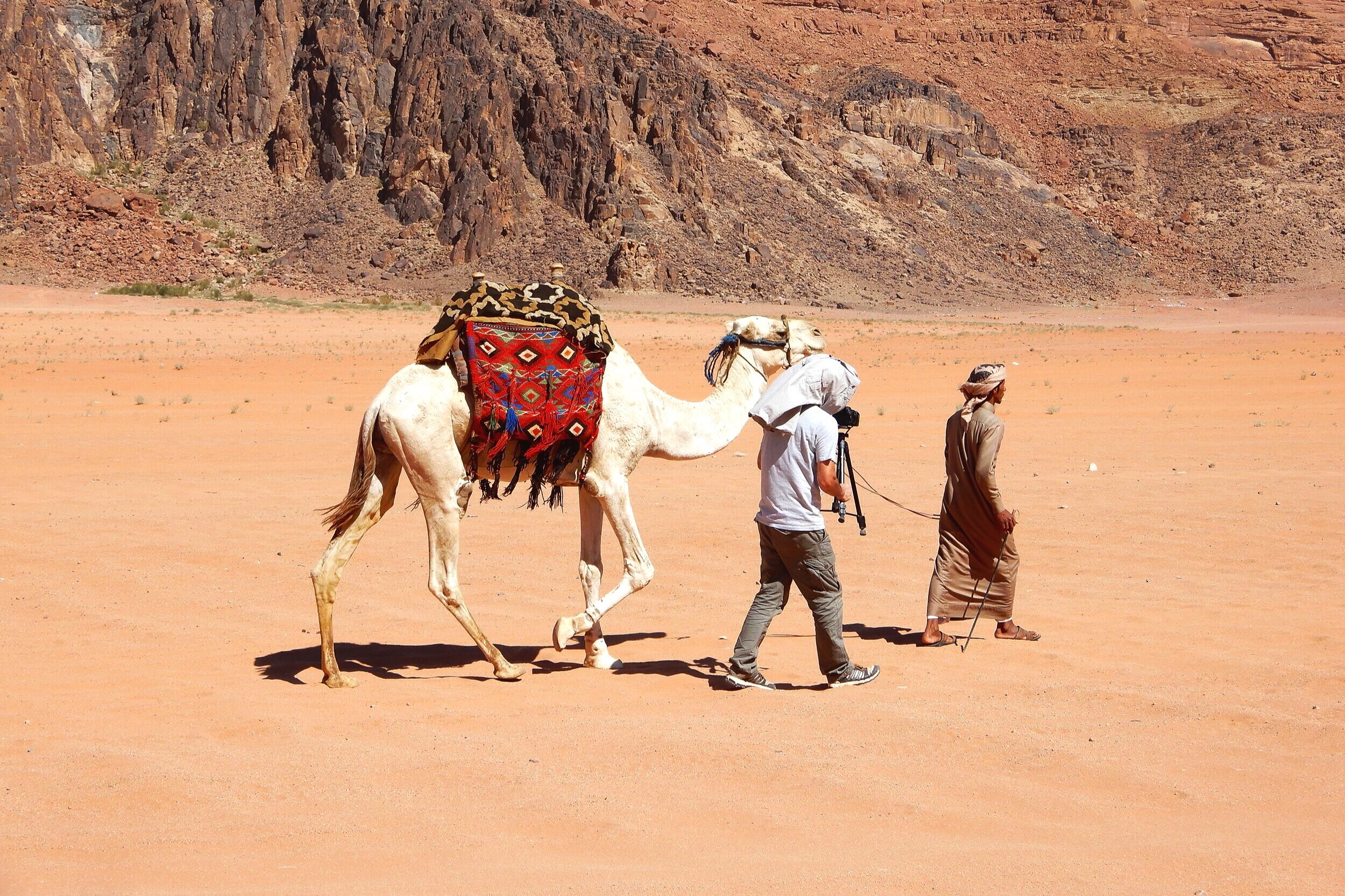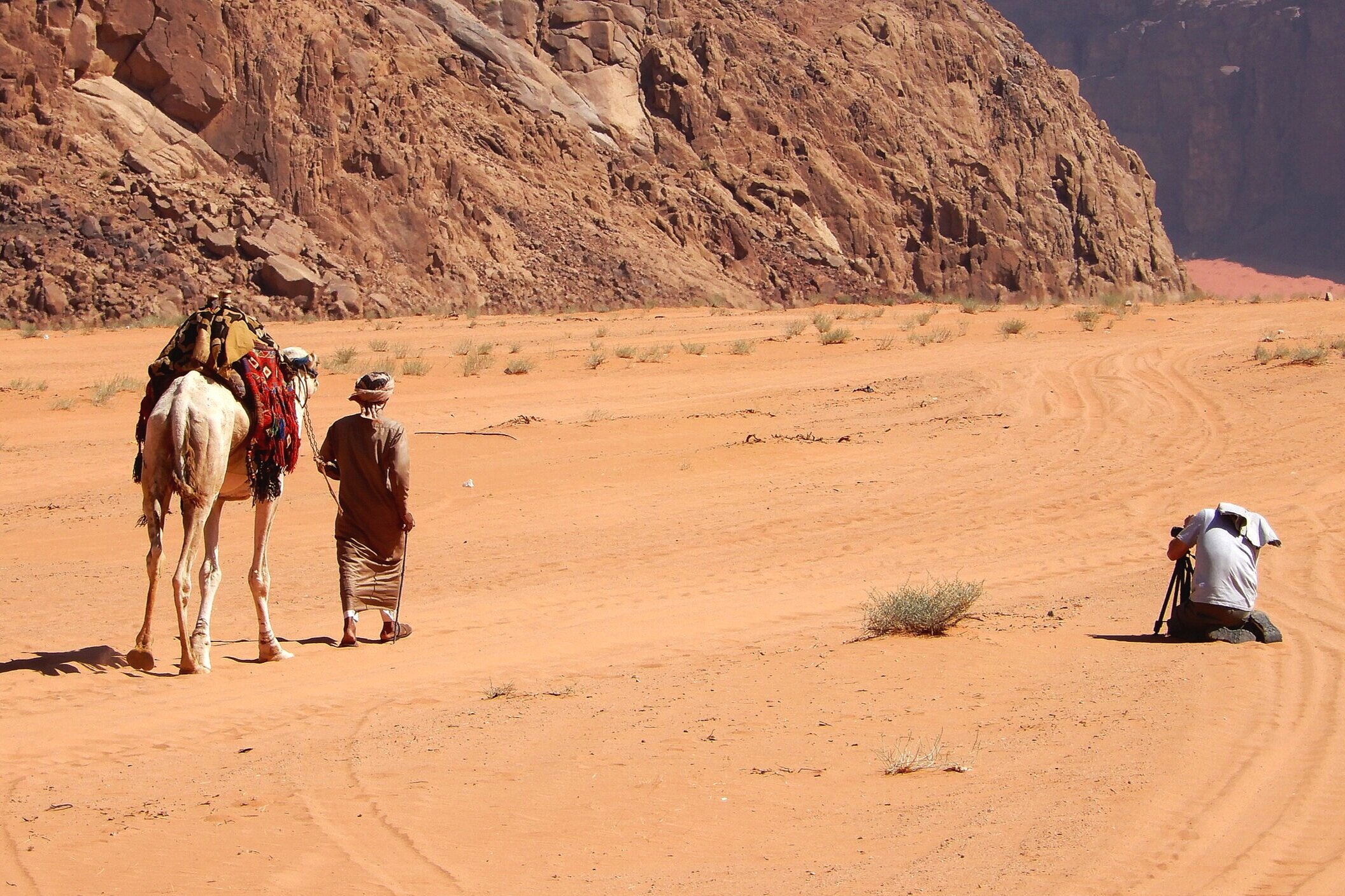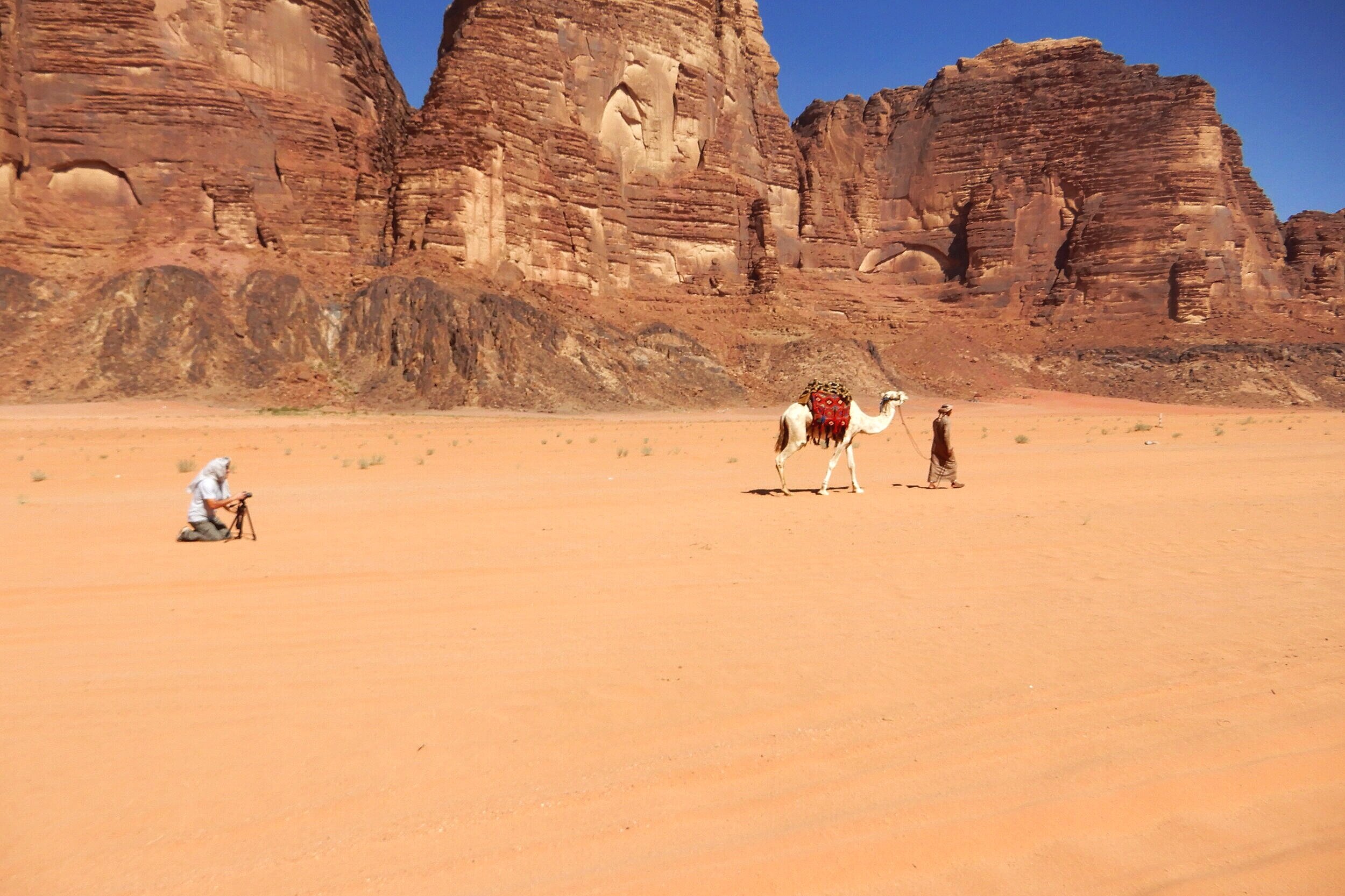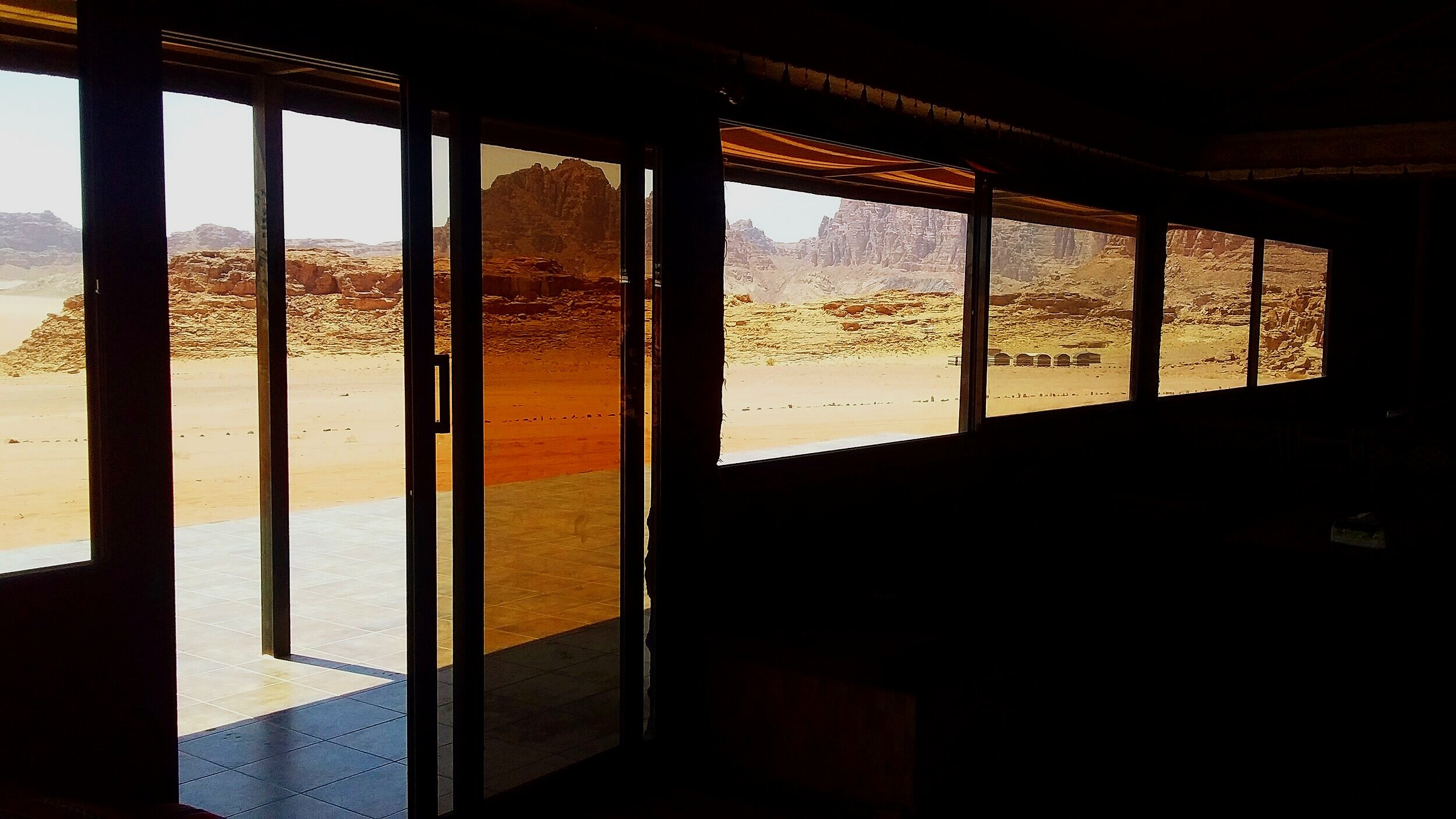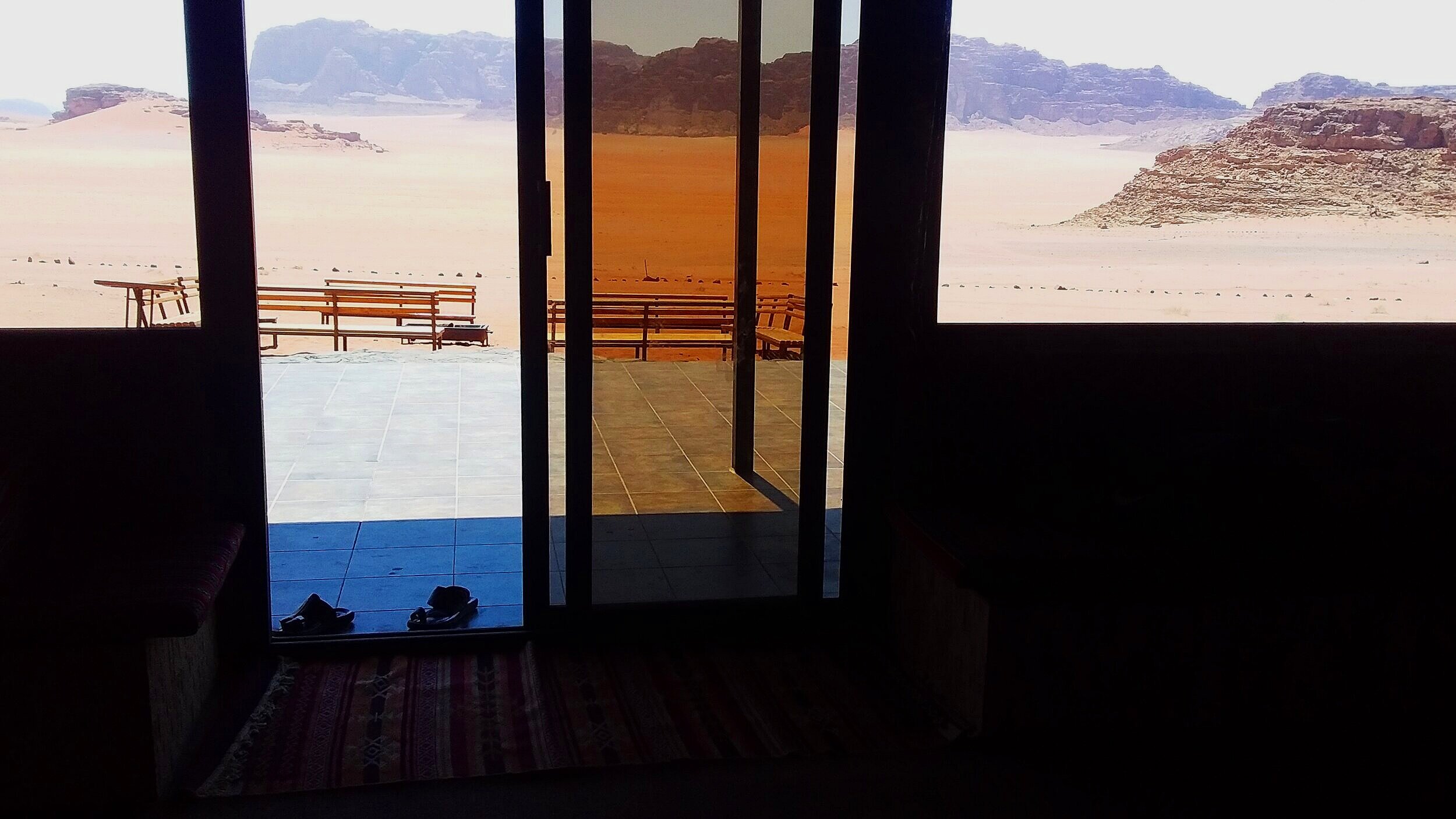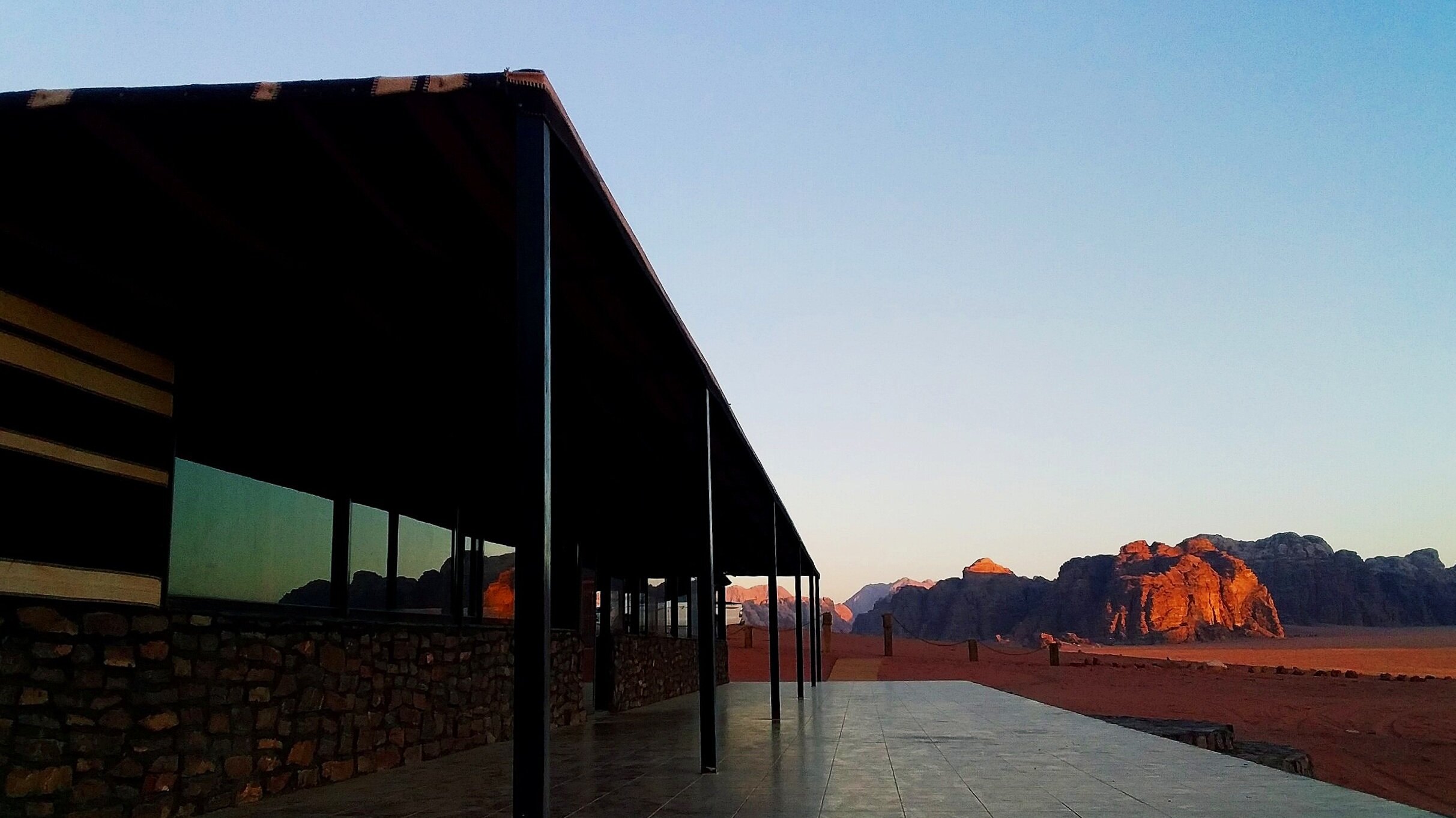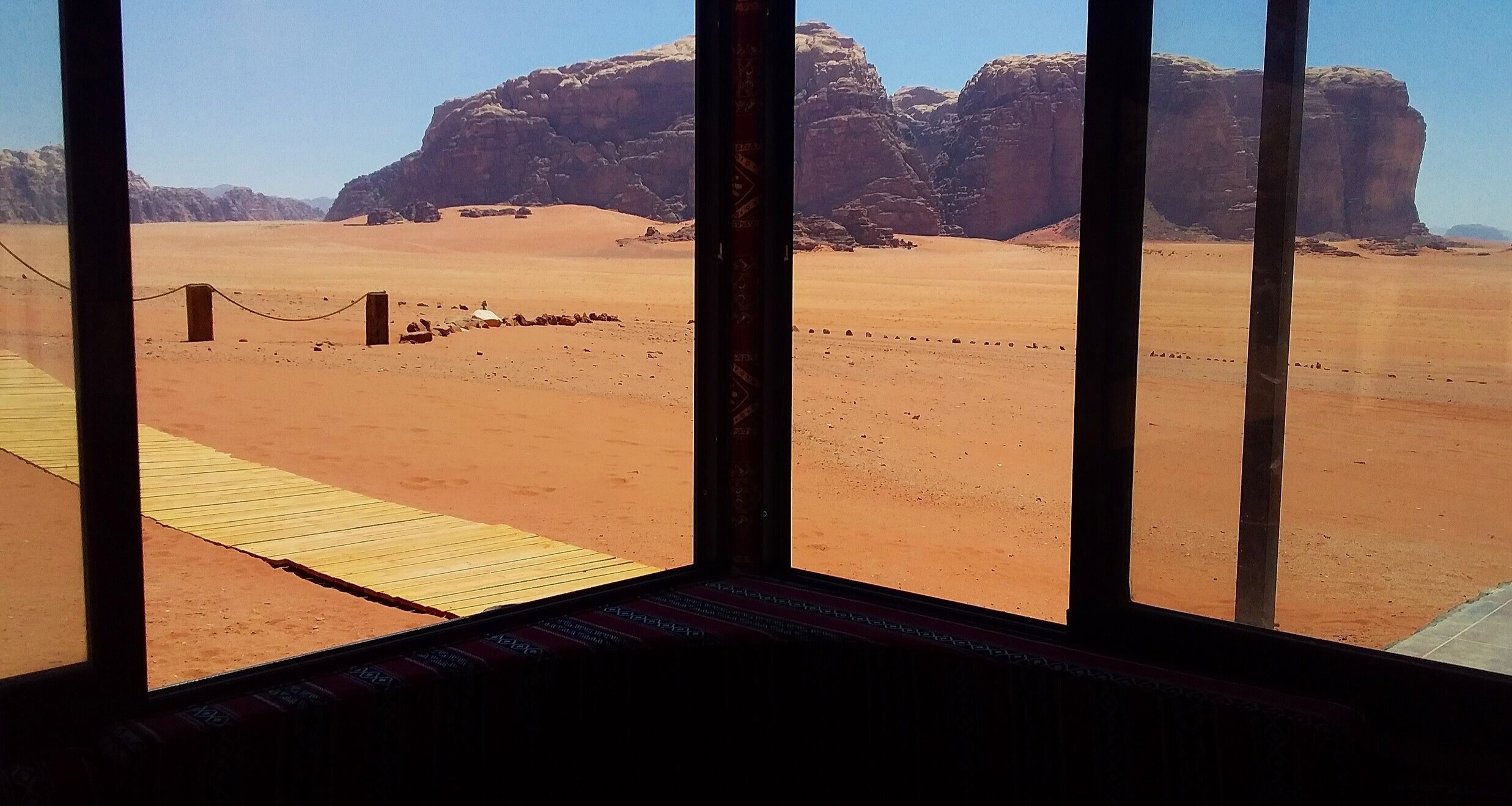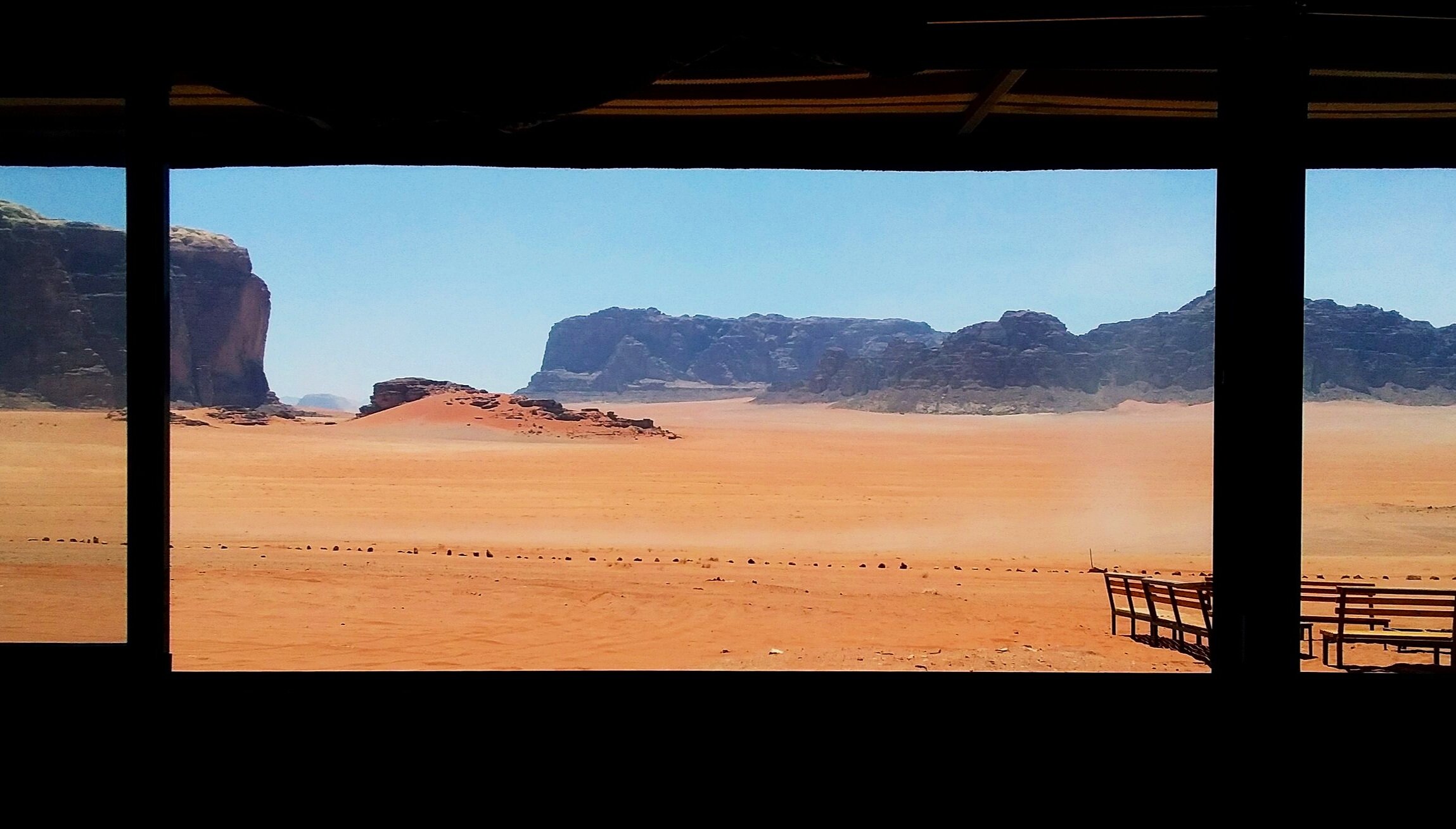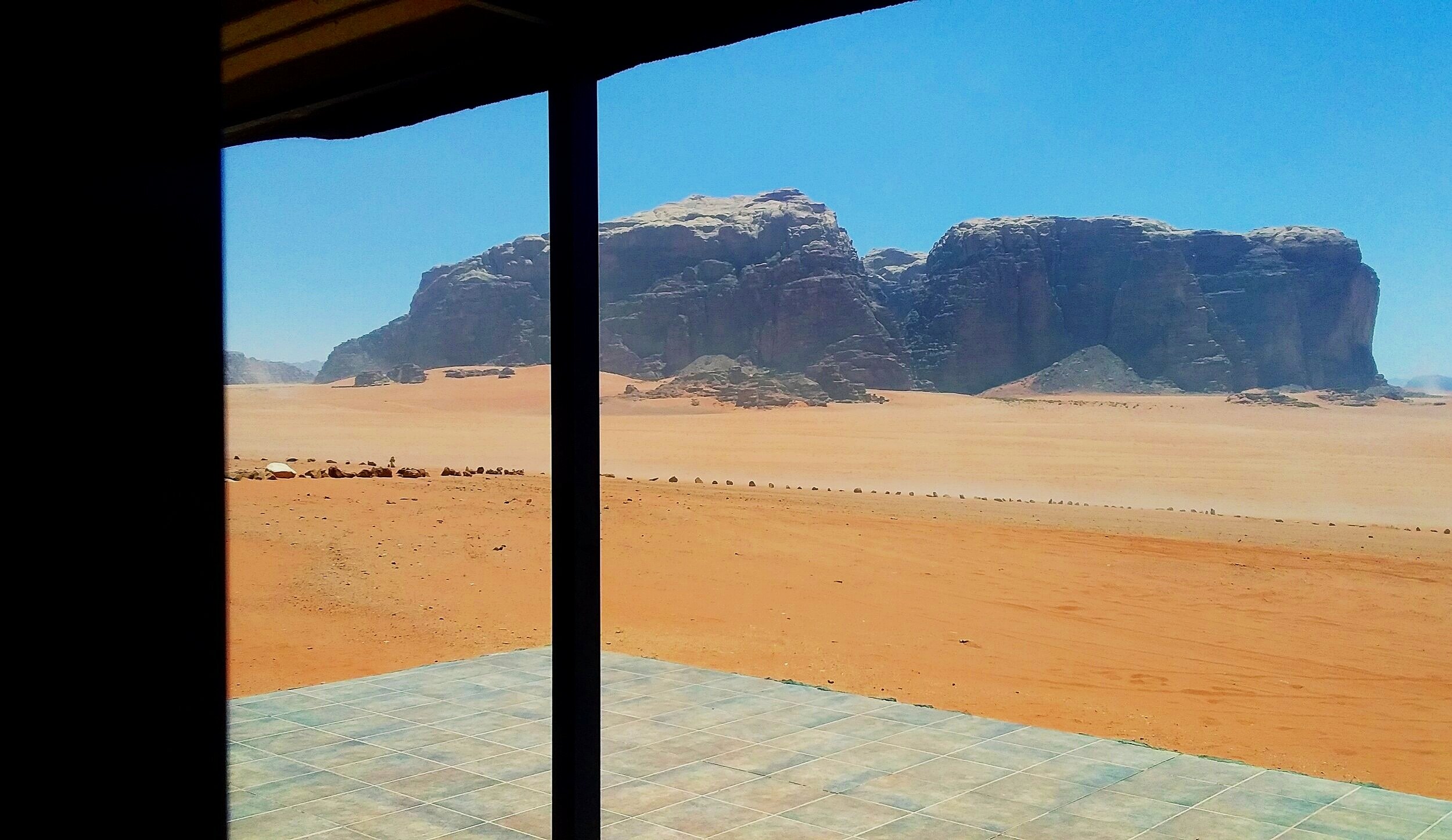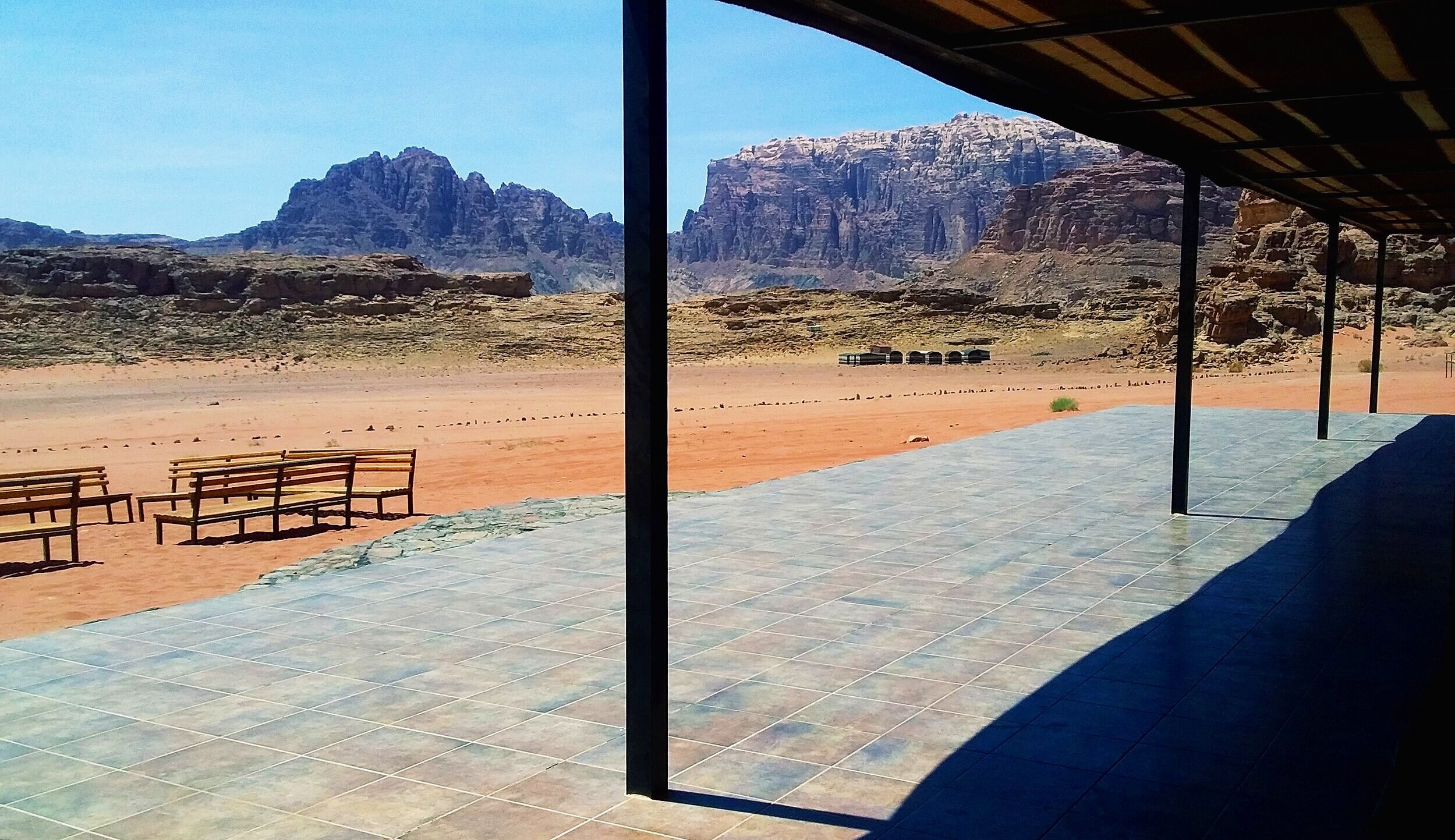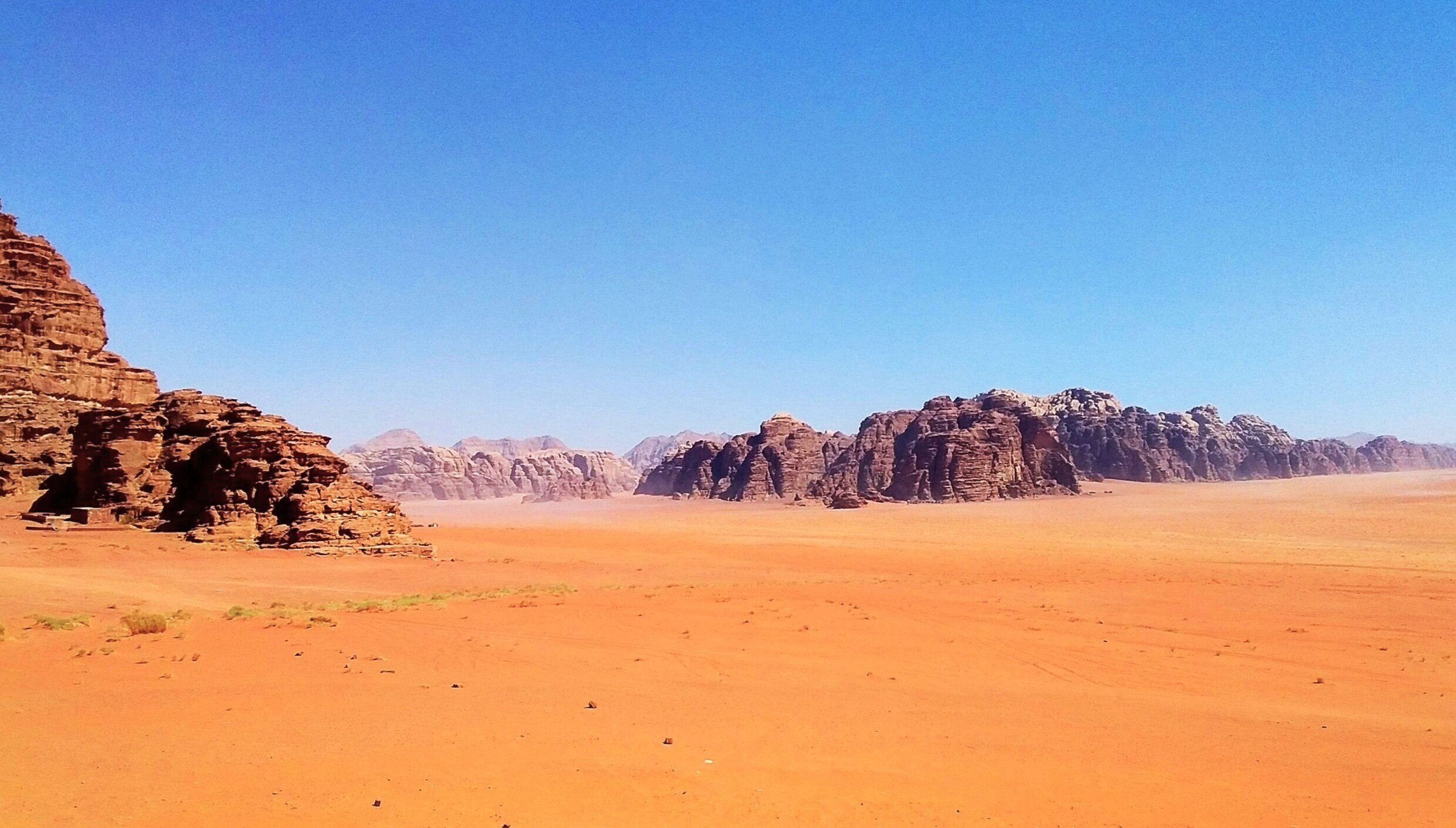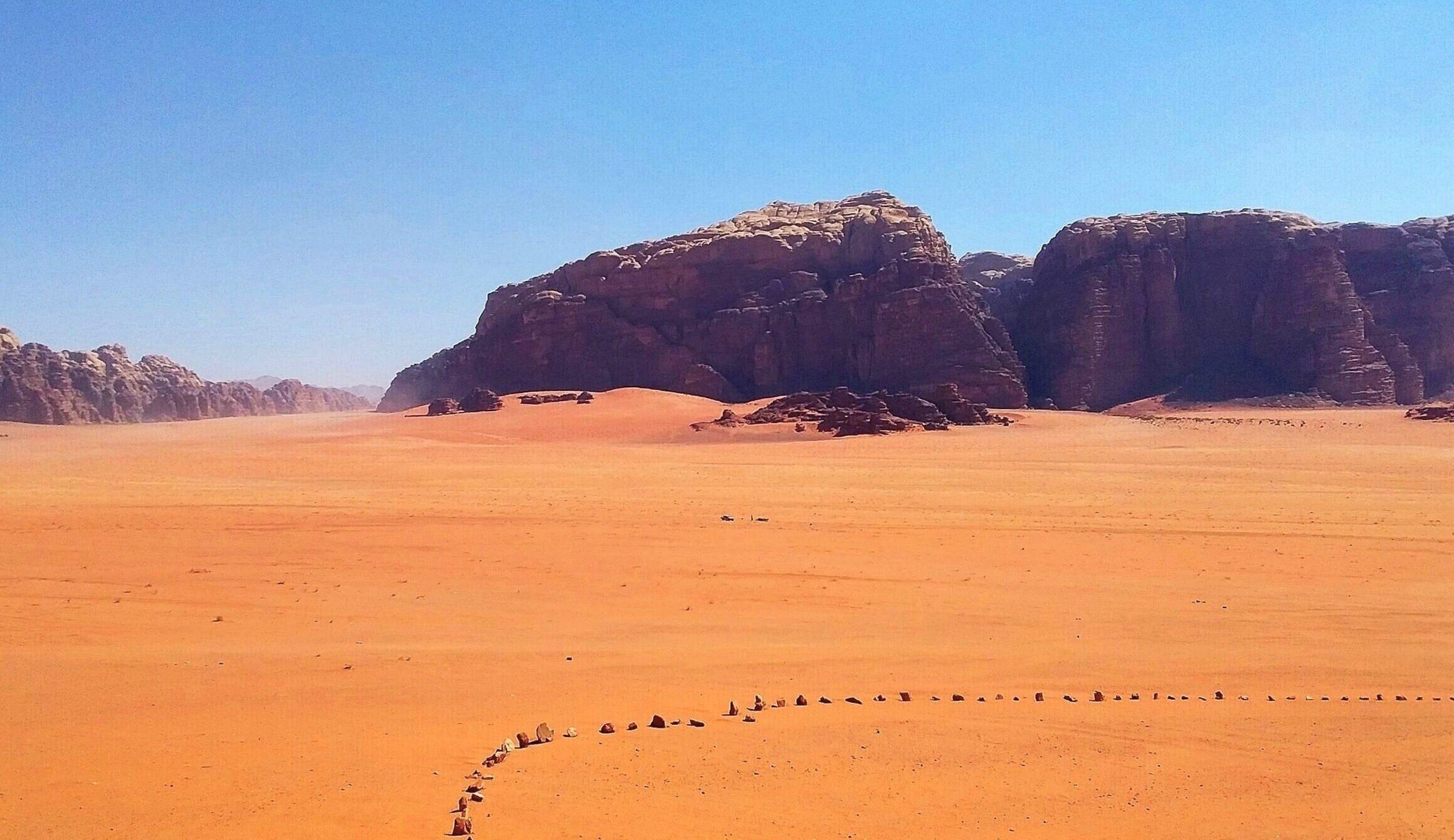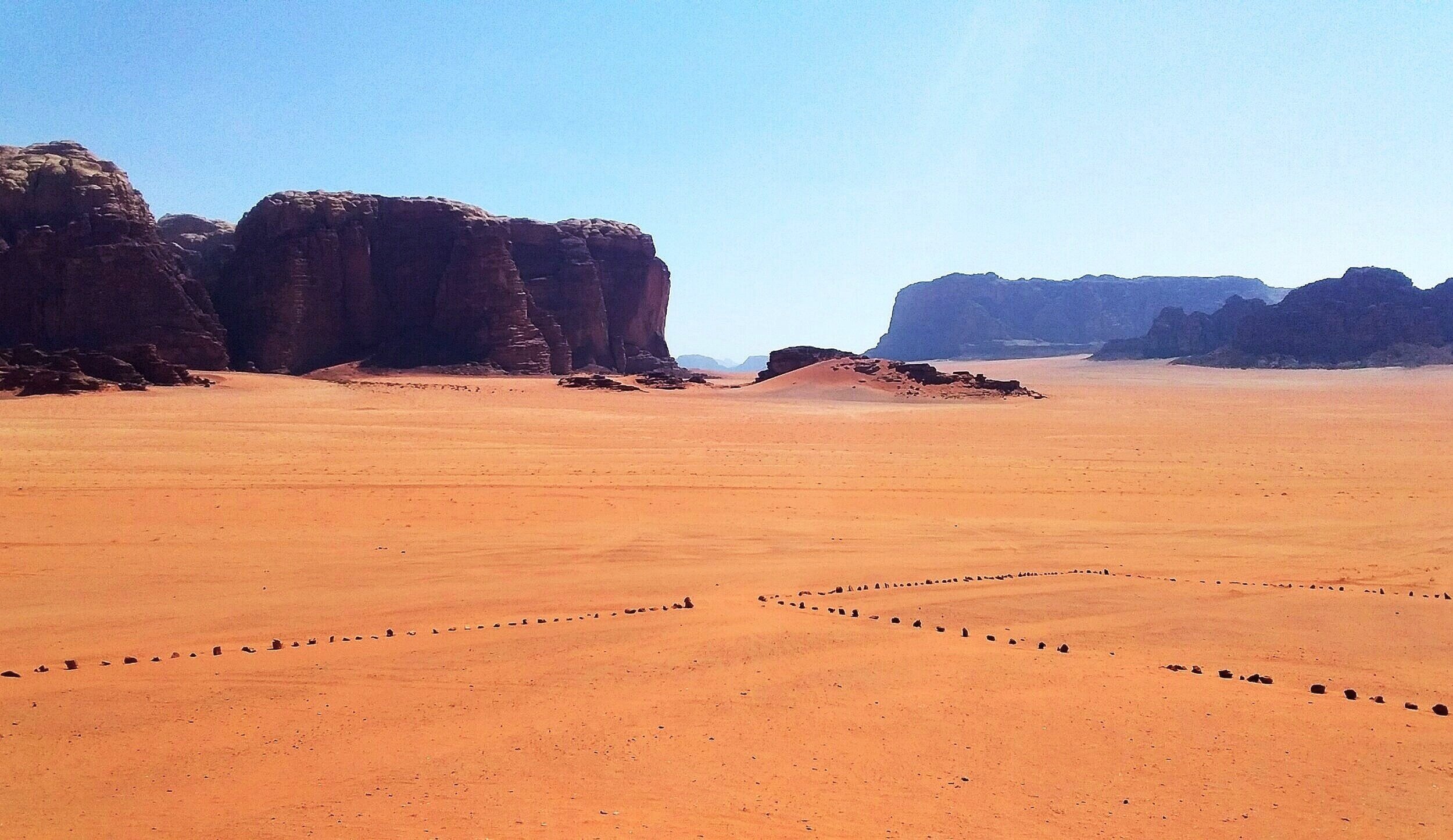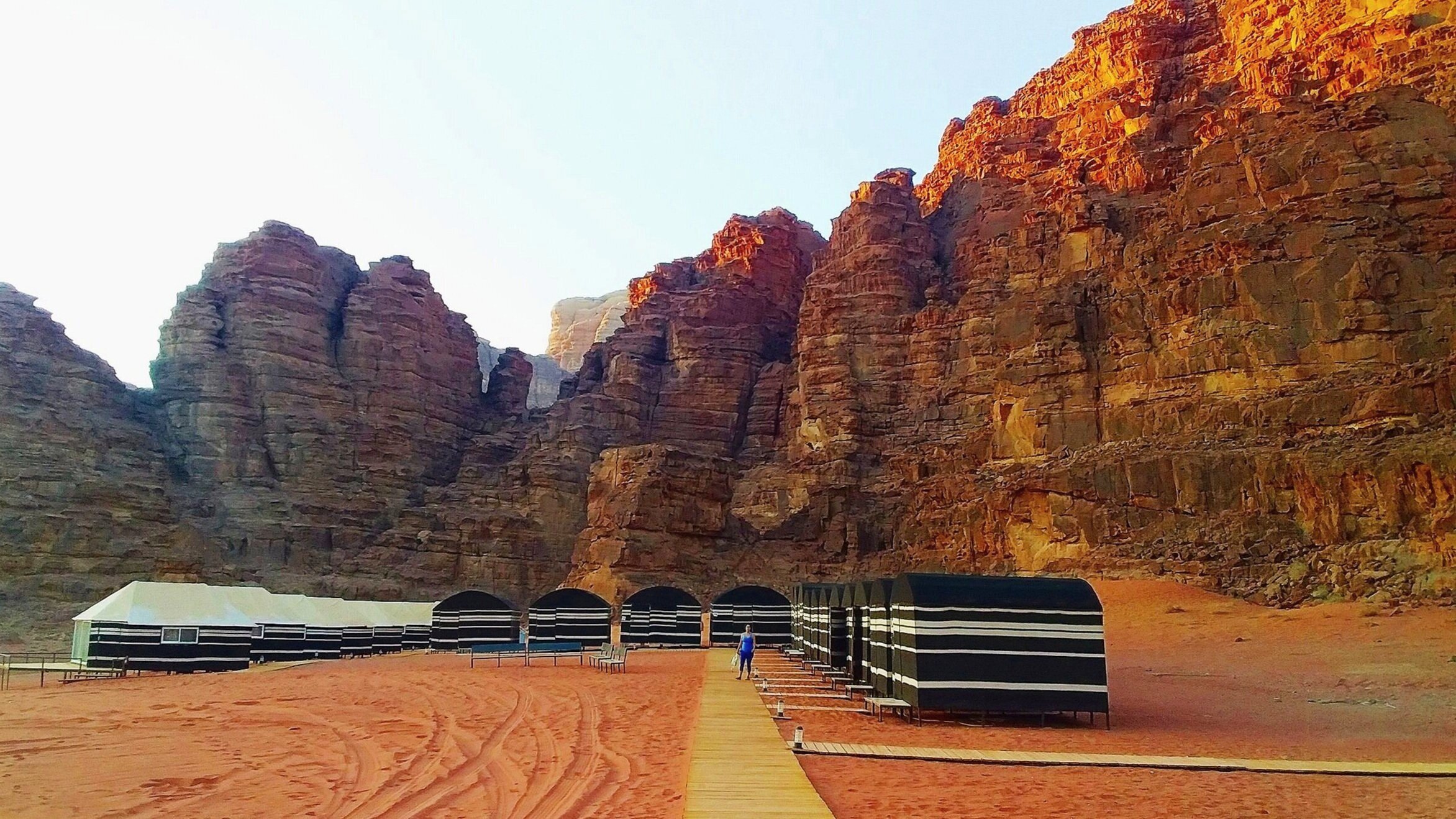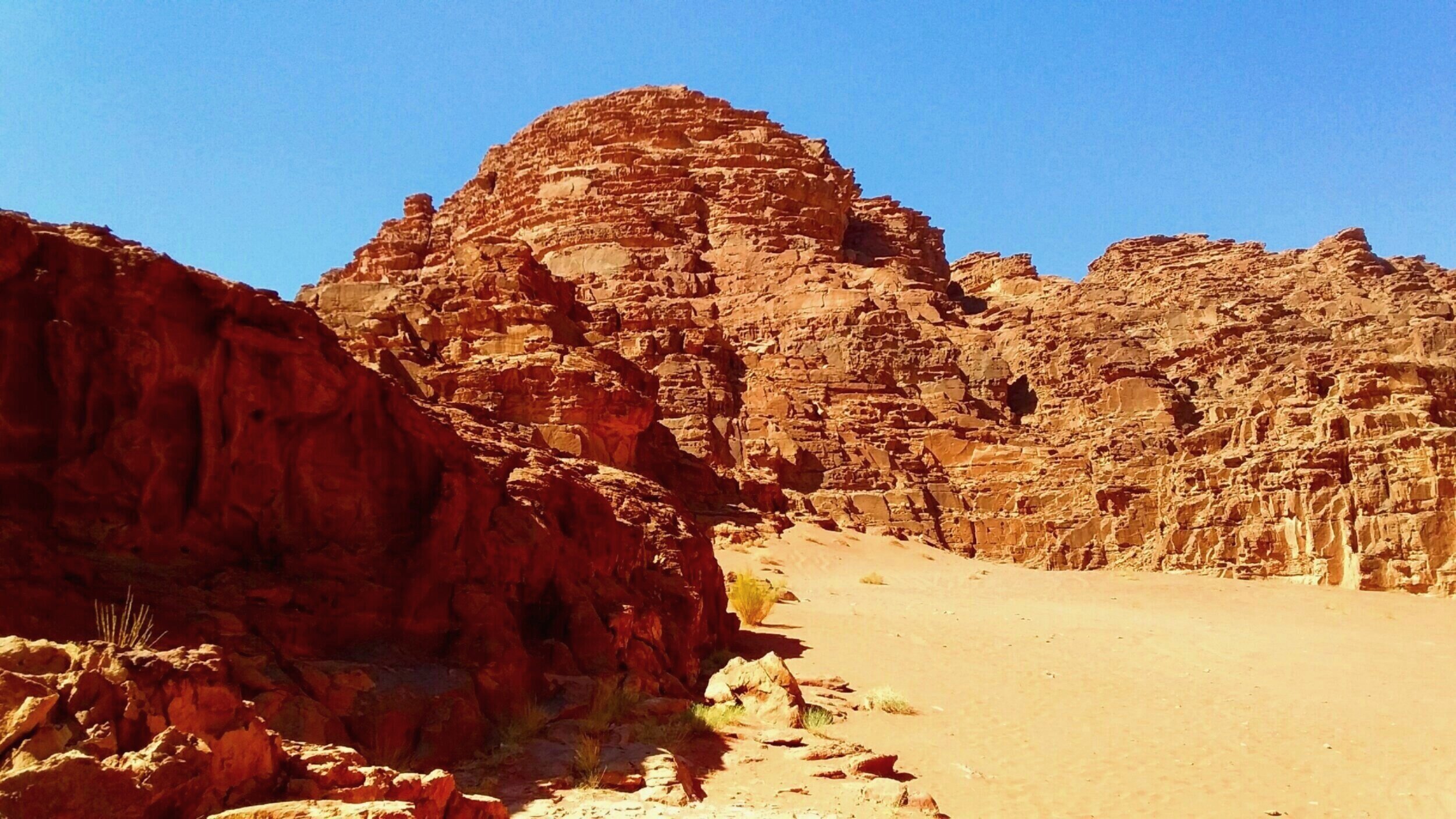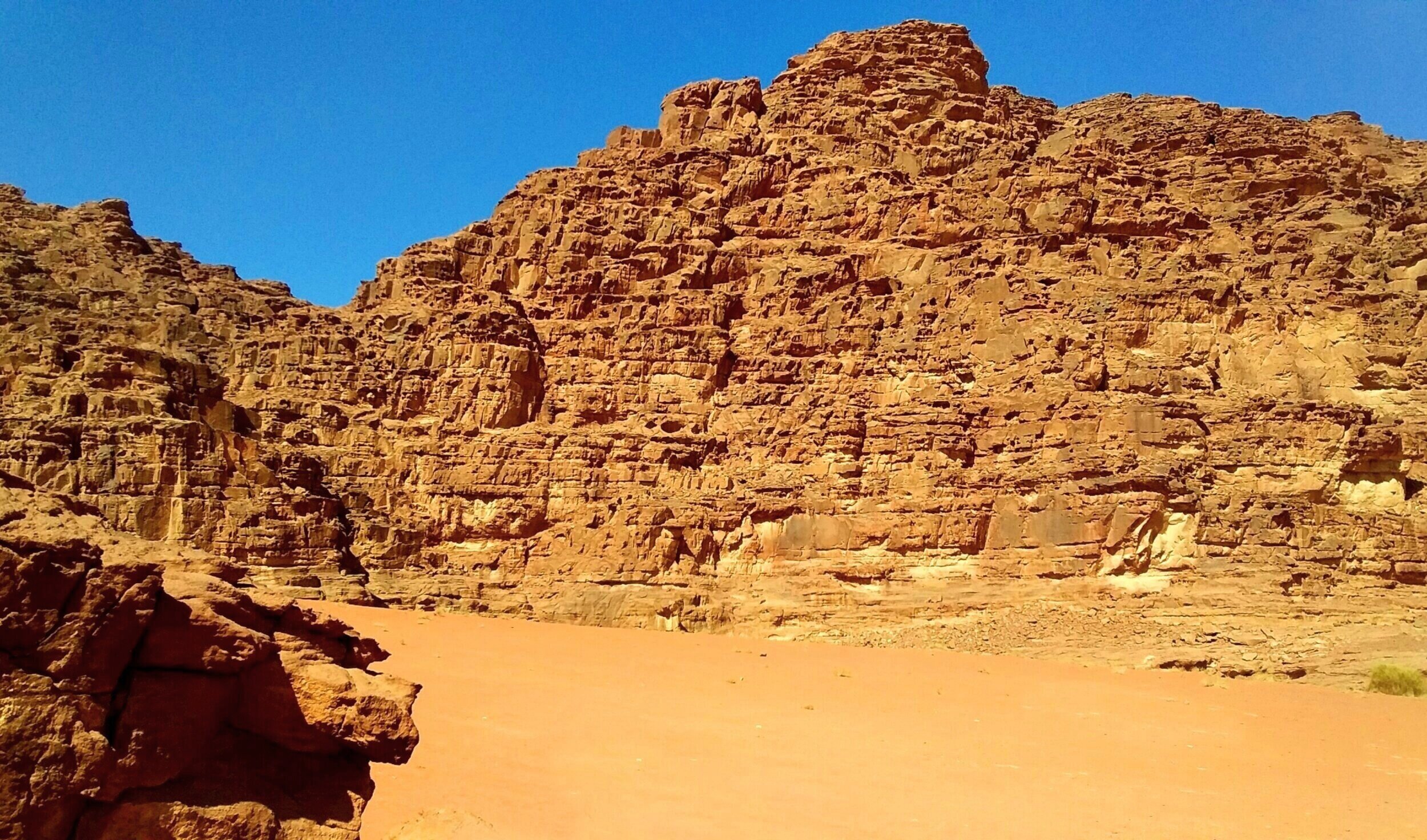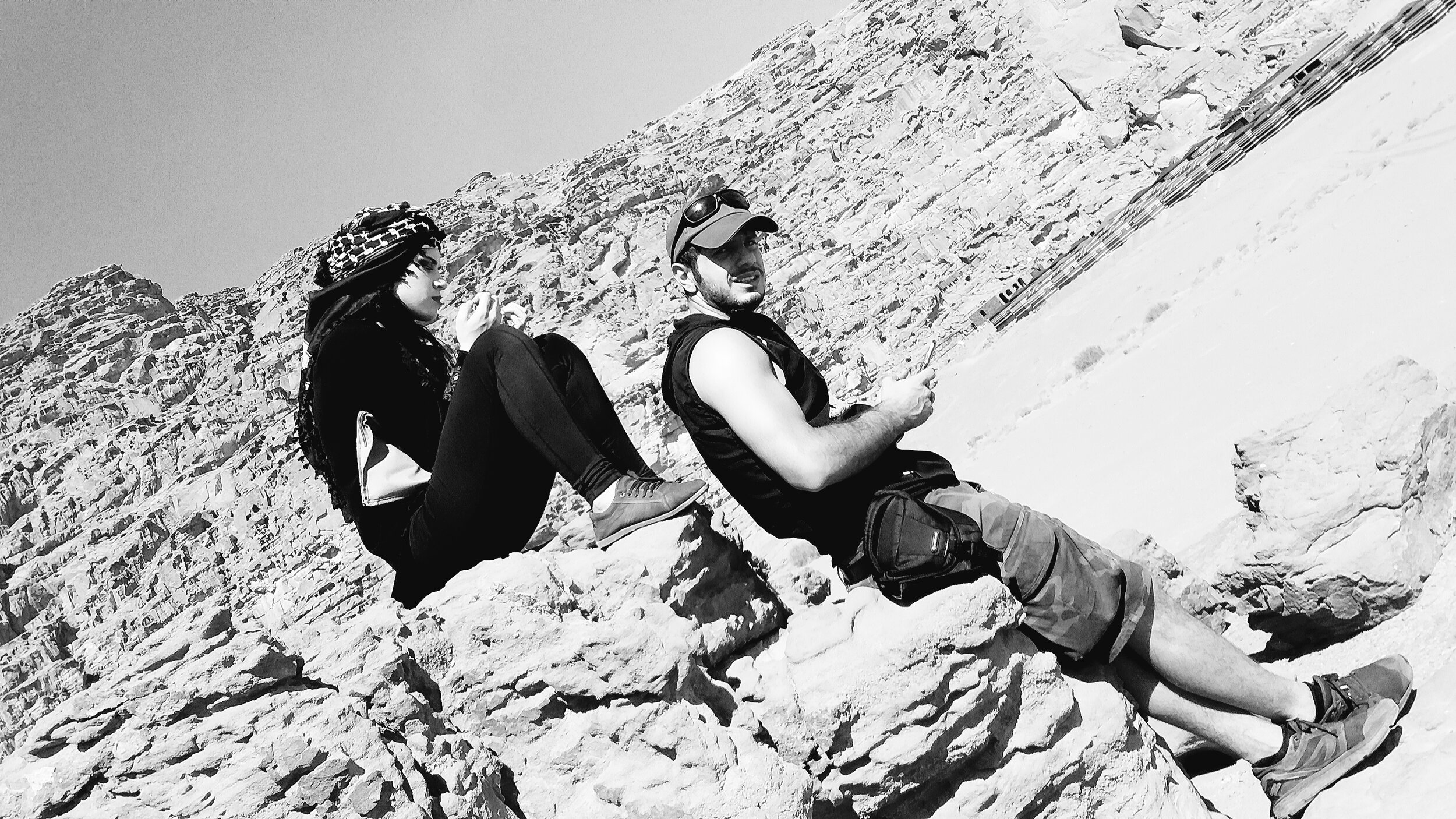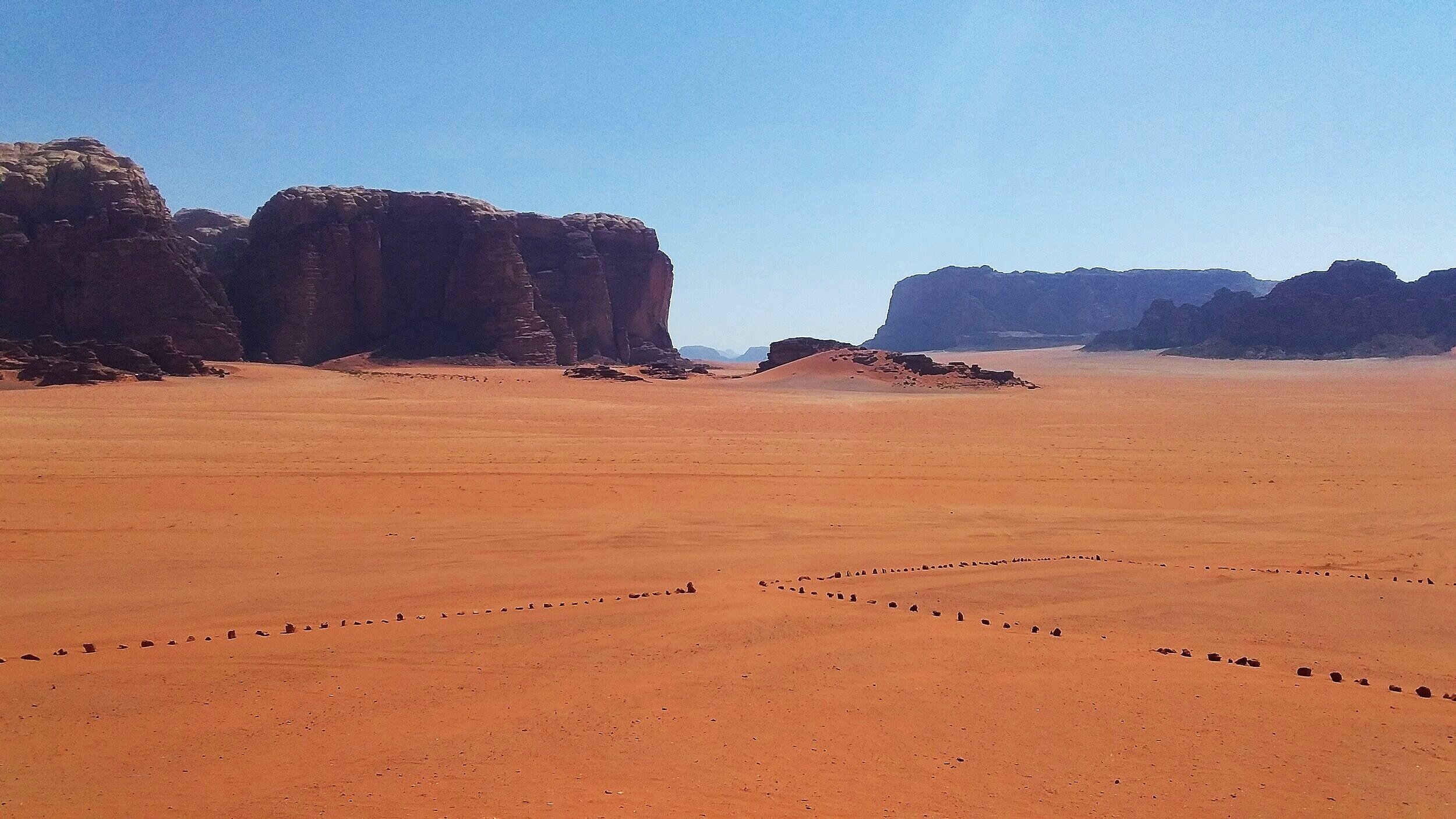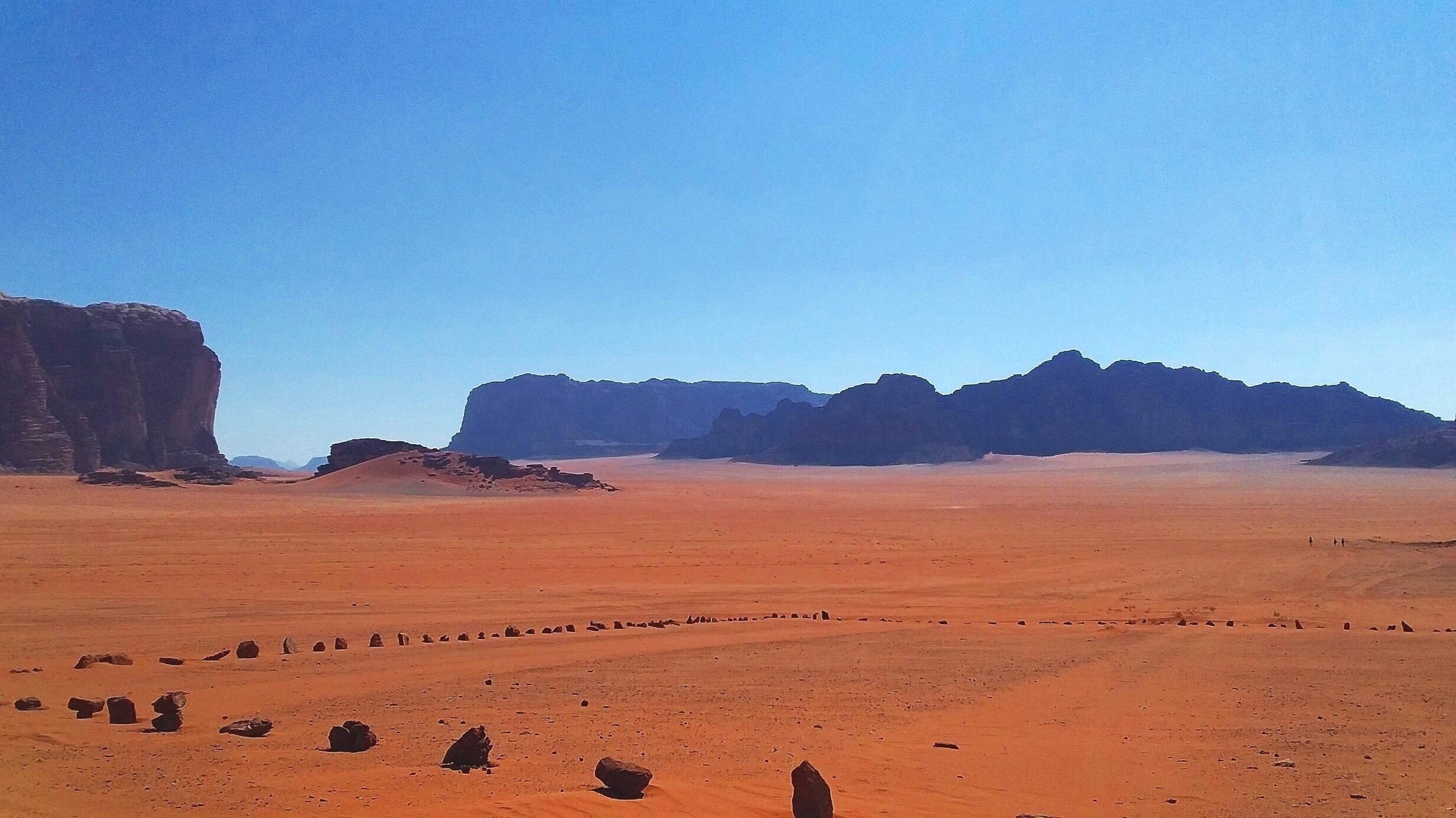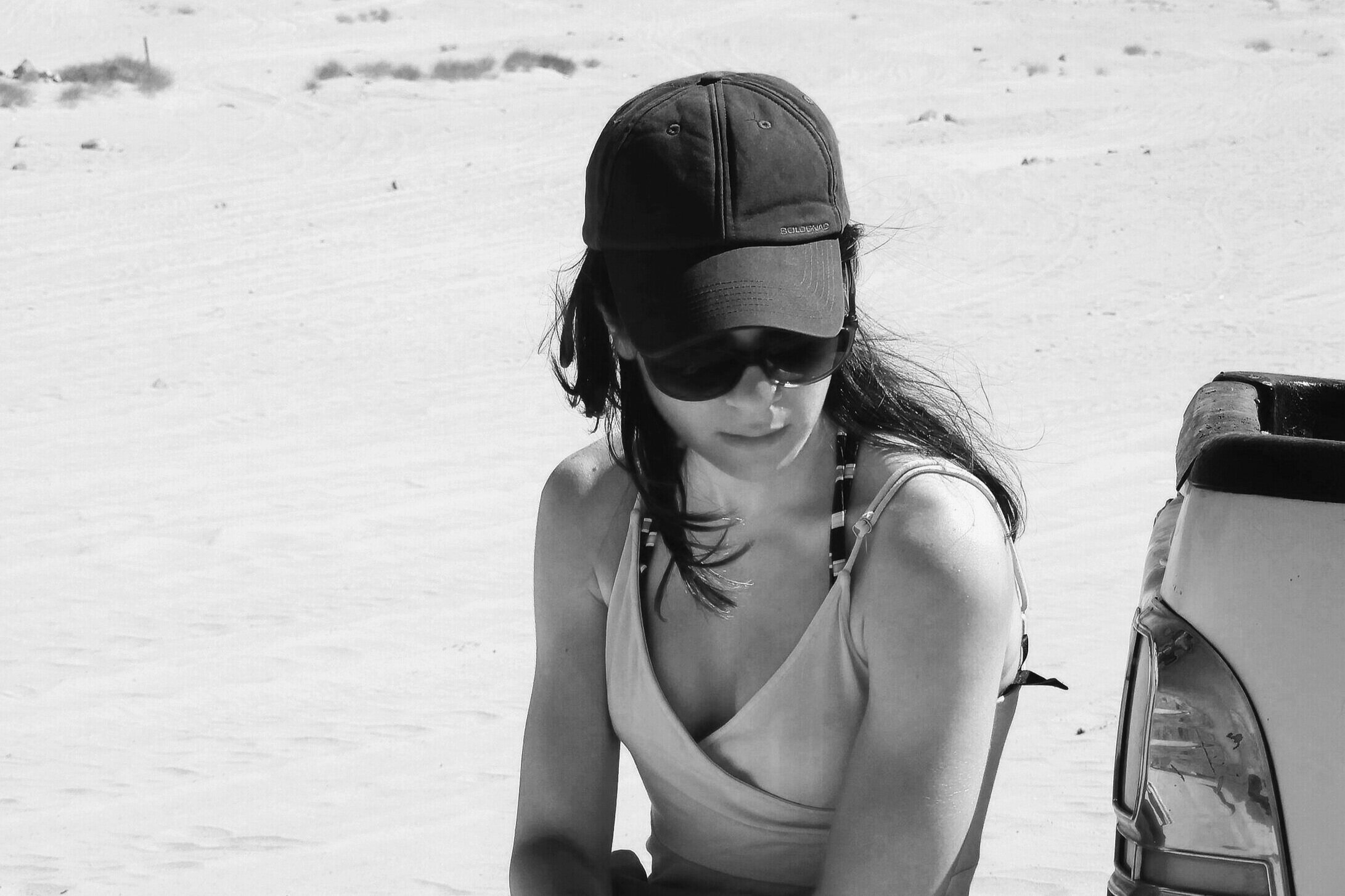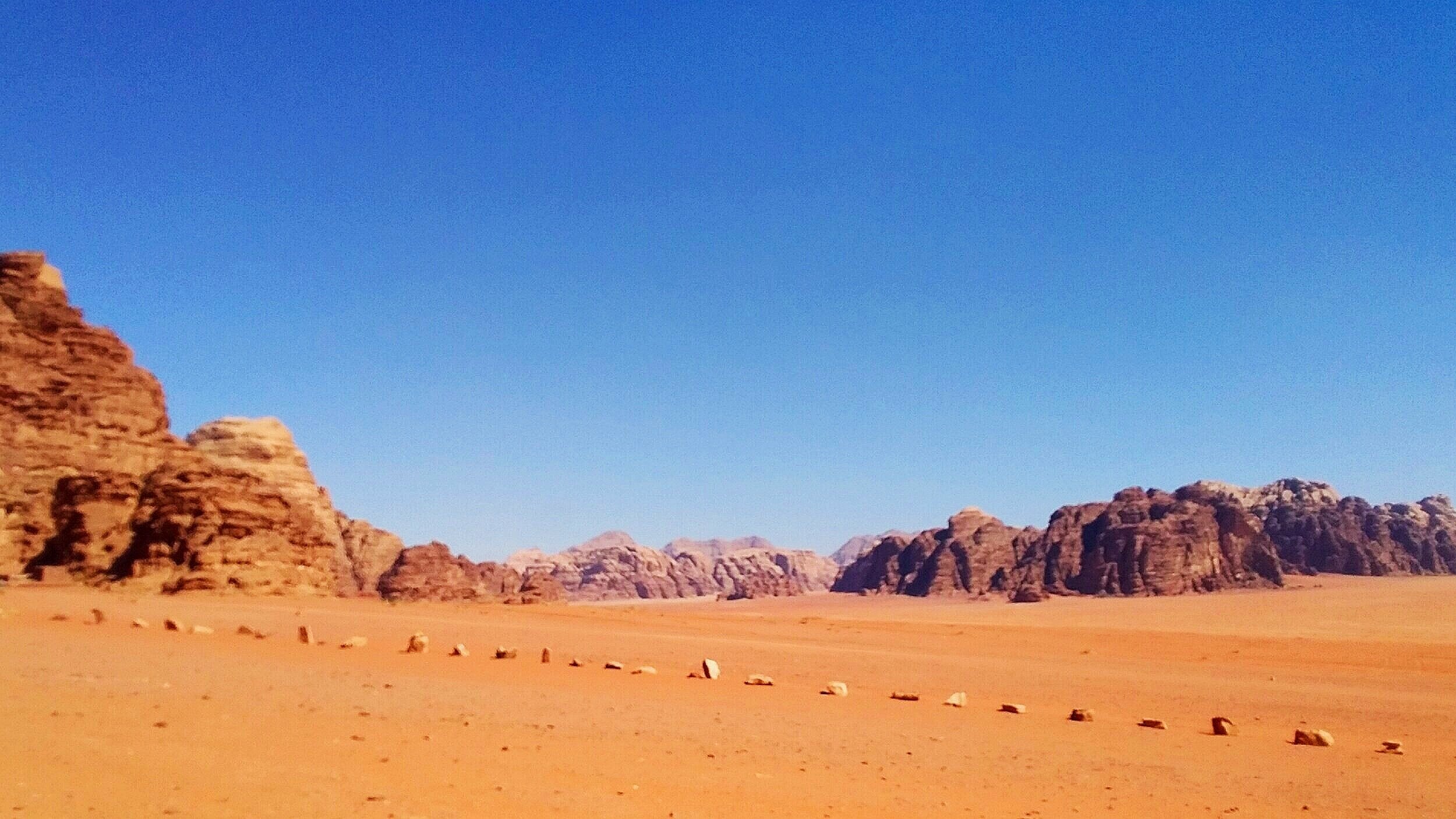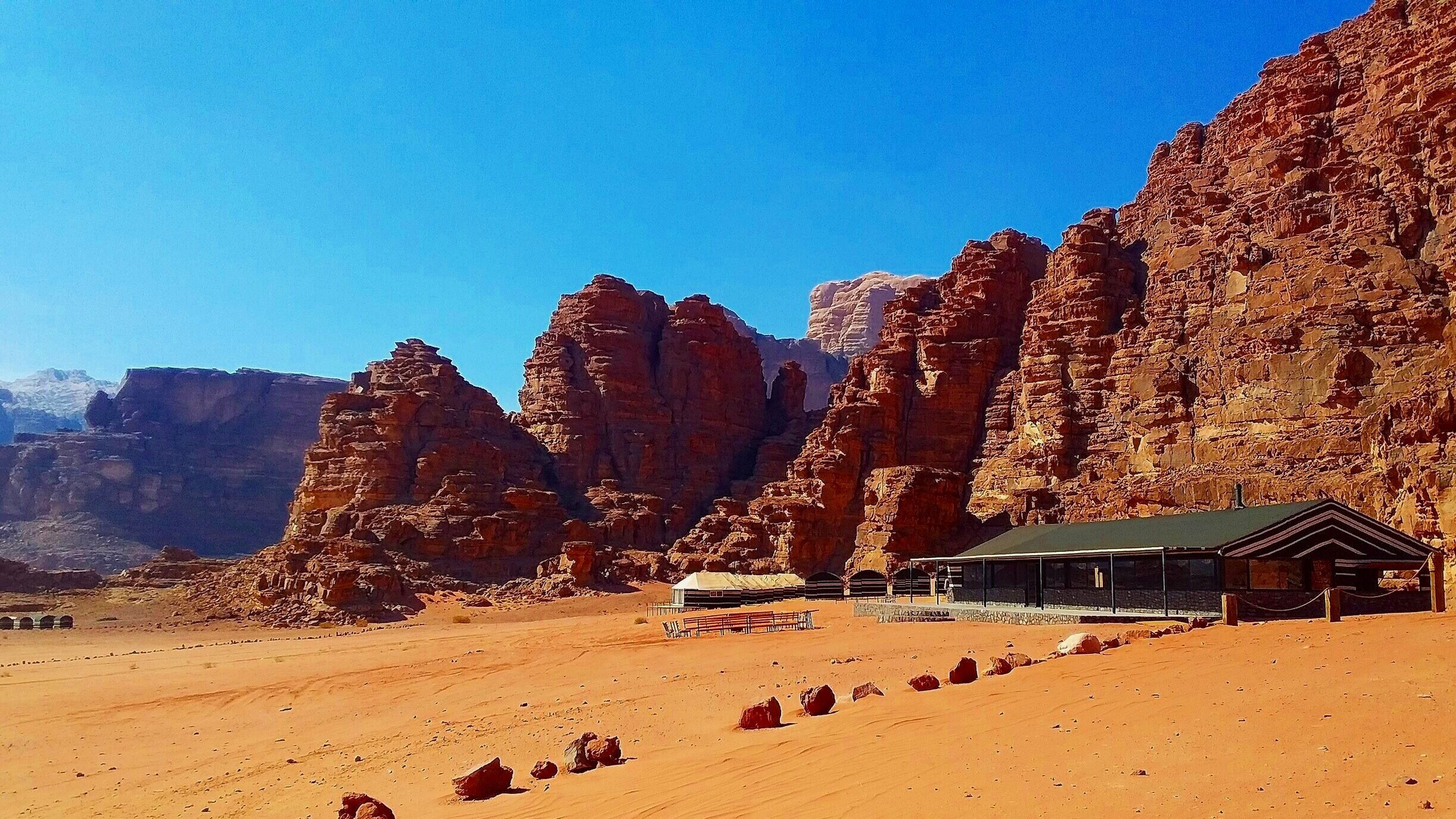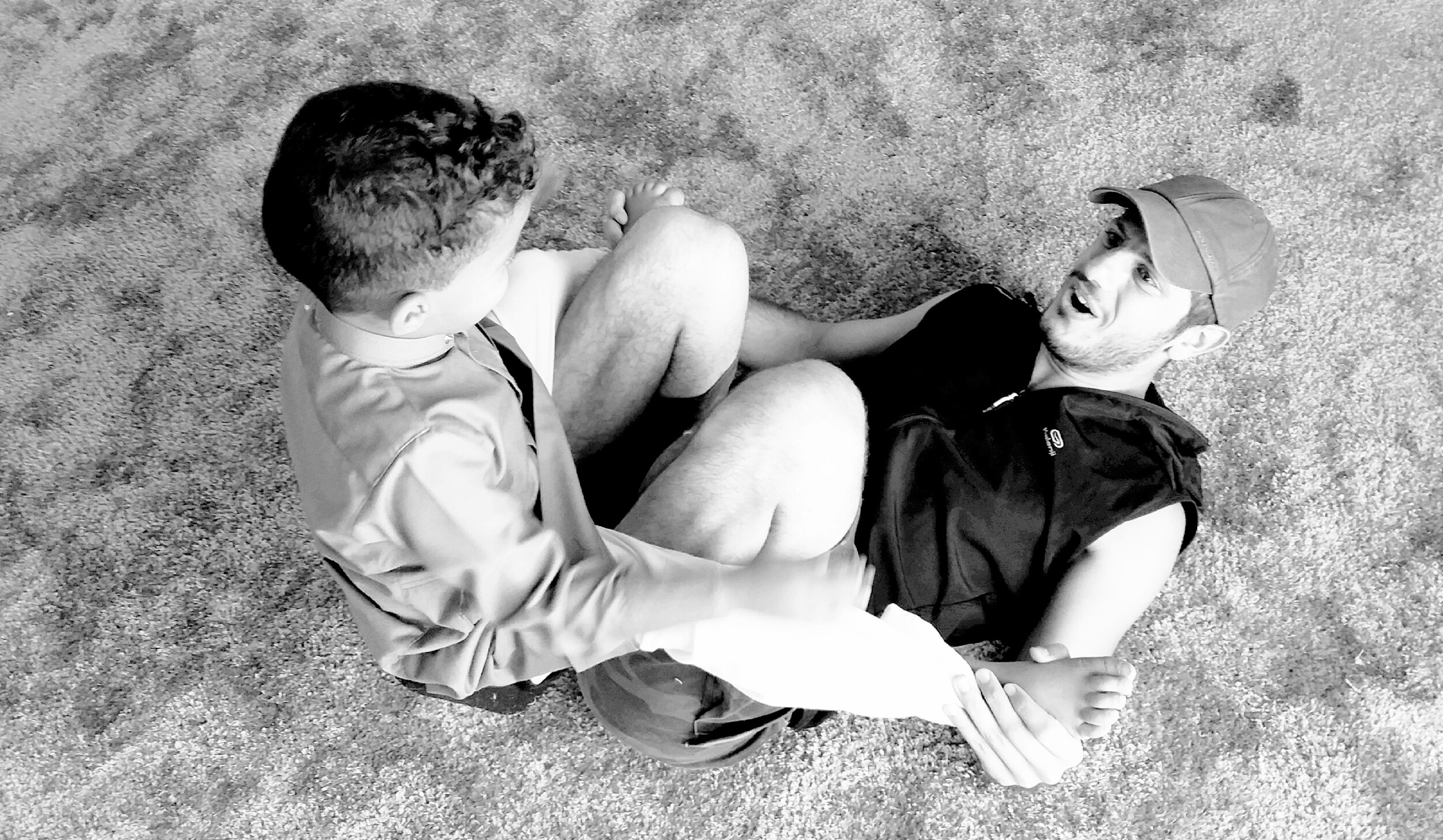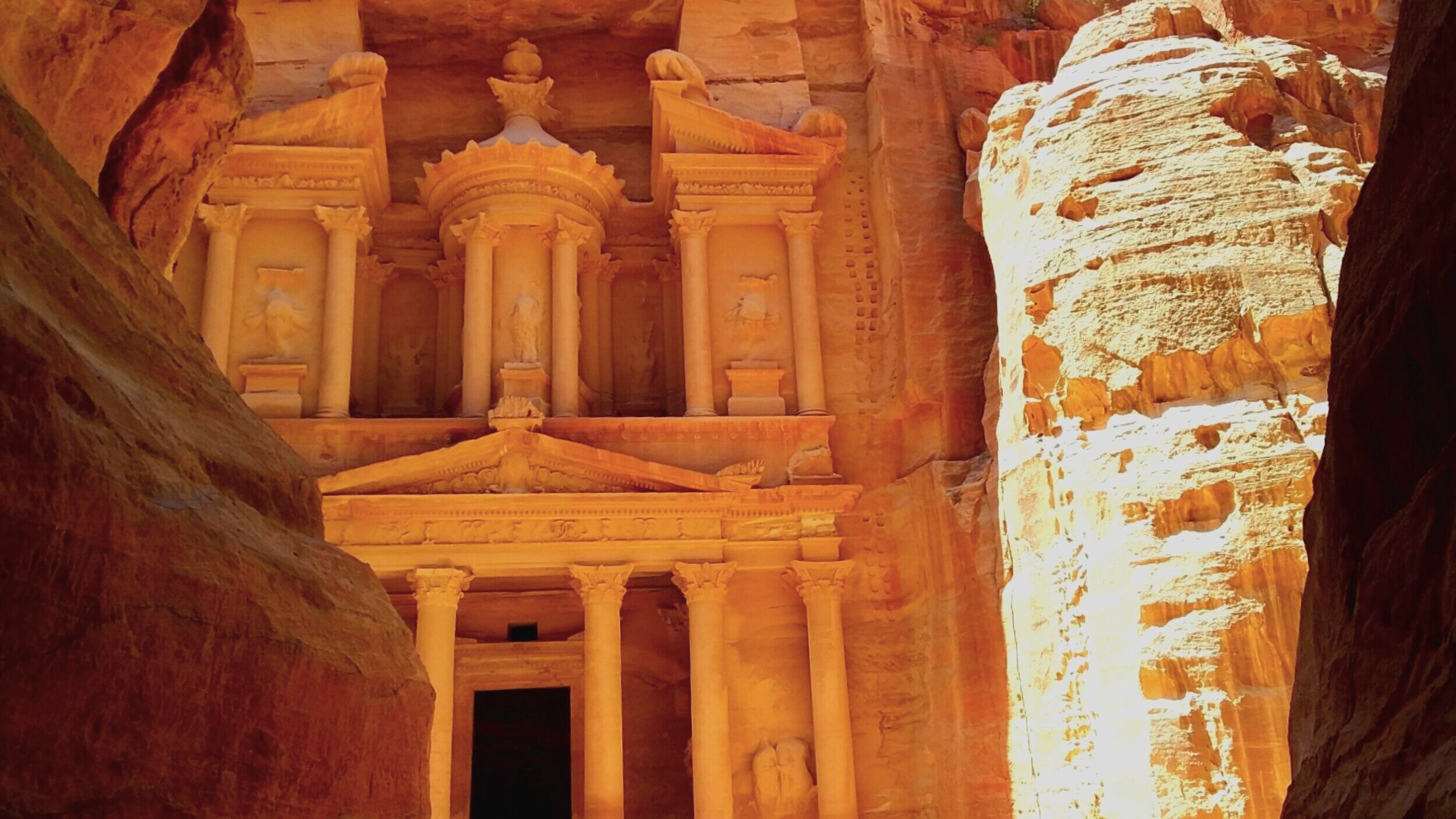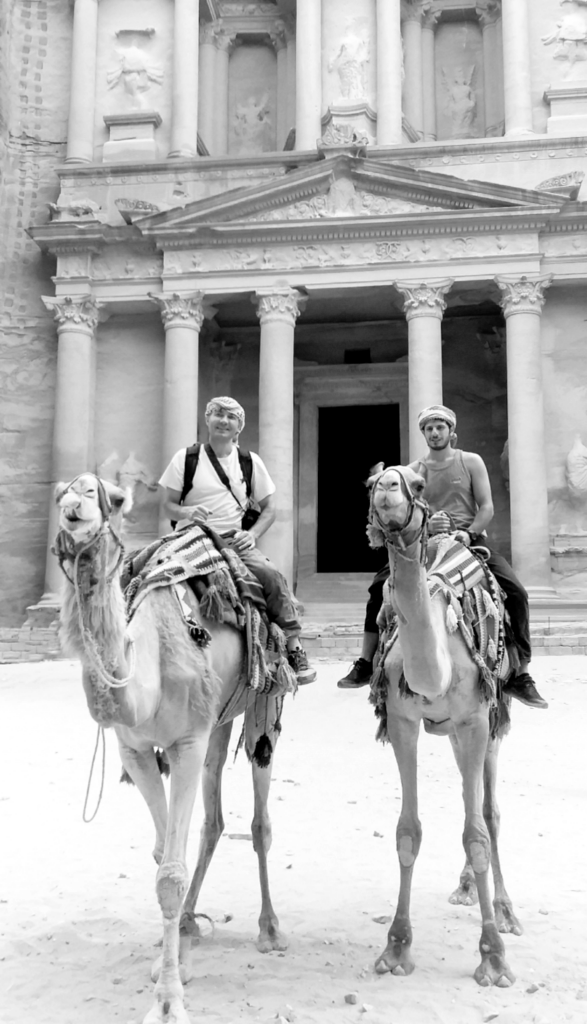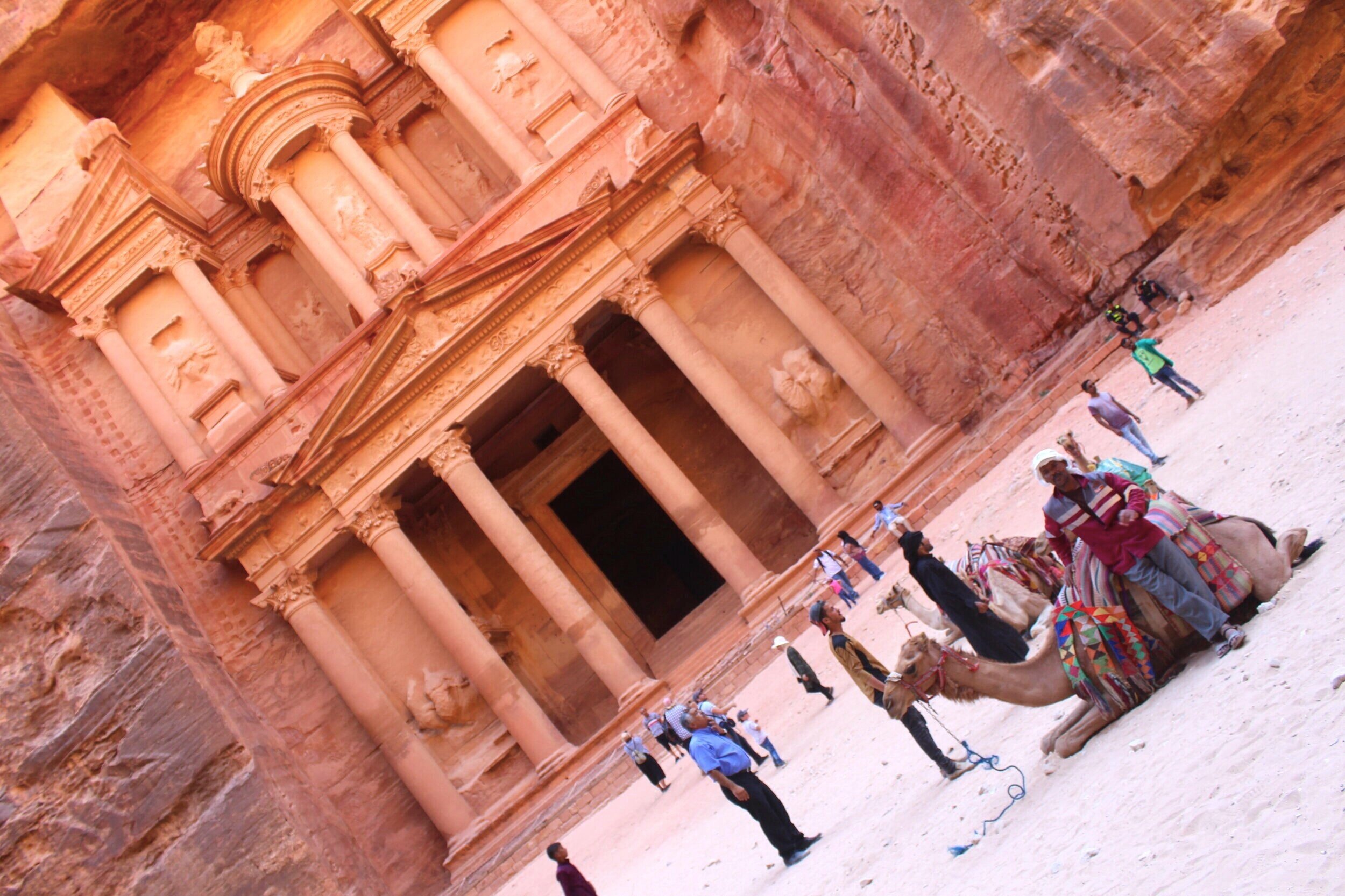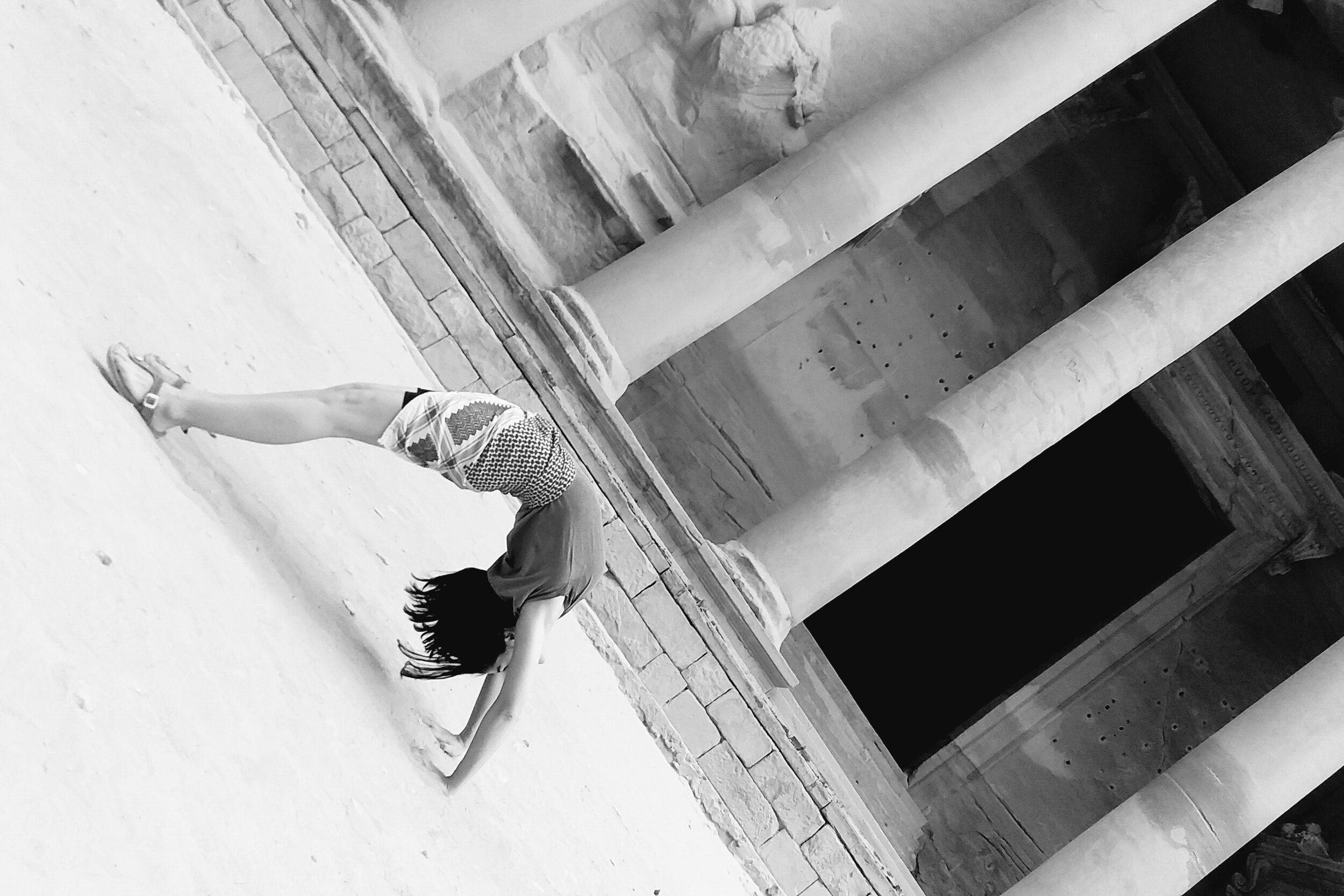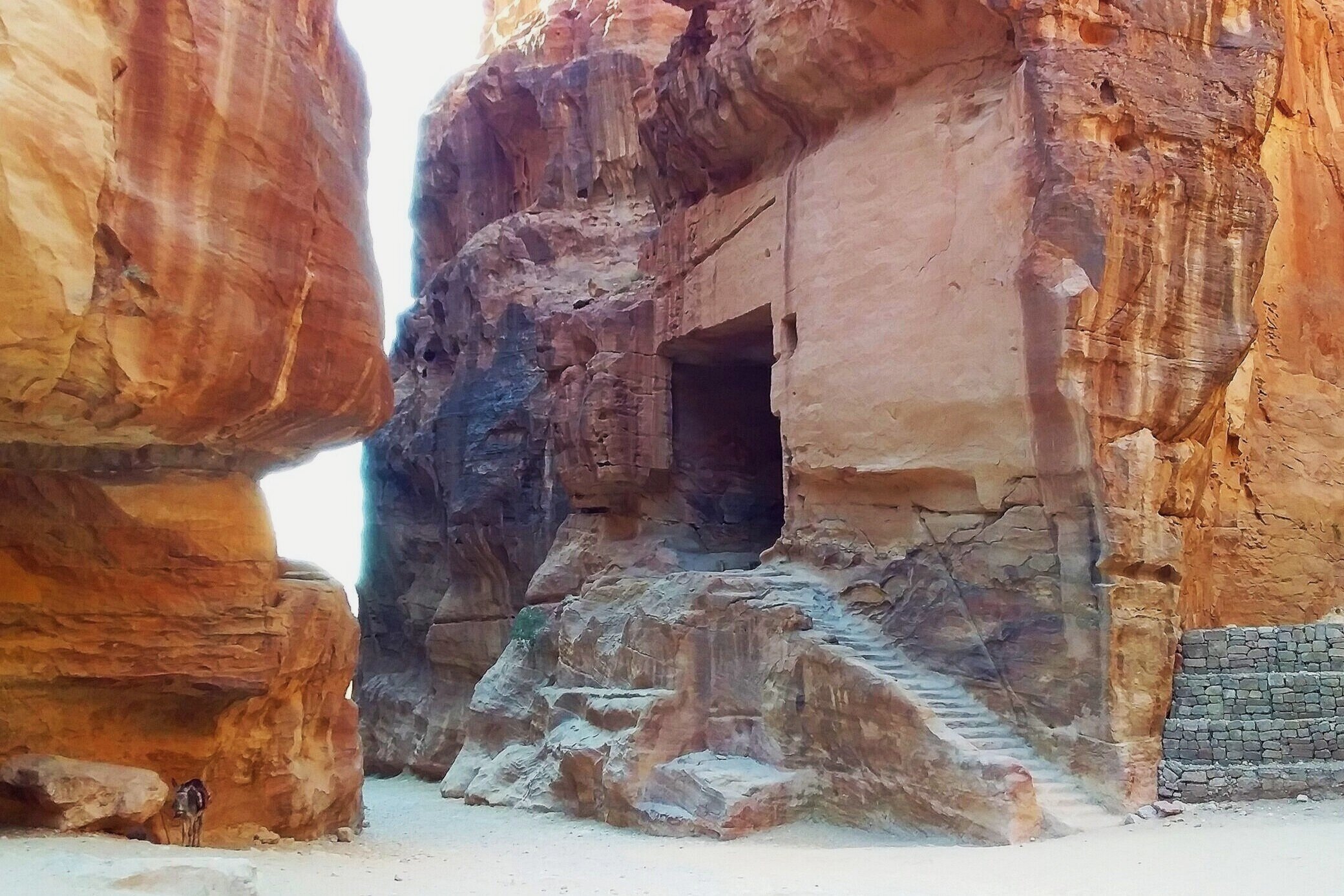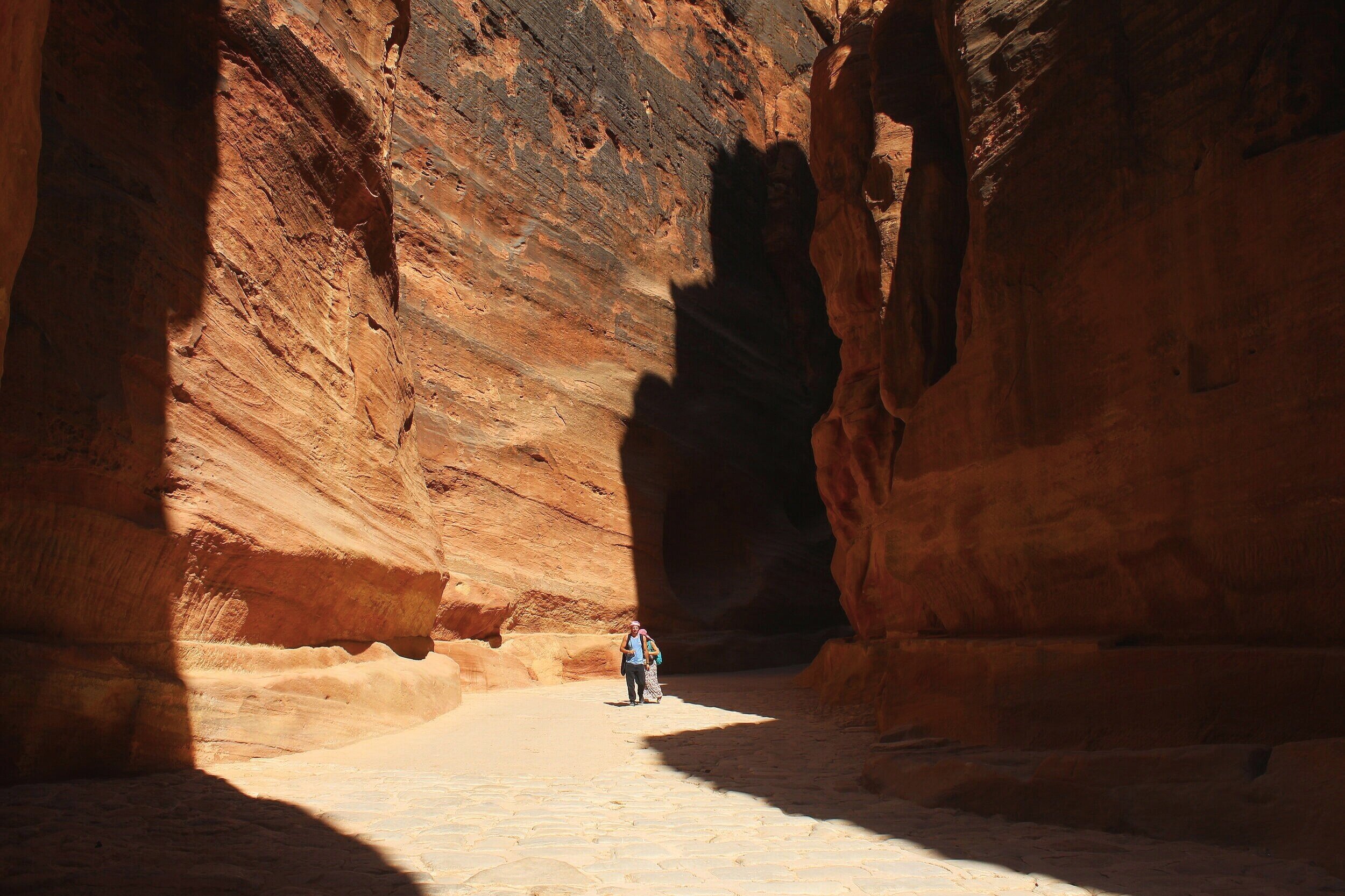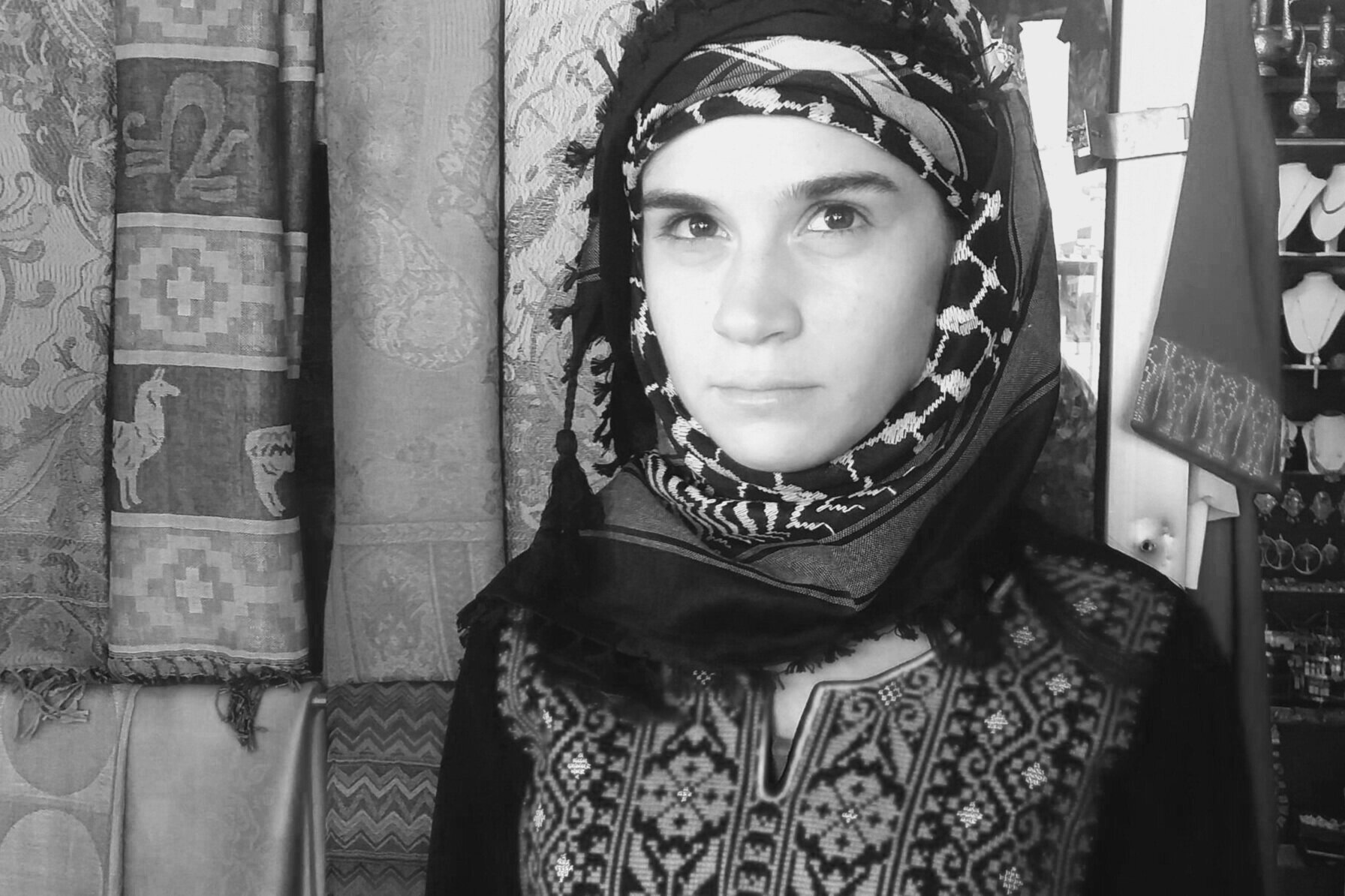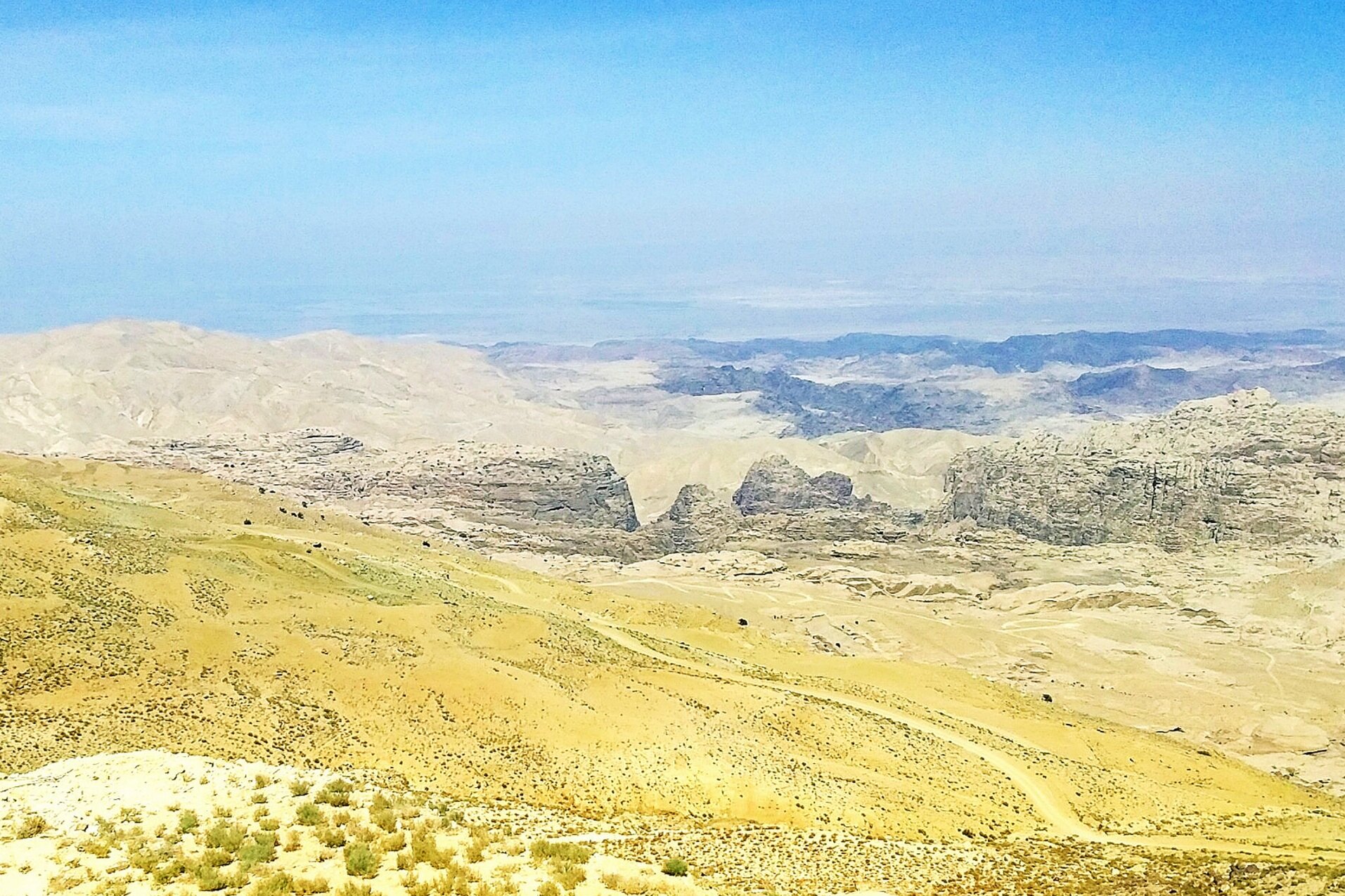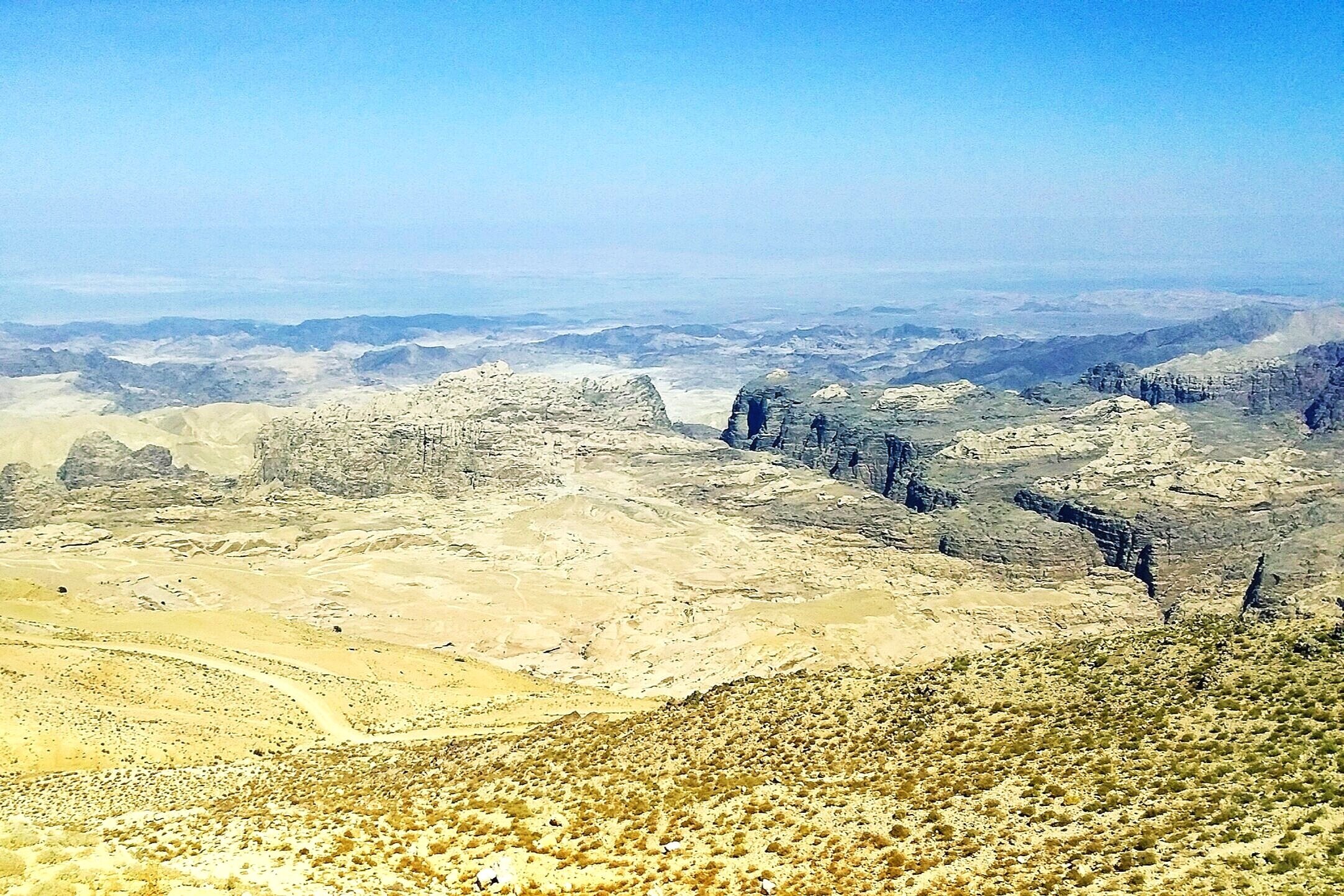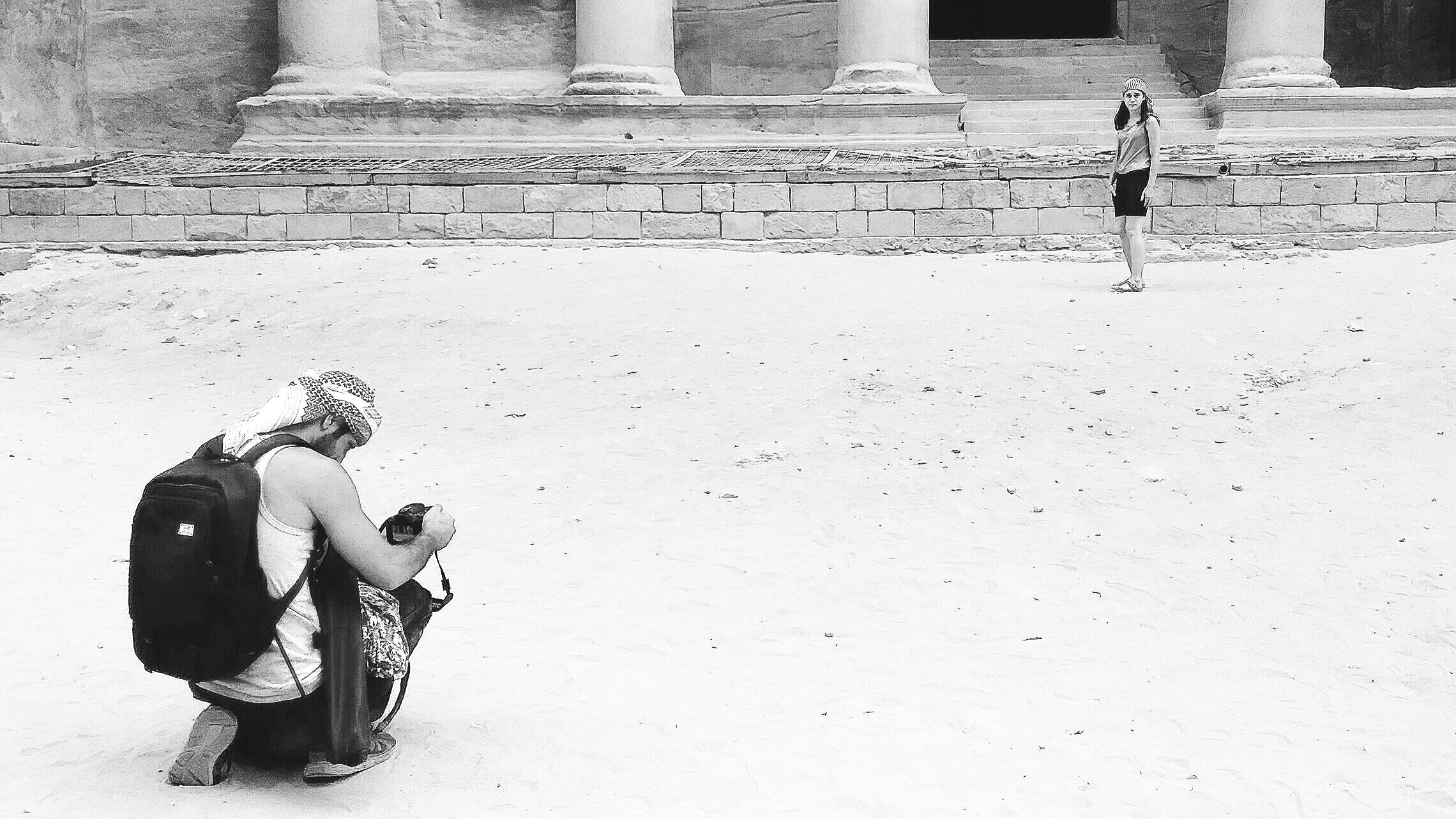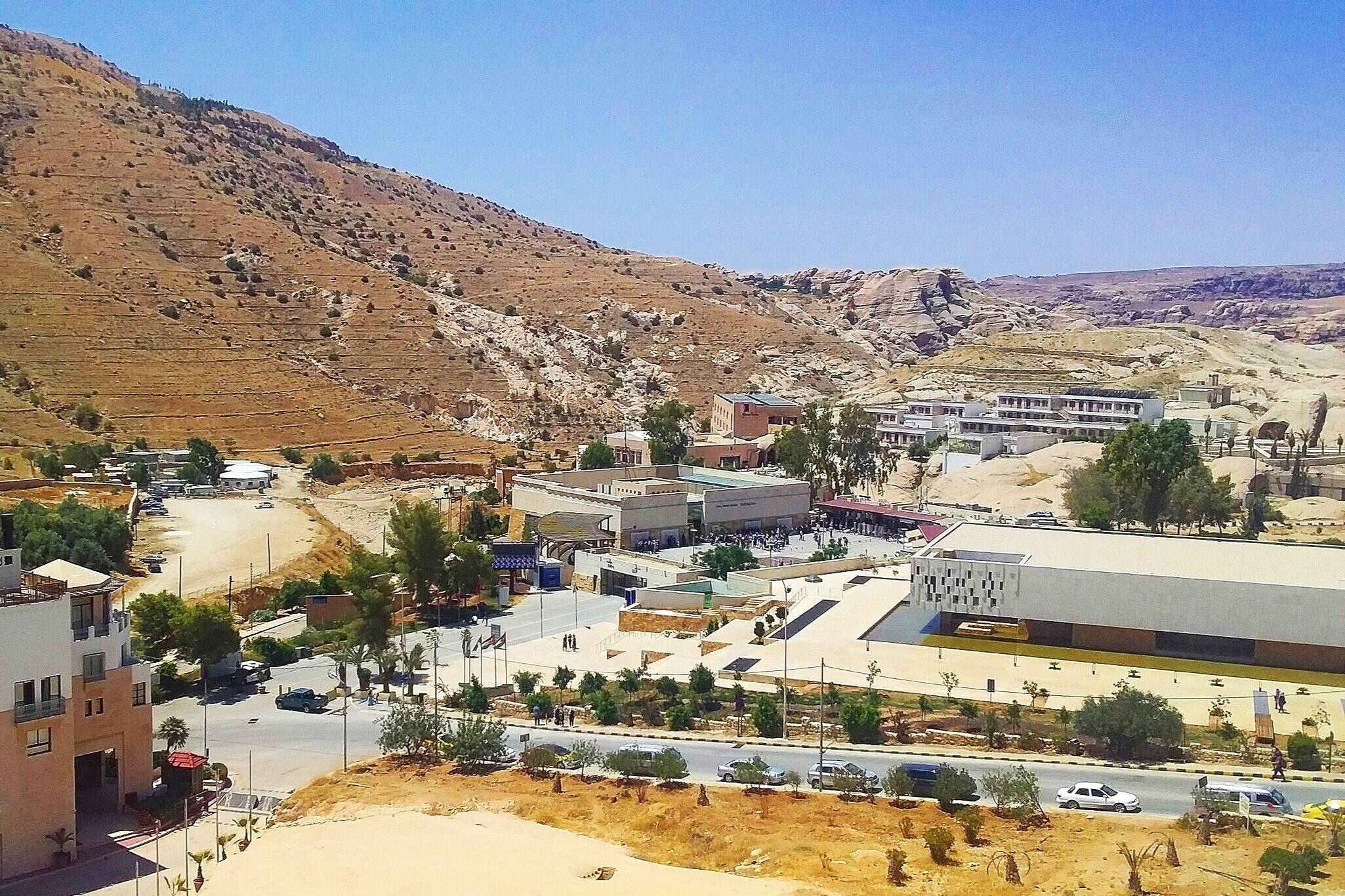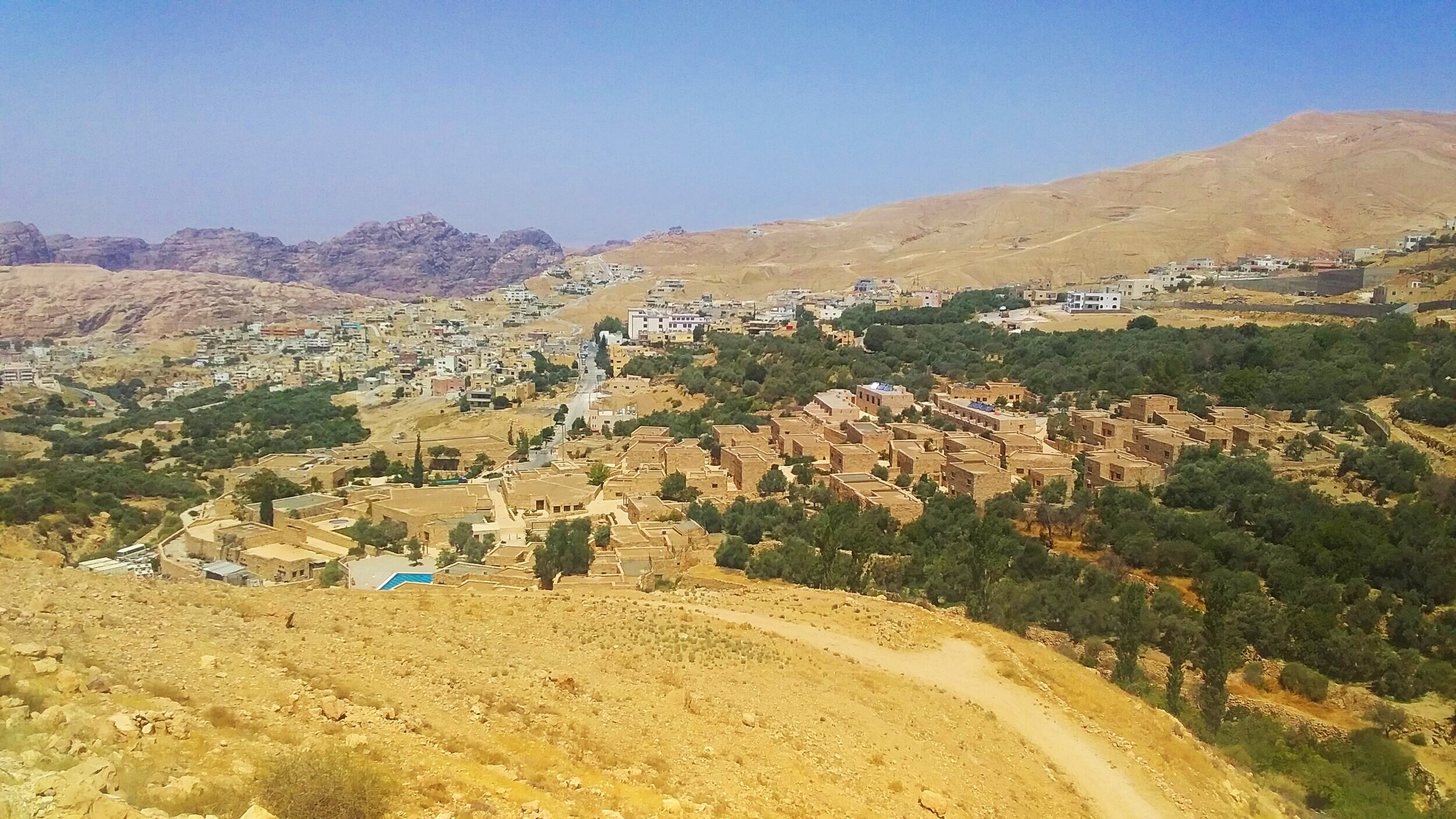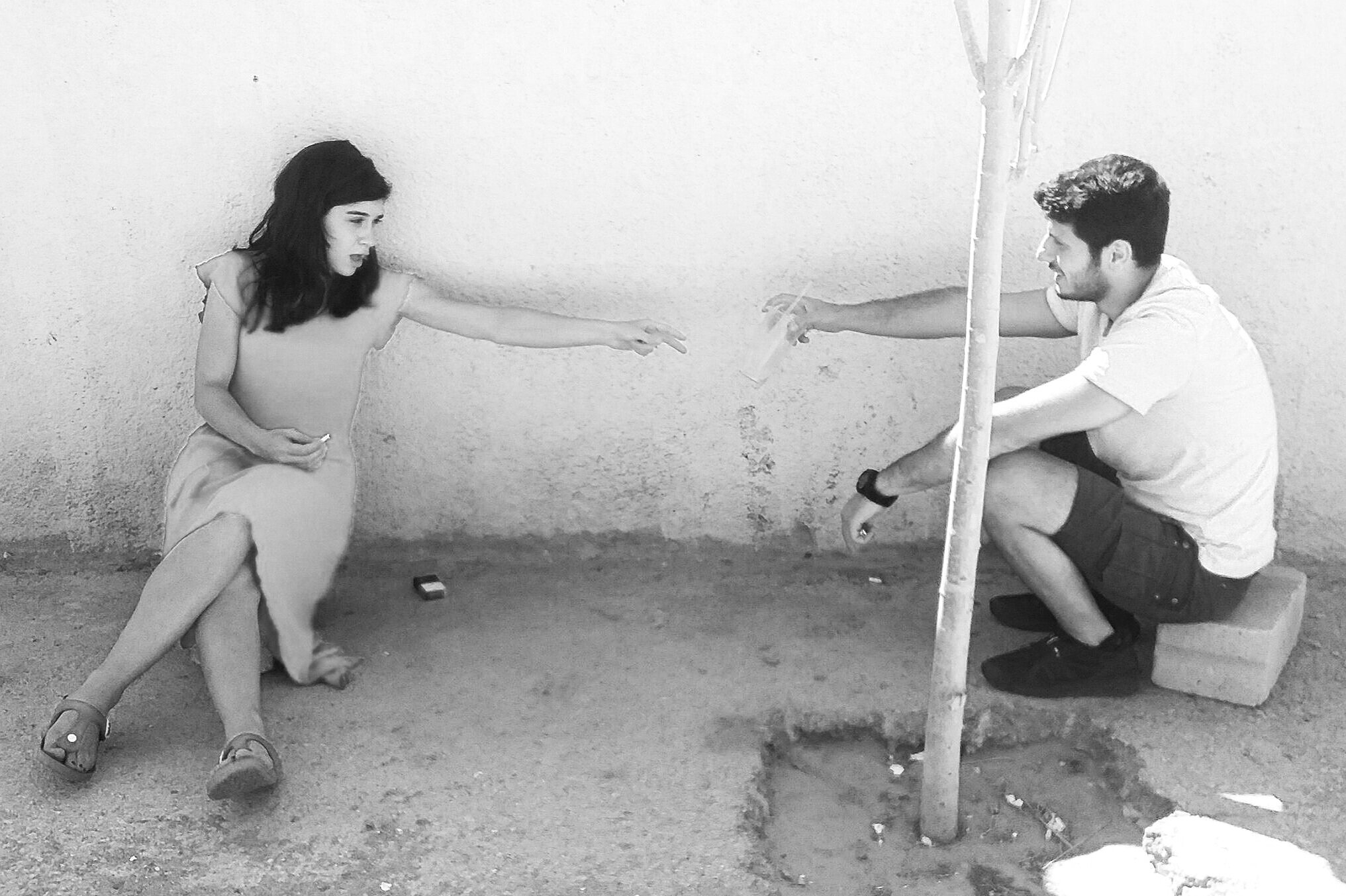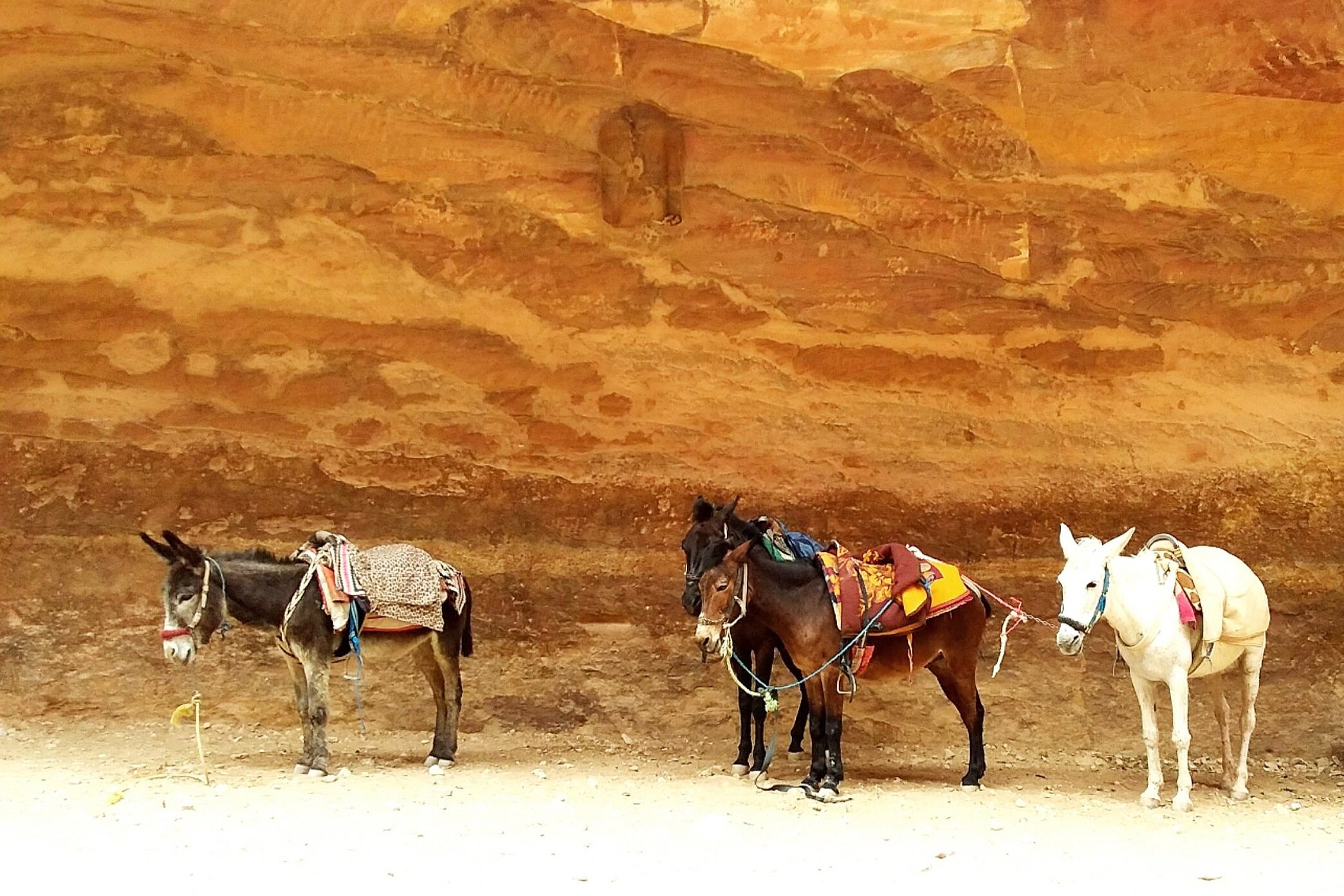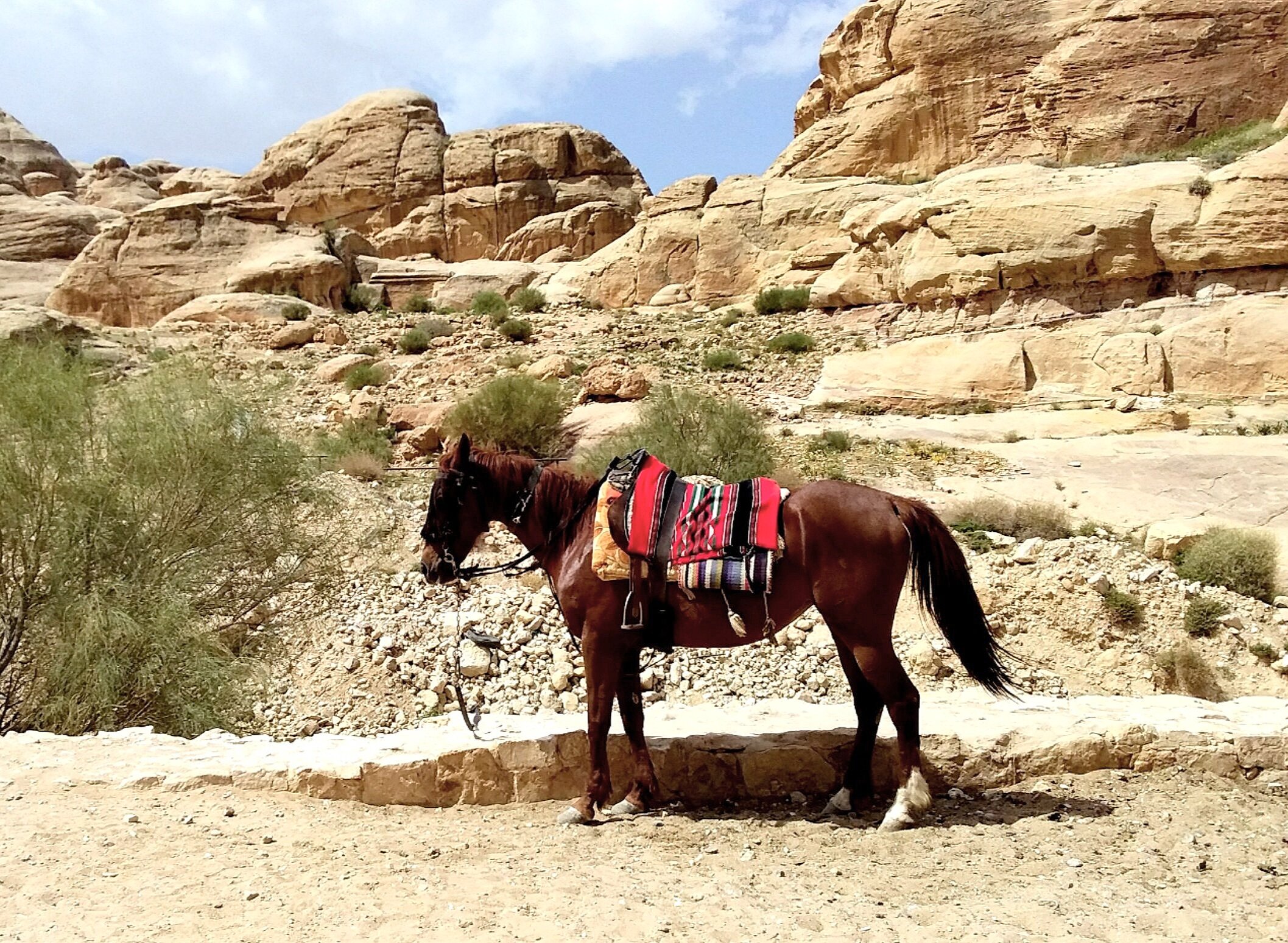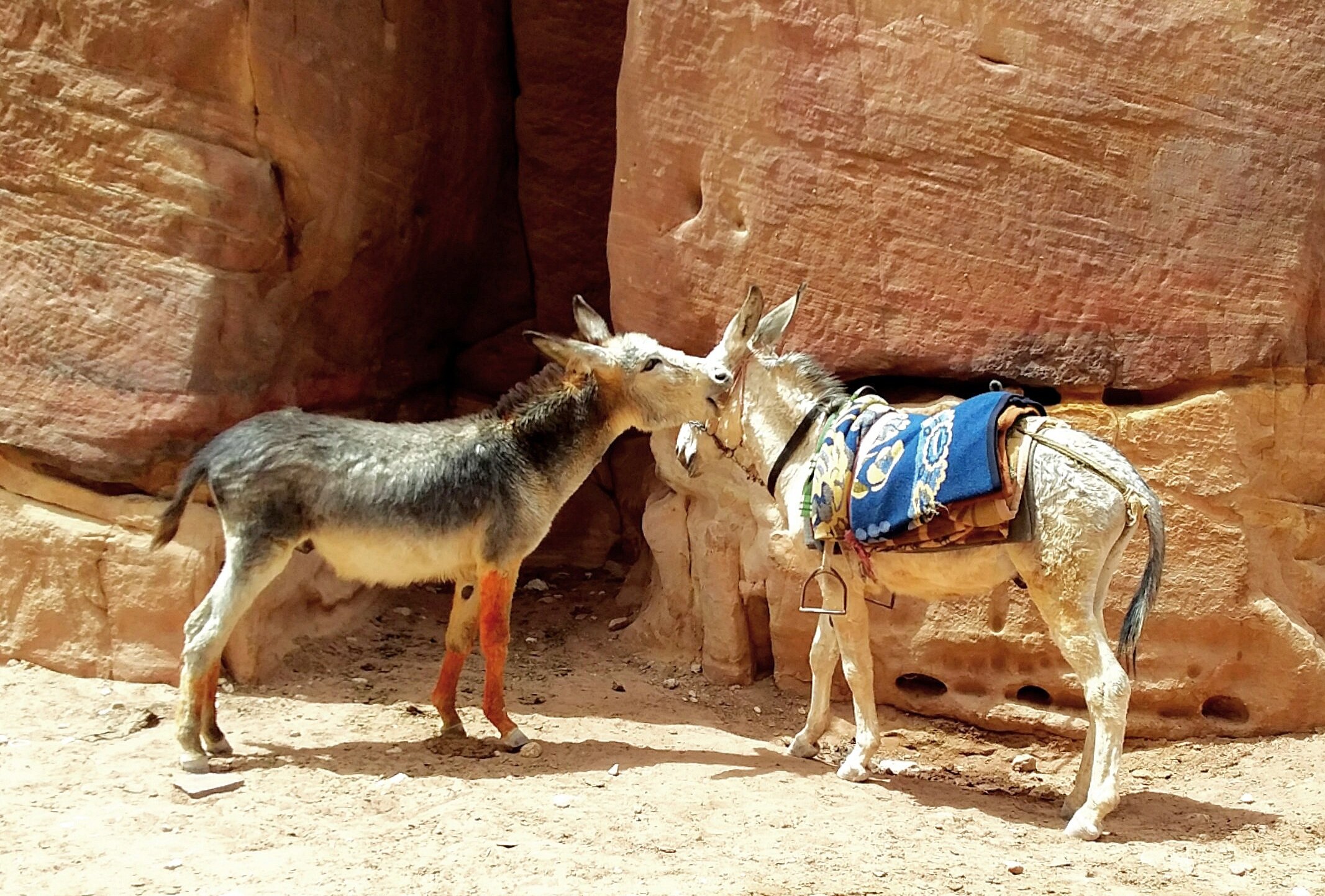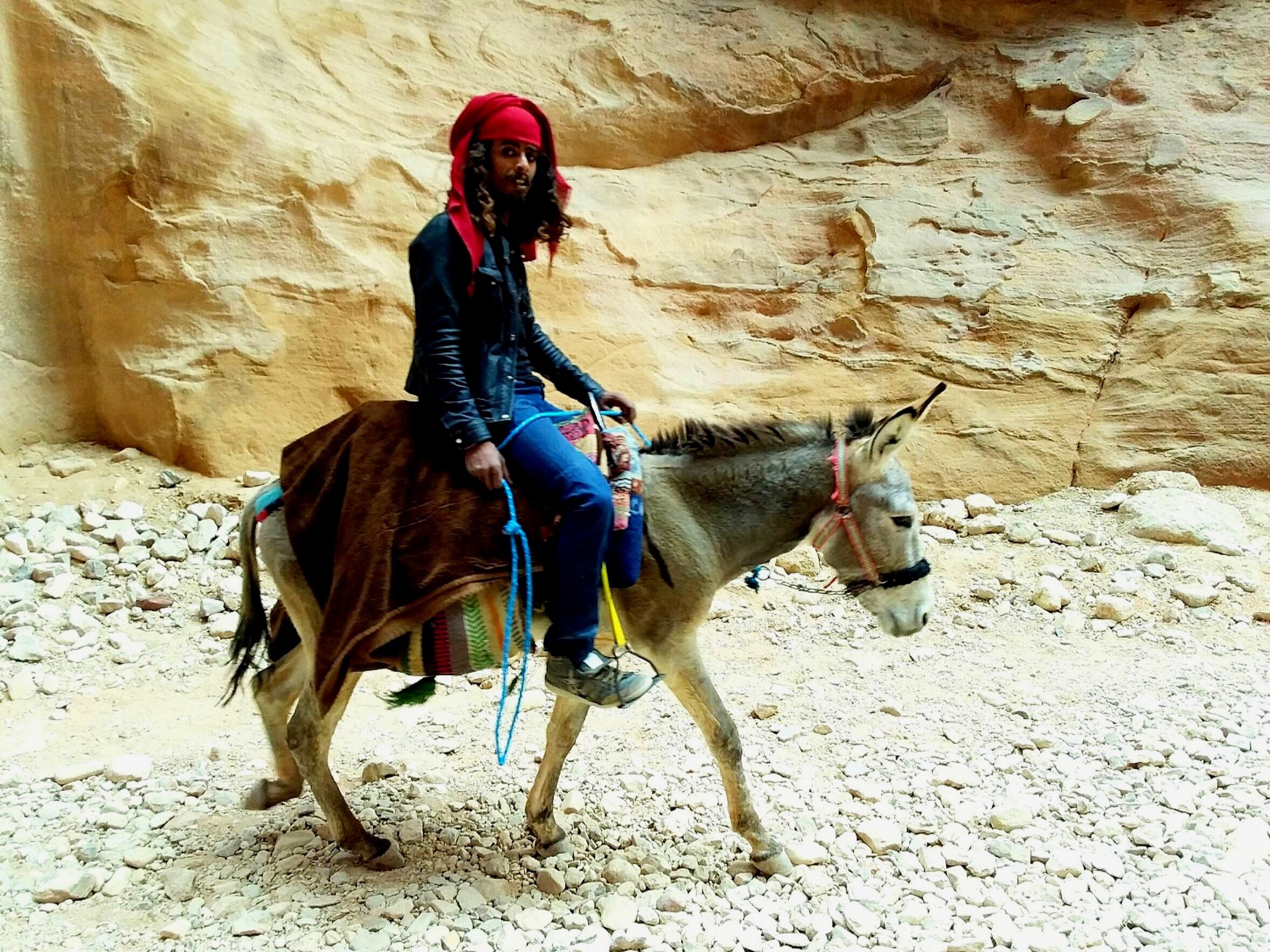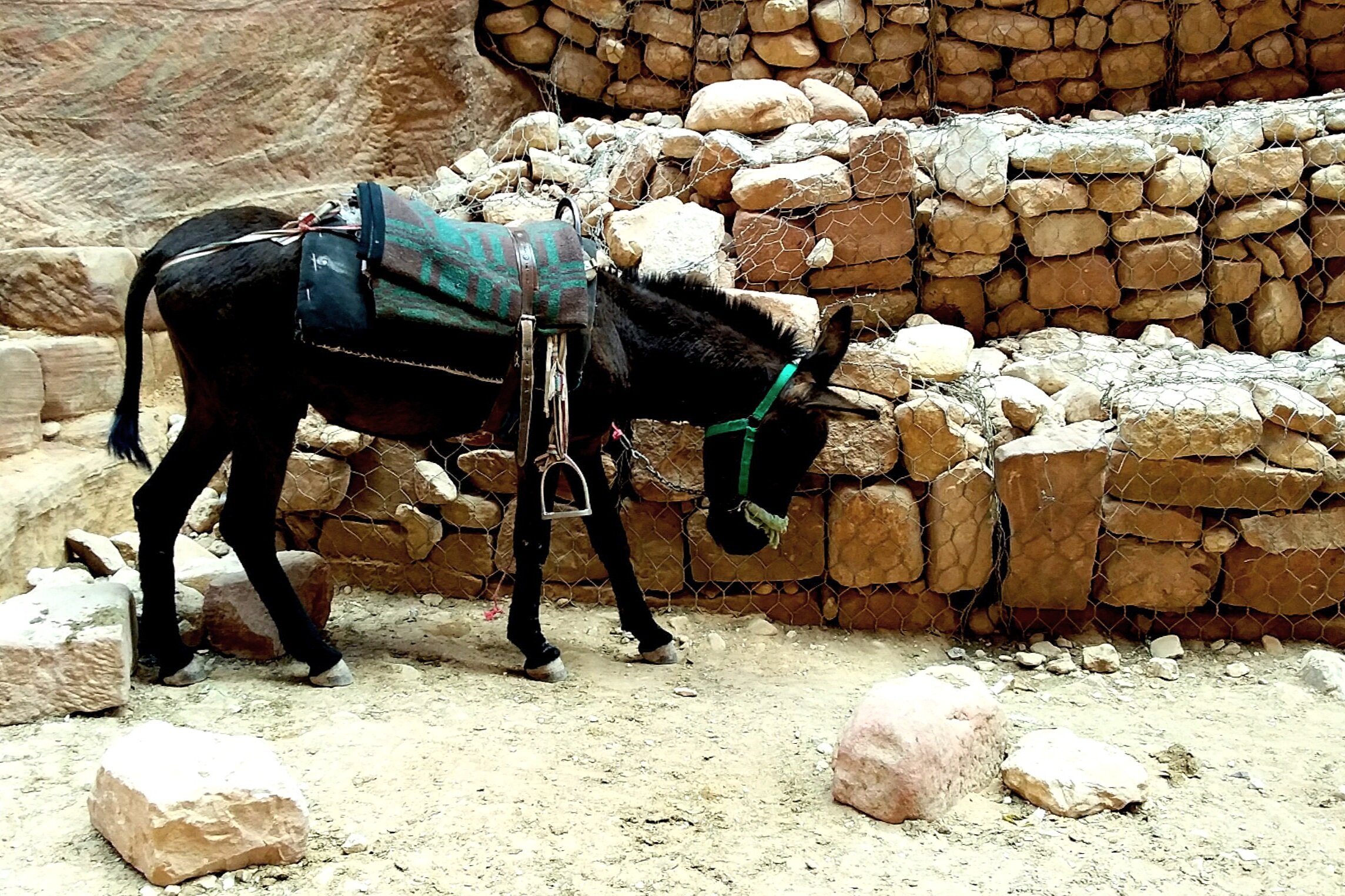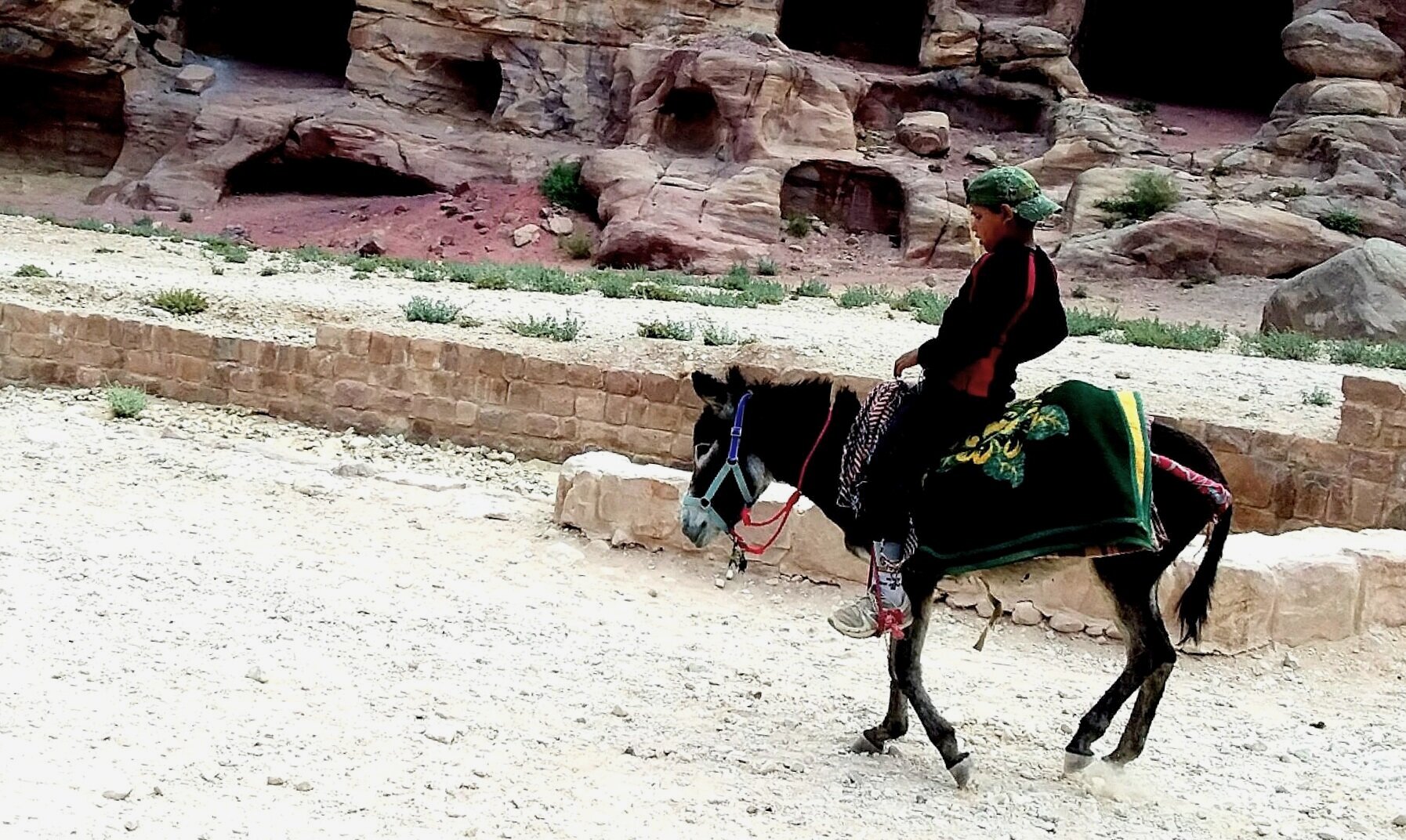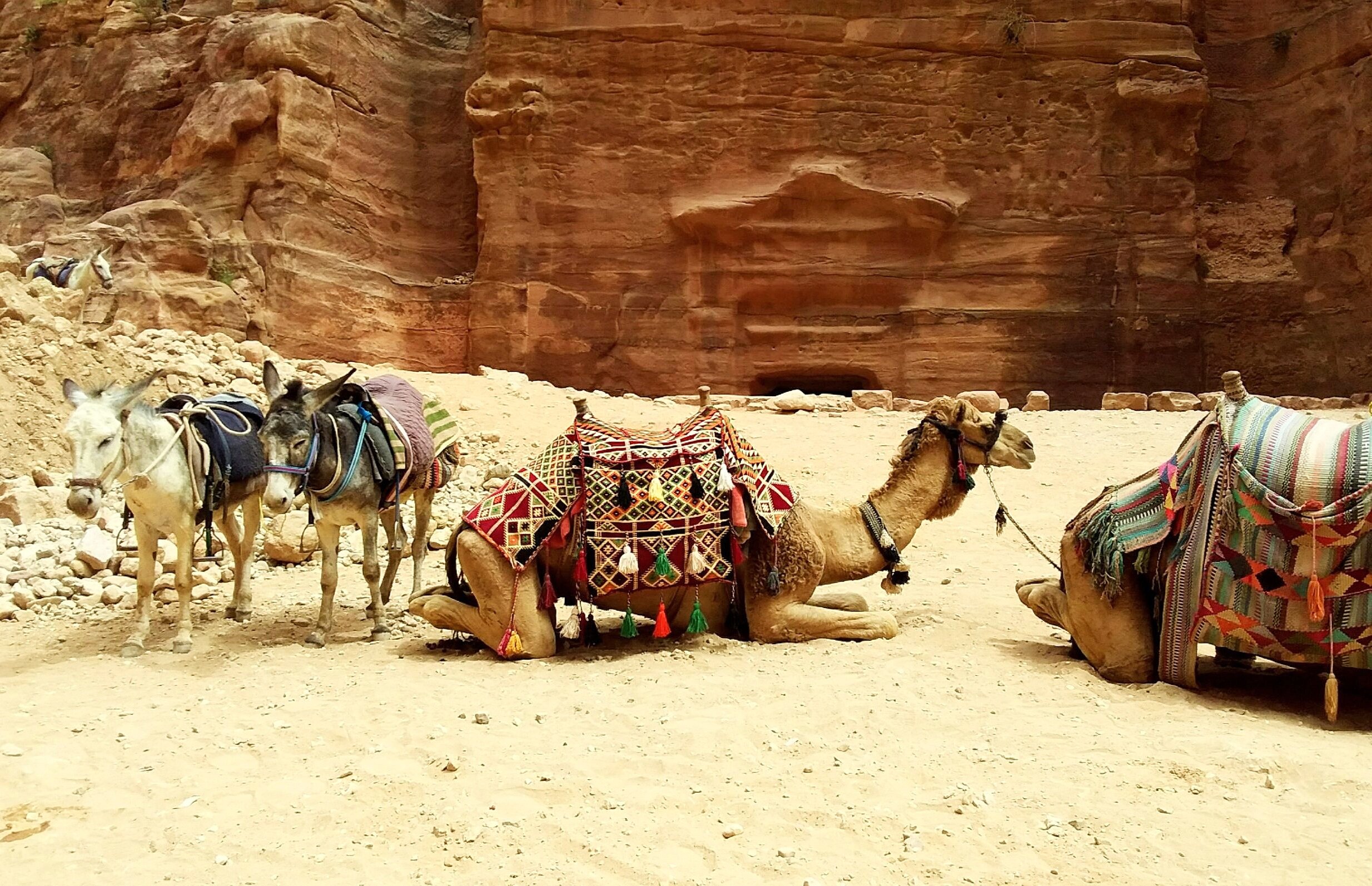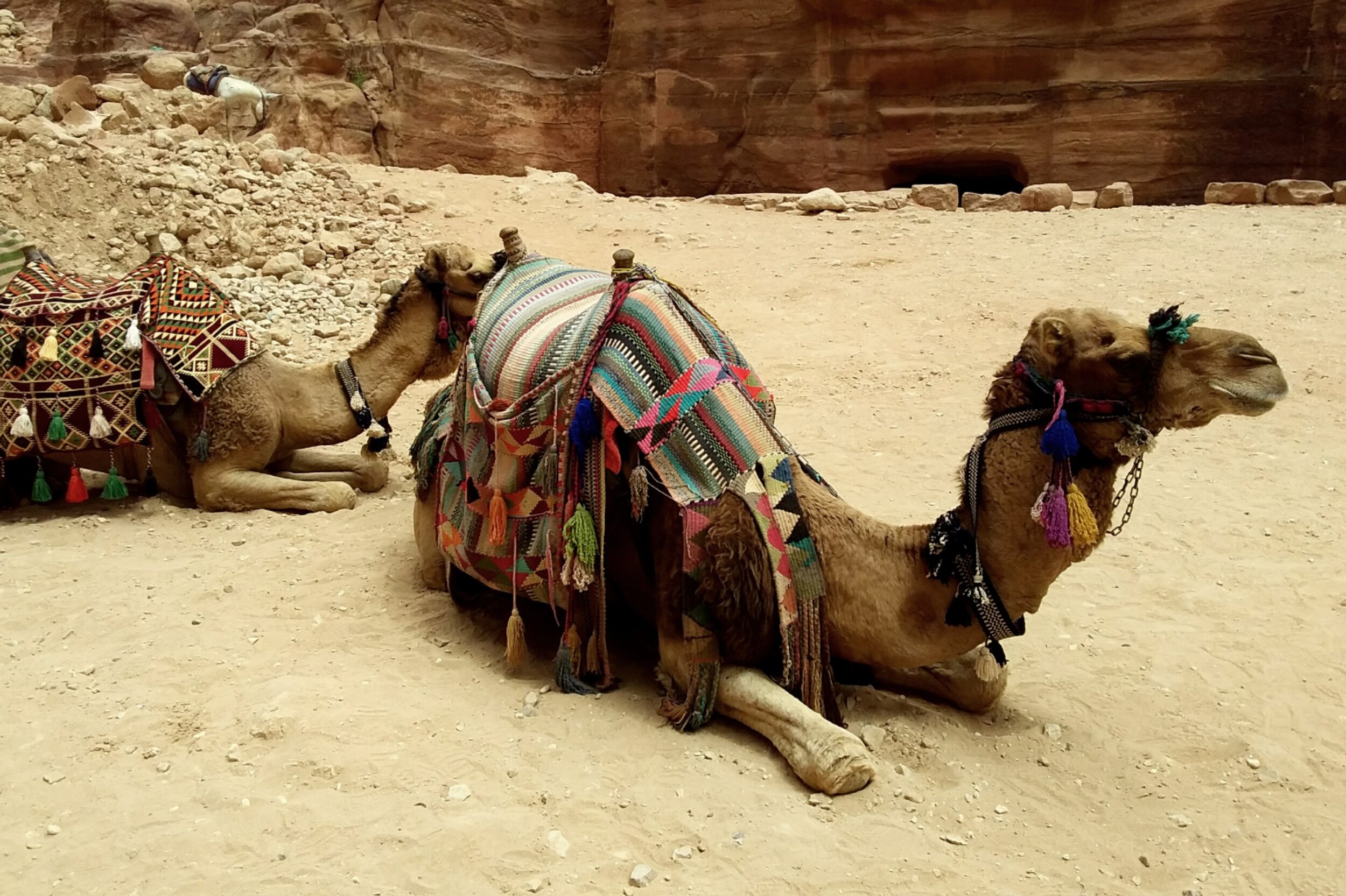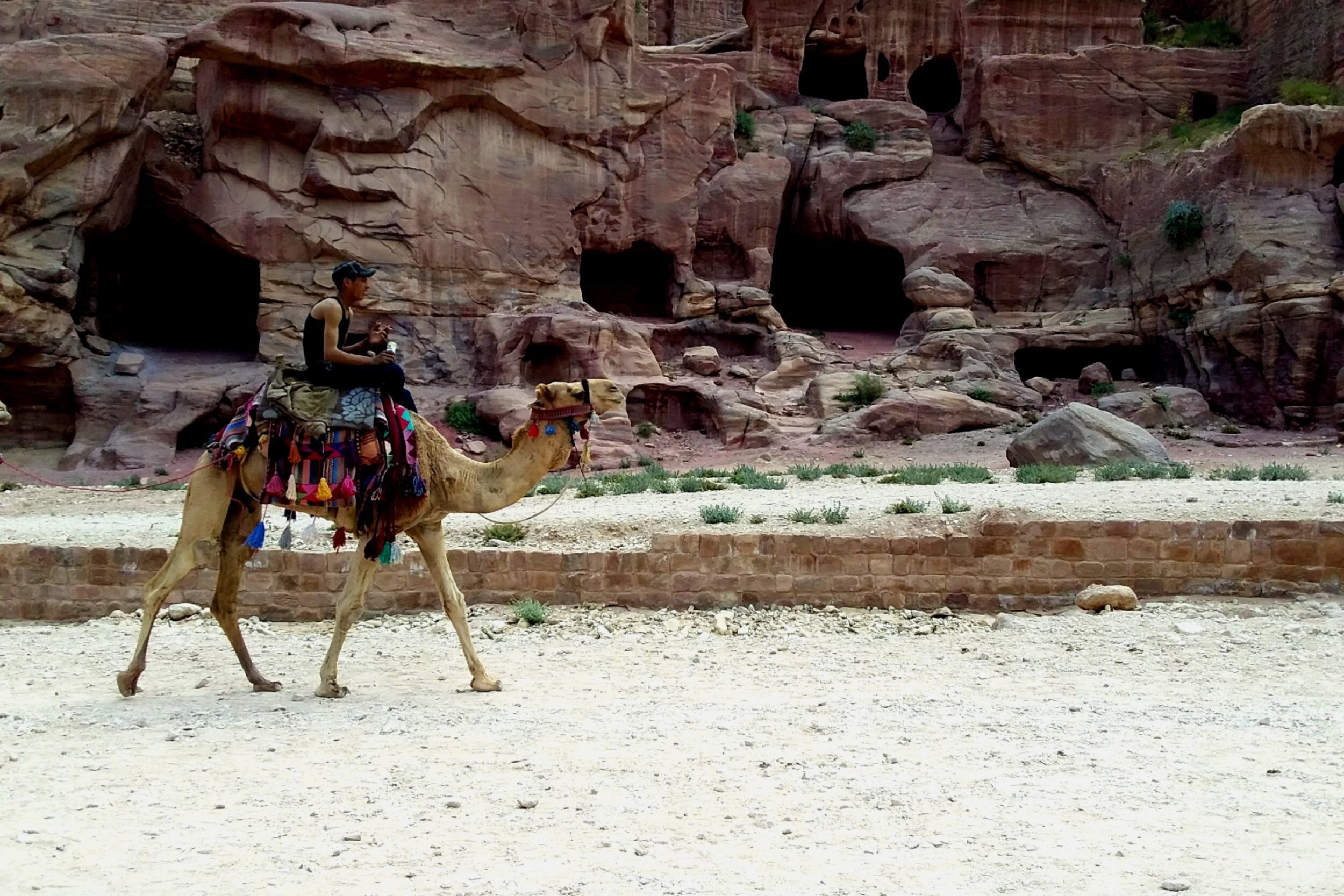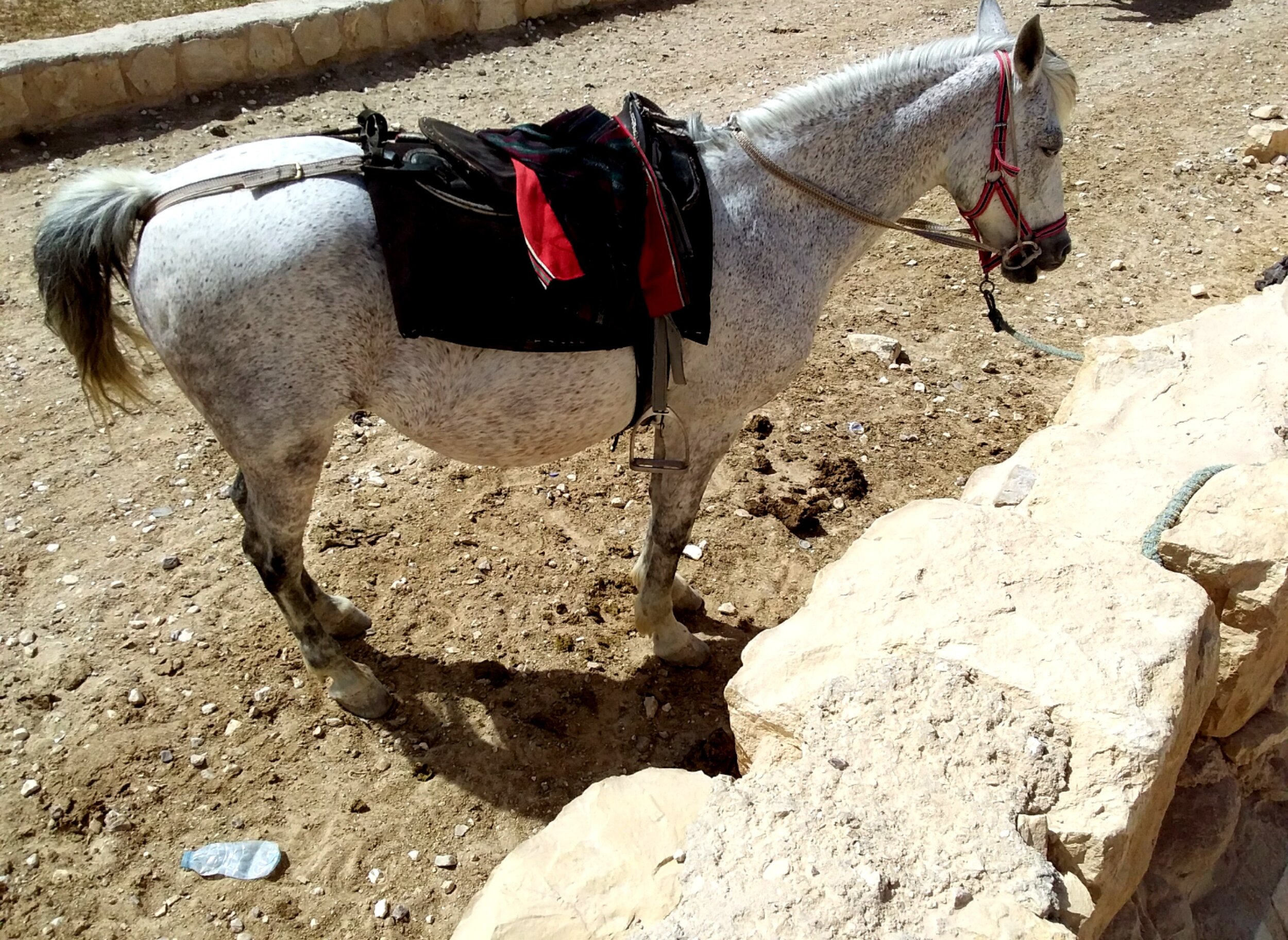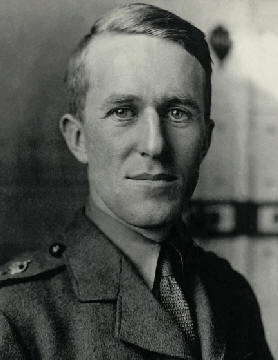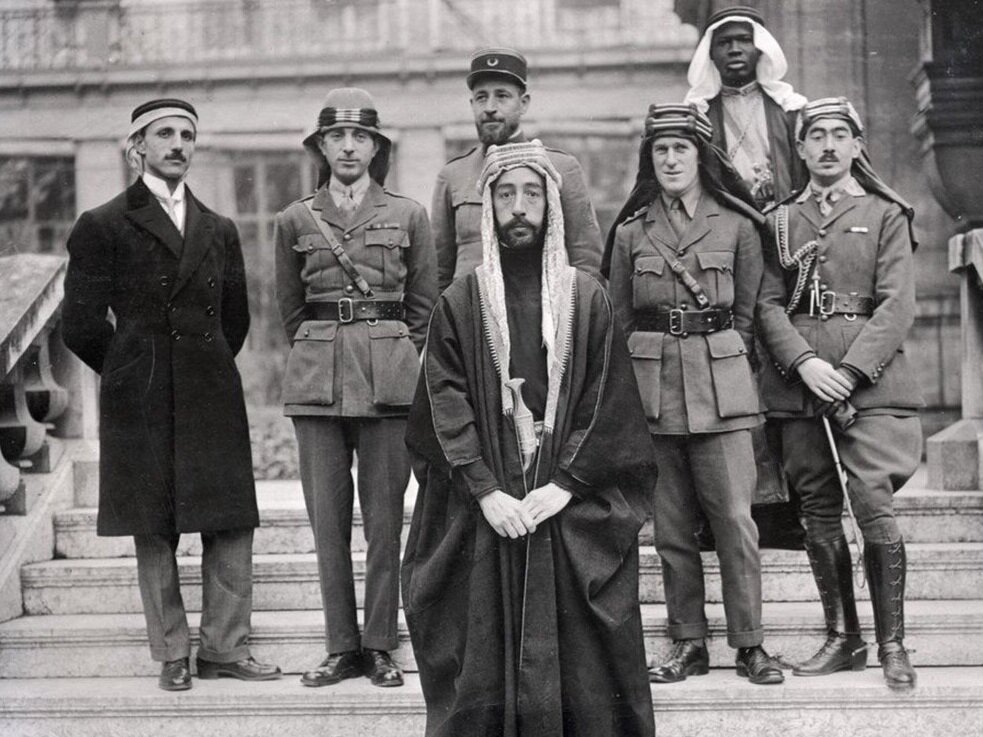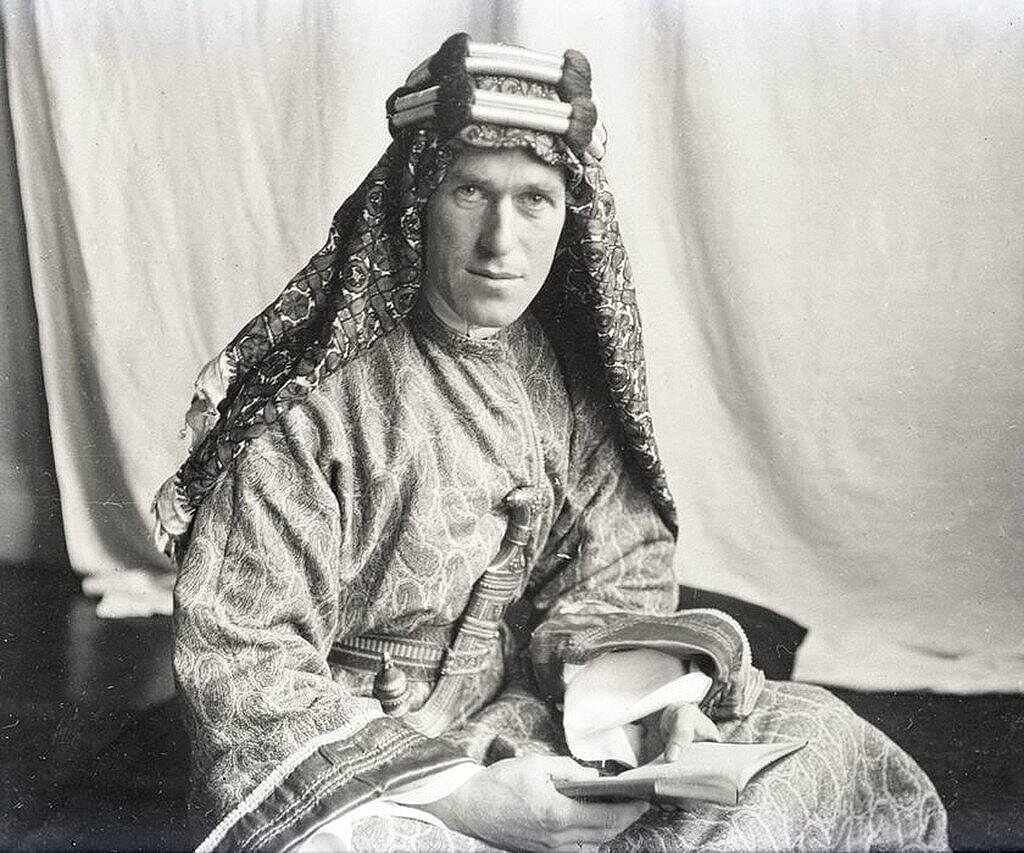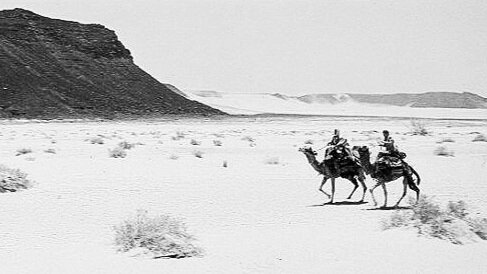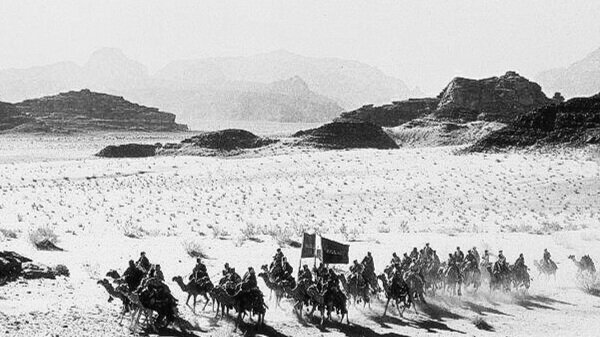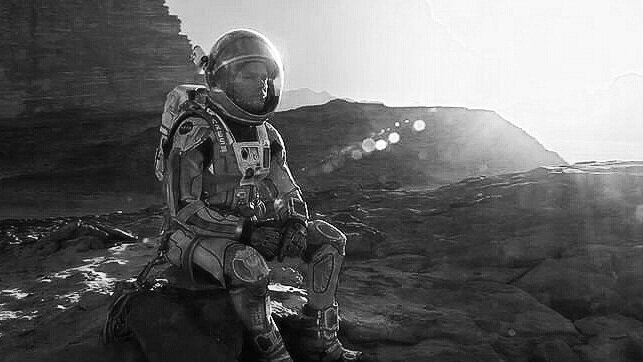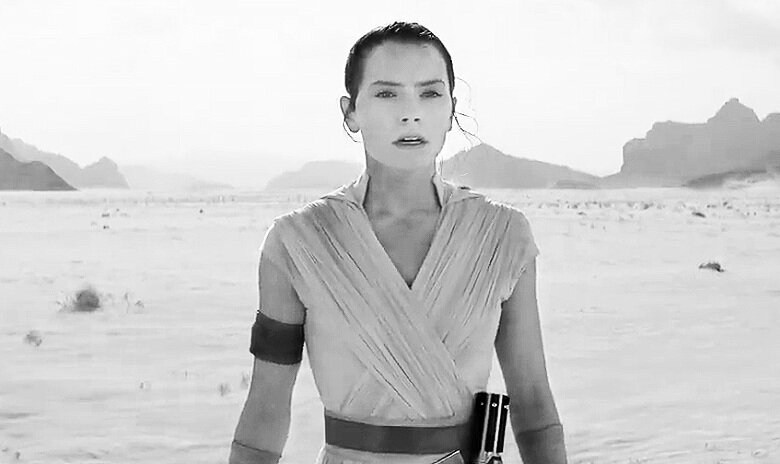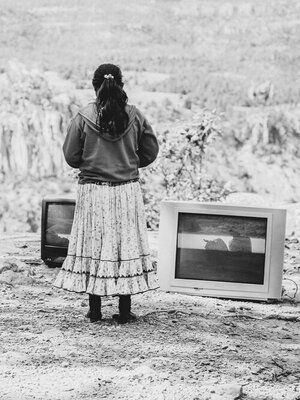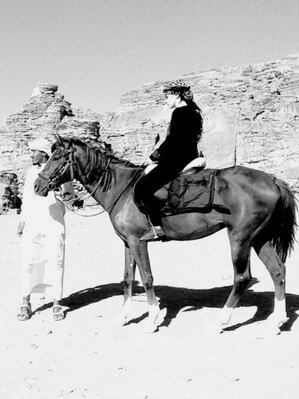Humans in the Desert on simultaneous screens: Camel Man, Horse Woman, Sheep Lady, Boy
HUMANS IN THE DESERT
(2022, Spain, 6min) video installation
Humans in the Desert tells the story of a mysterious bag that travels hand to hand among people in contact with animals. Set in Wadi Rum desert in Jordan, the project explores the bond between humans and animals. Humans in the Desert is inspired by the books The Human Animal (1954) by Weston La Barre, and The Book of Animals (9th century) by Al-Jahiz. “After what the desert and its people expressed through the filming on location, the project turns into a celebration of life, and a message of hope.” —PV
SYNOPSIS A man on a camel crosses the desert to handle a bag to a woman in a horse. The woman passes it to a lady tending her goats. Finally, a boy receives the bag, runs to his village, enters an empty room, and opens it. Humans in the Desert shows people in relationship with animals exploring attitudes that lie on the genetics of both. “Human behavior is full of animal instinct and reaction.” [Desmond Morris] I IMDb
CAST Horse Woman: Sasha Tomouq I Camel Man: Odeh Eid Salem Alzalabieh I Sheep Lady: Um Mohammed Hammad I Boy: Qais Mohammed Hammad CREW Director/writer/producer: Pedro Valiente I Producer: Sager Mazahreh I Director of photography: Pedro Valiente I Film editor: Luis García I Video art editor: Mutaz Jankot THANKS Hospitality, production, animals, cast: Mohammed Hammad and family I Horses: Ali Mohamad Ali Alzalabieh TECH INFO Running time: 6min I Format: HD video, black/white I Country: Spain/Jordan I © 2022 Flying Fish Work
The Human Animal: A Personal View of the Human Species (1954) by Weston La Barre discusses the psychoanalytical approach to psychology and ethnography. Best known for his work in ethnobotany, particularly with regard to Native-American religion, La Barre traces the history of humans examining physical and psychological evolution as well as responses to needs for order, language, and culture. The Human Animal (1994) by Desmond Morris. “Everything we do has an inborn, genetic basis, and all our activities show similarities to those of other species. Man is unique, though, in the way in which he has built on these animal patterns, exaggerating and elaborating them to an astounding degree or suppressing them with damaging consequences. Despite our inclination to believe otherwise, human behavior is full of animal instinct and reaction, and that whatever the species, we all share remarkable similarities. […] An exploration on body language, gestures, facial expressions, sexual signals and the territorial instincts which, with slight variation, we all seem to share.“ [amazon.com] I The New York Times I University of Chicago Press I The Human Animal (1994) BBC series
The Human Animal
The Book of Animals (9th century) - Kitab al-Hayawan by Al-Jahiz is a multi-faceted and multi-volume book about animals. Theologian and natural scientist, the author is considered a master on zoology. Al-Jahiz exhibits an “exciting and very inclusive approach to humanity […] arguing against people who thought that exceptional people and animals were monstrous or scary.” [Jennie Miller, The University of Toronto Press] “It is an enormous collection of lore about animals culled from the Koran, the traditions, pre-Islamic poetry, proverbs, storytellers, sailors, personal observation, and Aristotle’s Generation of Animals.” [The Quarterly Conversation] “It is a pioneering work which covers aspects of biology and zoology; such as animal classification, food chains and evolution. It falls in seven volumes and is full of anecdotes, poetic descriptions and proverbs.” [The Jordan Museum] I University of Toronto I NatGeo I Evolution I 1001 Inventions
The Book of Animals
Humans in the Desert is part of the video installation trilogy Multiple Portraits. It’s an interracial work that presents people in the world as a Cubist painting: characters are seen from different points of view through multiple screens. An ongoing project that spans in time and space. It takes place from 2014 to 2024 in three continents: Europe, America, Asia. I Photo: Humans in the Desert
Humans in the Desert is conceived to be projected on (at least) four visual displays such as screens, monitors or walls. The classic film language is deconstructed since continuity style and conventional flow of shots size are broken. It presents people of different genre and ages in contact with animals within the Bedouin culture in Wadi Rum desert, Jordan. A man transports his camel like his ancestors. A woman rides her horse through the desert. A shepherd lady patiently guards her goats. A boy seems to be the final carrier of a message to the future. SCREEN 1 Man on camel. SCREEN 2 Woman rides a horse. SCREEN 3 Shepherd lady tends sheep. SCREEN 4 Boy through the desert. I Photo: Humans in the Desert design
Humans in the Desert is an interdisciplinary project that blends film, photo, design, visual art, music, writing, and performance as well as sites and social media. Multiple Portraits can be screened on a wide range of forms and spaces including one by one and altogether; independently and simultaneously; in screening rooms, art centers and/or online. It’s a trilogy of visual portraits: cinematic, in motion, multiple, and simultaneous. I Photo: Filming Humans in the Desert
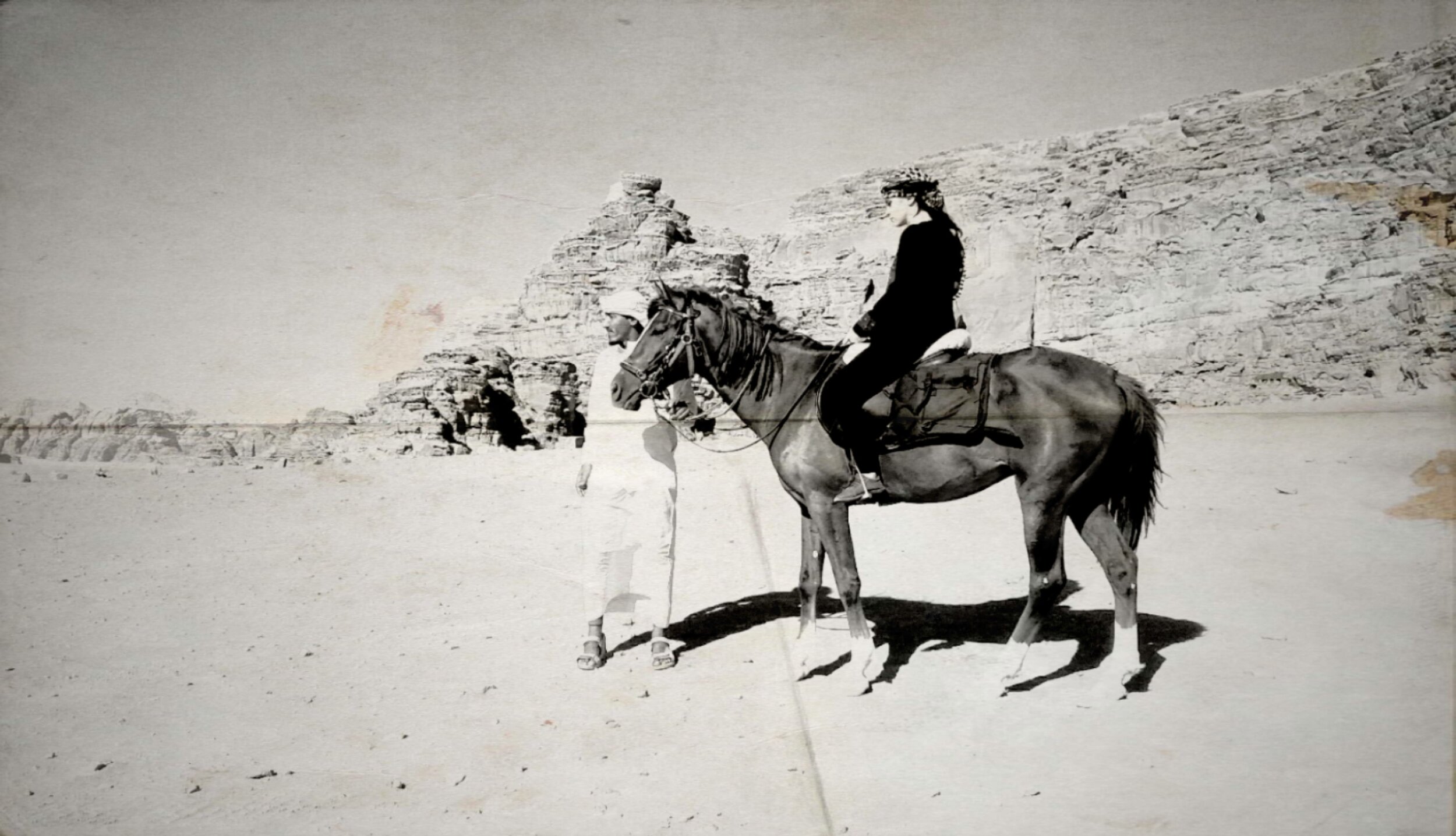
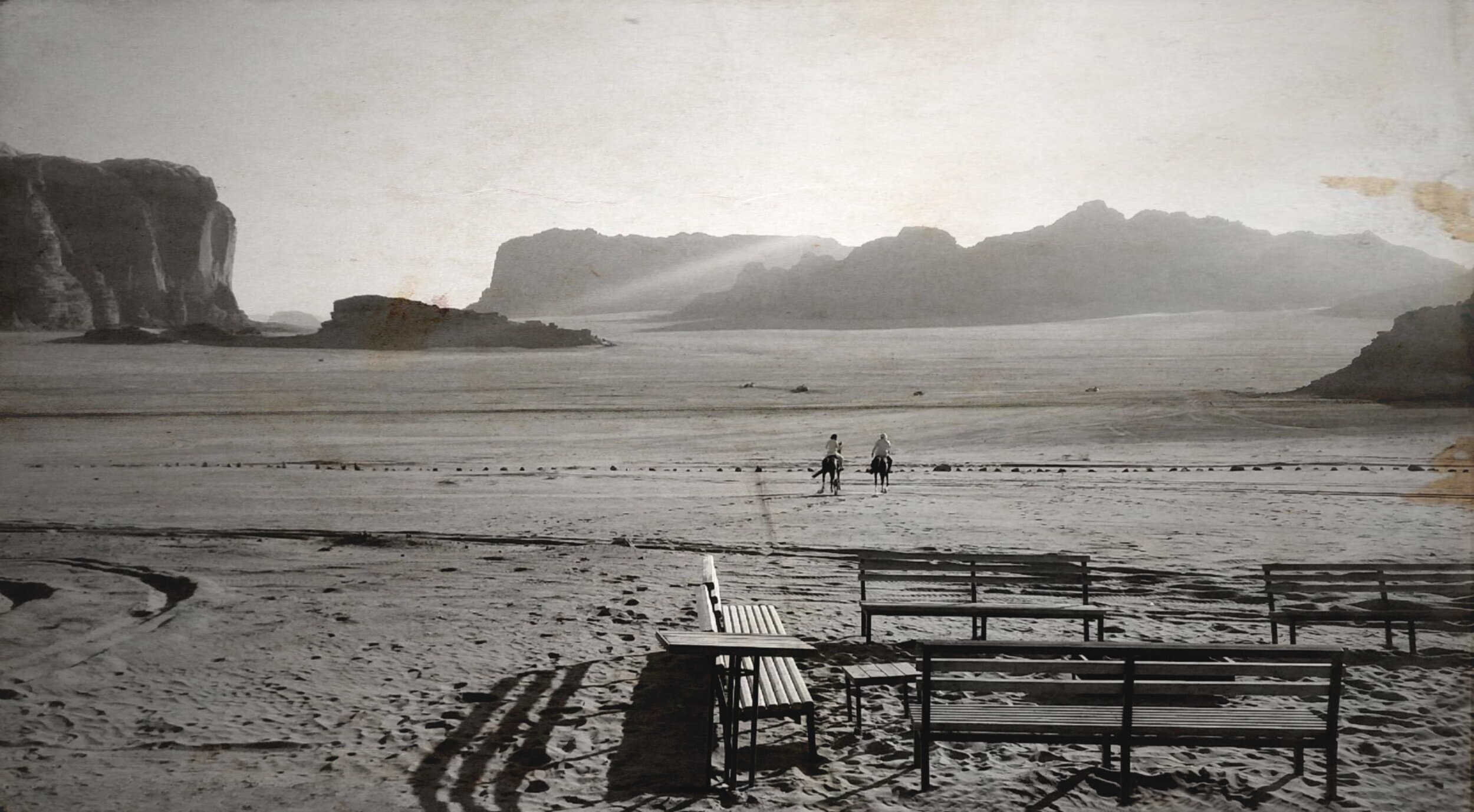
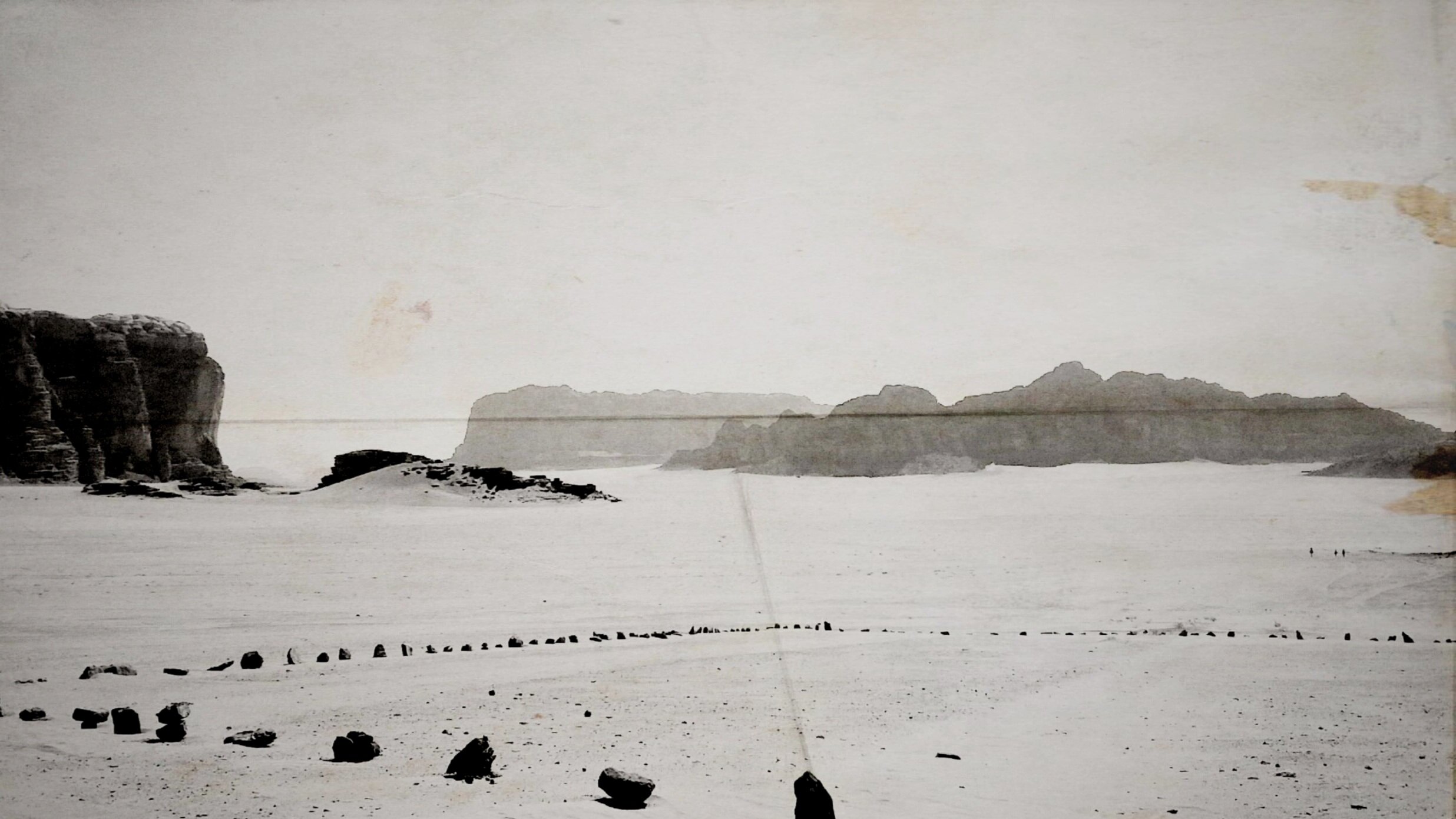
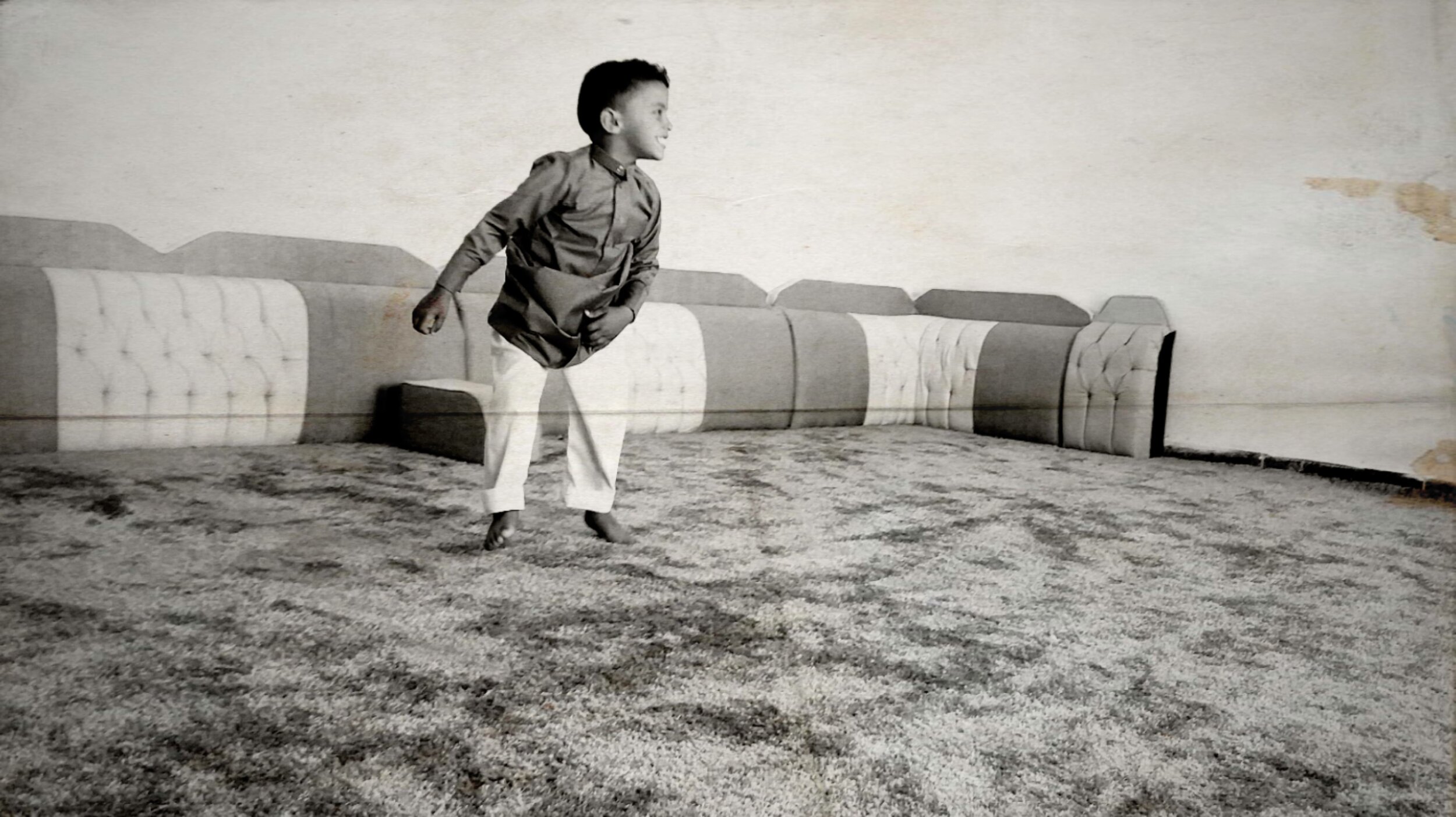
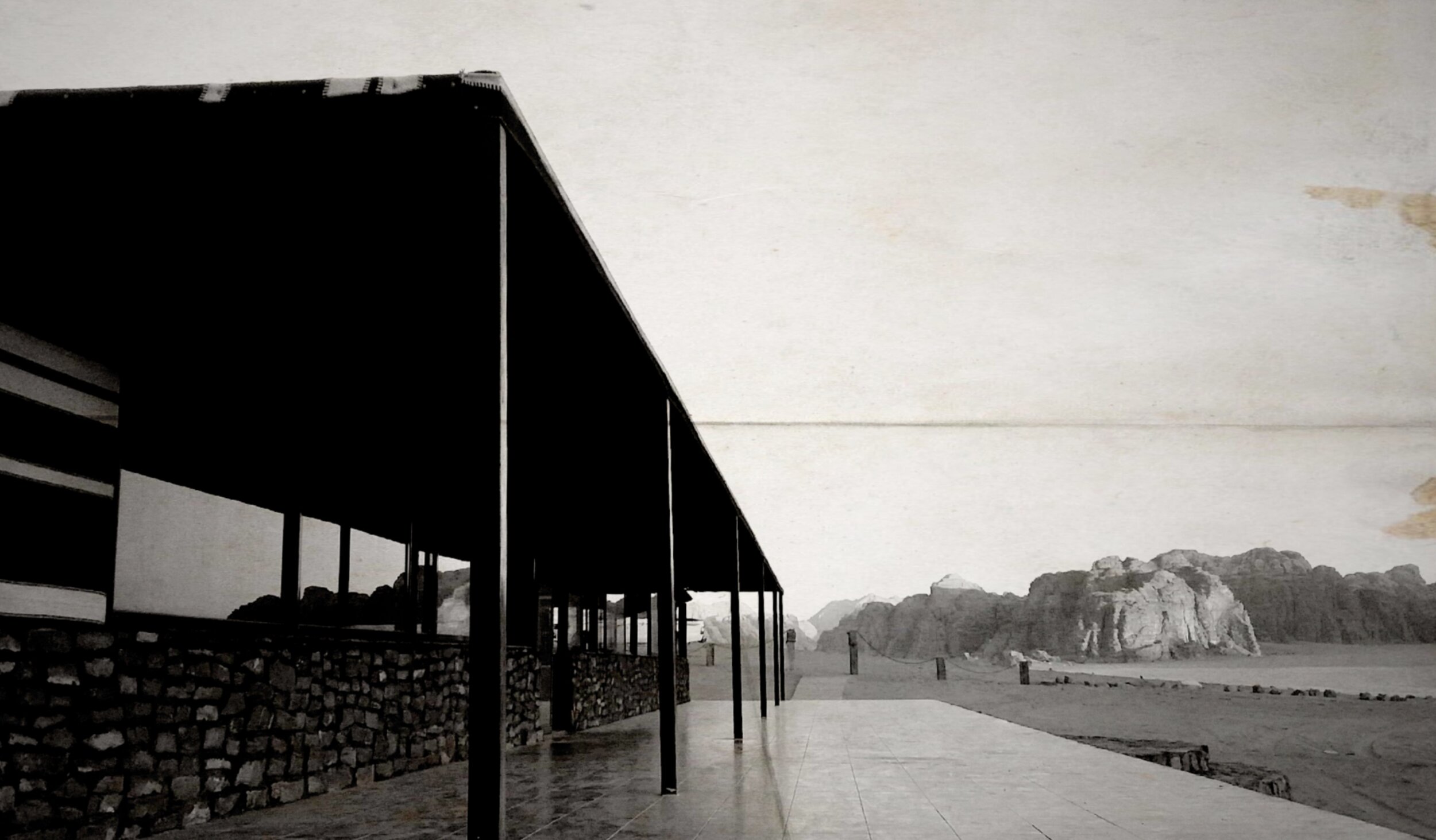
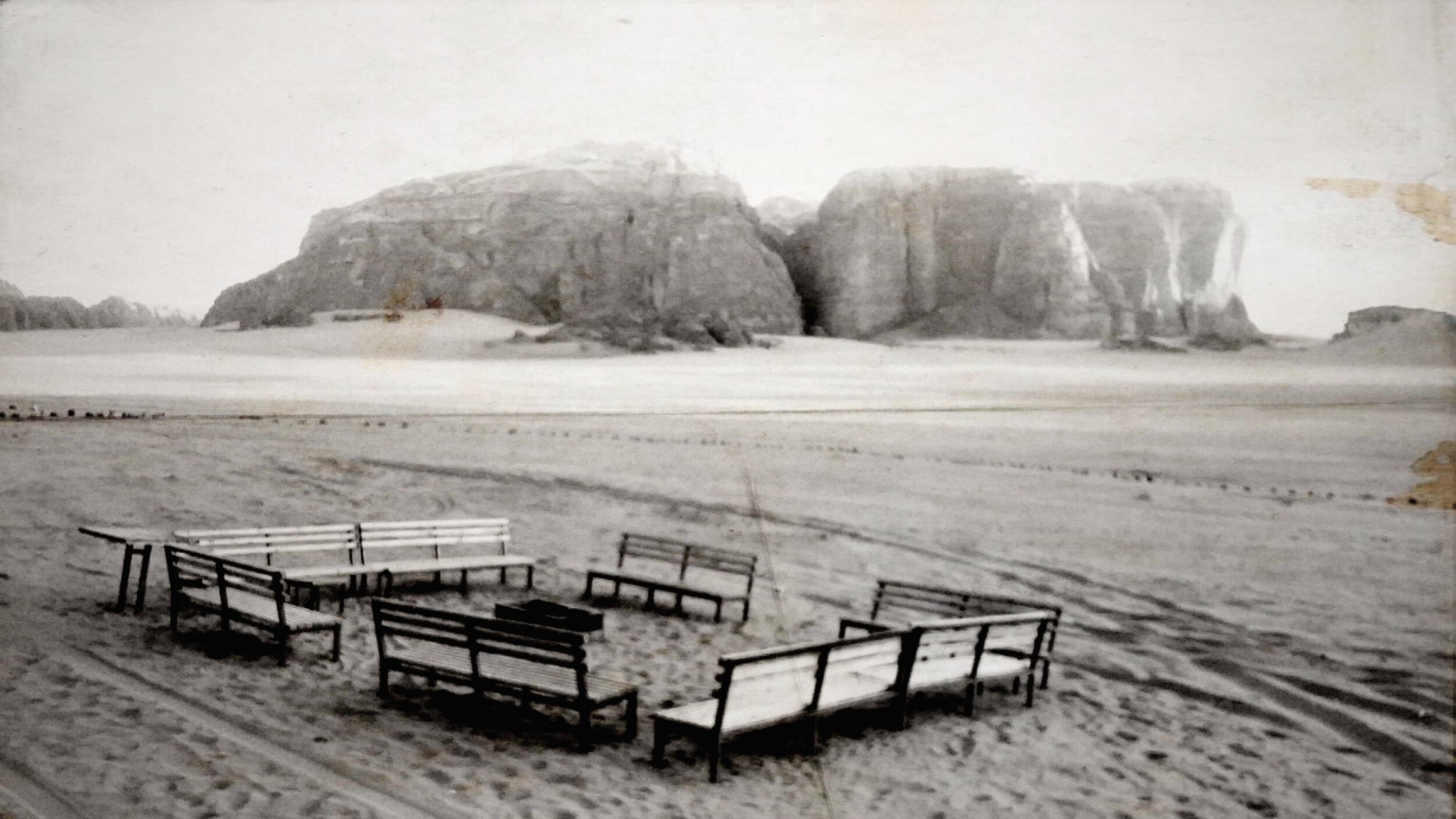
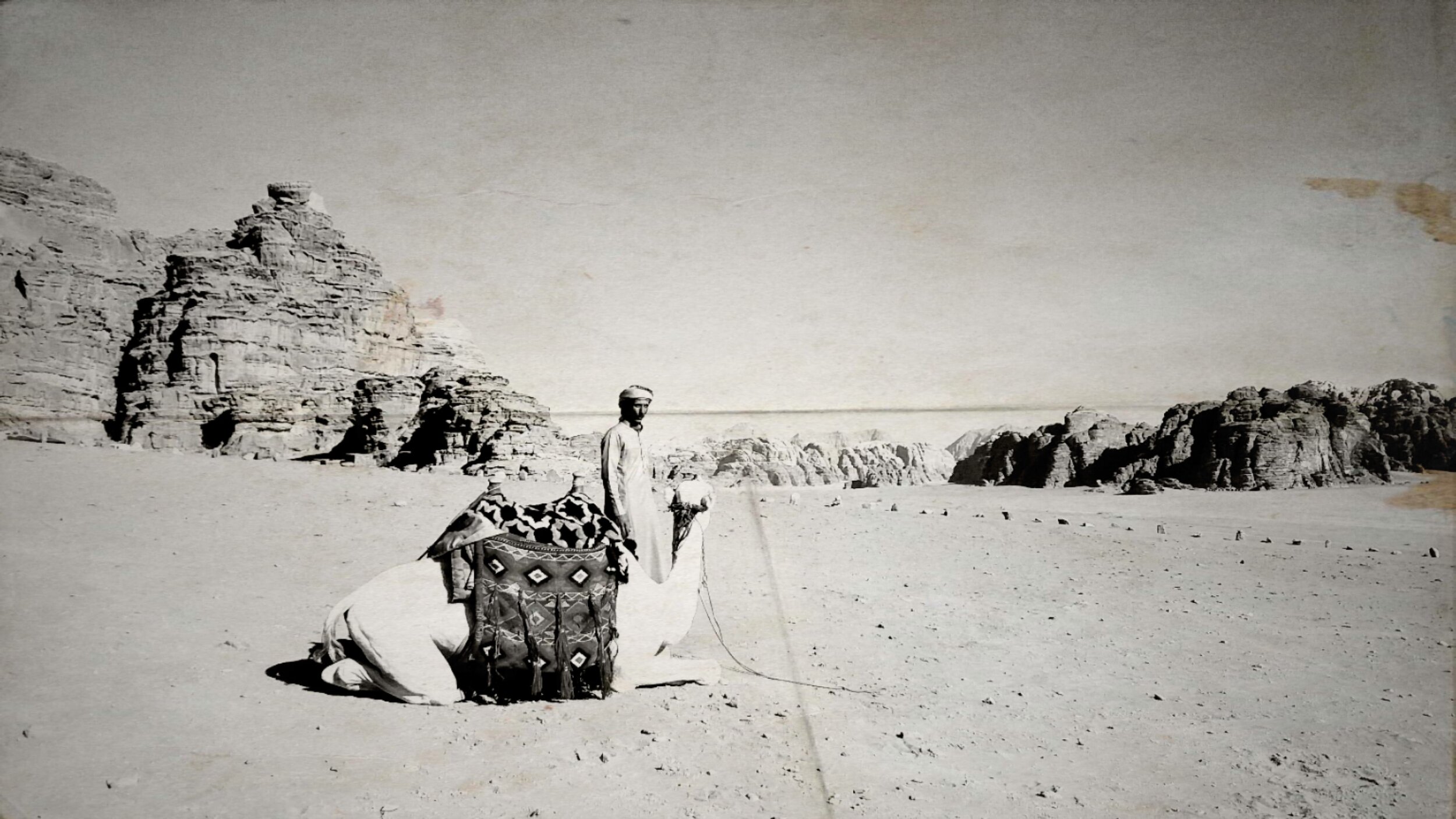
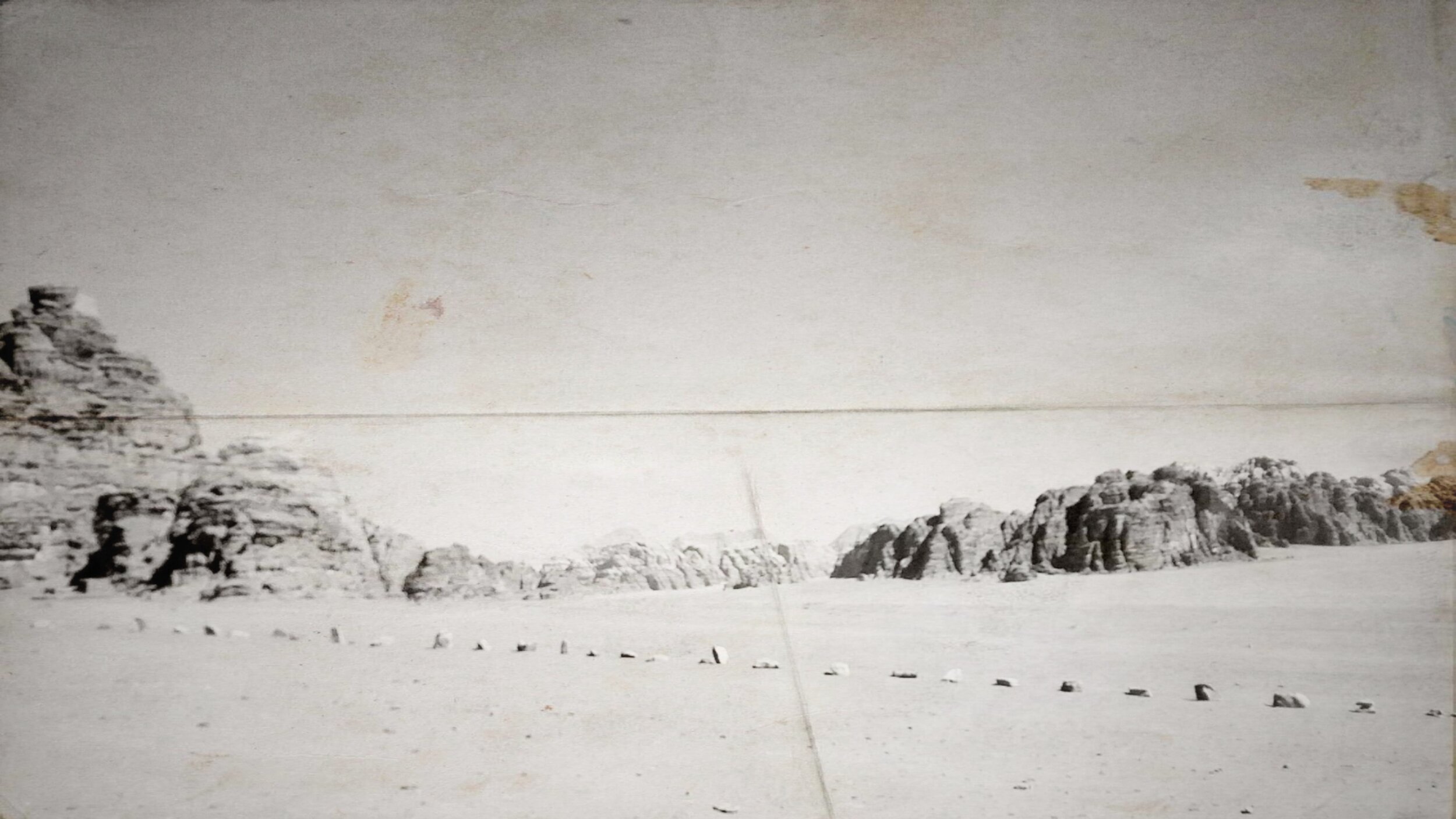
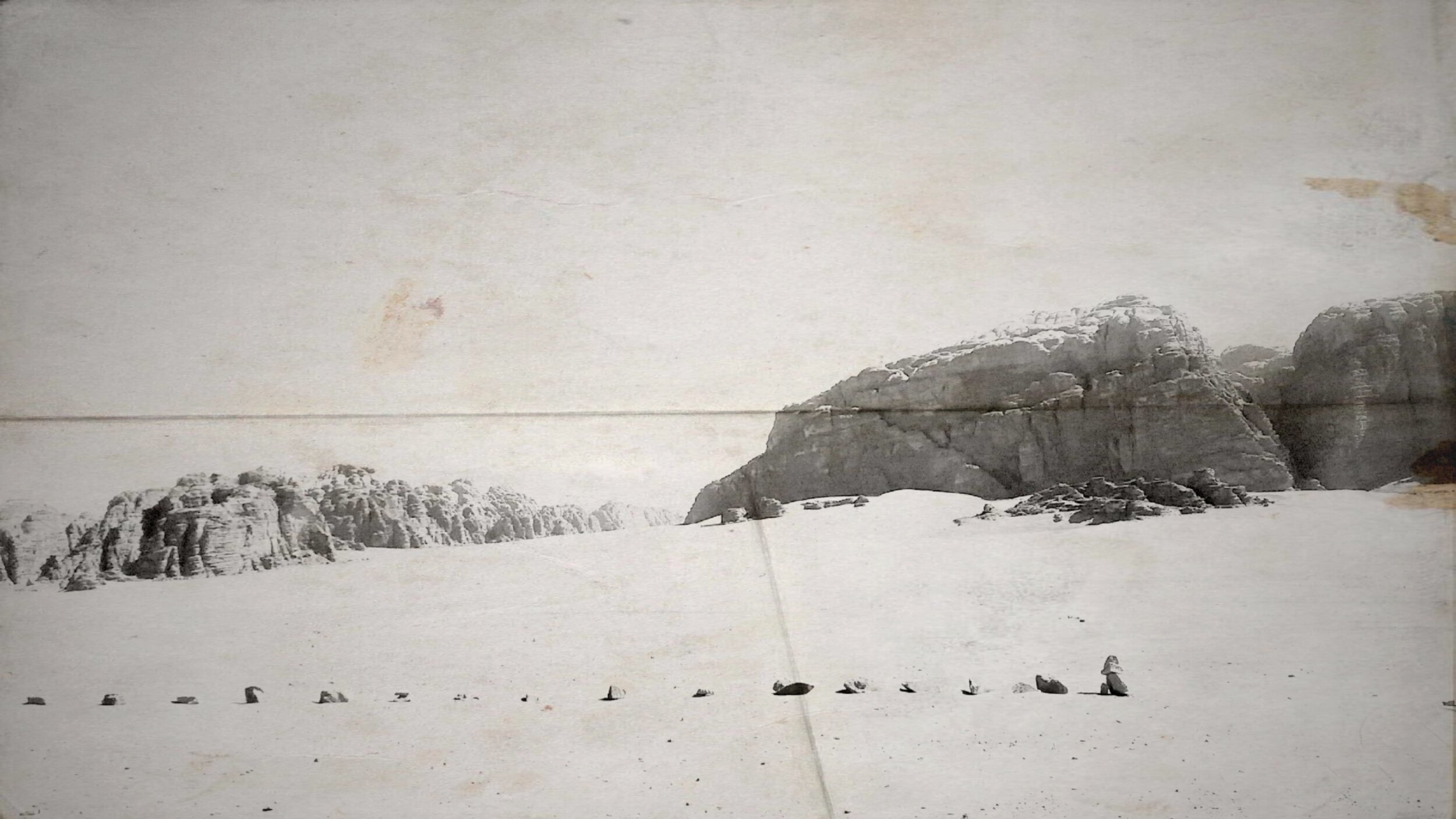
“A suite of unique physical and behavioral characteristics distinguishes Homo sapiens from other mammals. Three diagnostic human behaviors played key roles in human evolution: tool making, symbolic behavior and language, and the domestication of plants and animals. There is a previously unrecognized fourth behavior, which I call the animal connection, that characterized the human lineage over the past 2.6 million years. The animal connection is the underlying link among the other key human behaviors and that it substantially influenced the evolution of humans.'' [The Animal Connection and Human Evolution by Pat Shipman, The University of Chicago Press] I Photo: Filming Humans in the Desert
Human Evolution
“Virtually all the people living in and around Wadi Rum today are of Bedouin origin and, until recently, led nomadic lives, relying on their goat herds. They are resourceful, hospitable people who are largely responsible for developing Wadi Rum as a tourist destination.” [wadirum.jo] I Photo: Filming Humans in the Desert
Bedouin Culture
Jordan (Arabic: الأردن; tr. Al-ʾUrdunn) is an Arab country in Western Asia, on the East Bank of the Jordan River. Bordered by Saudi Arabia, Iraq, Syria, Israel, and Palestine, it’s at the crossroads of Asia, Africa, and Europe. The capital is Amman. I LINKS UN I Unesco I Unicef I Photo: Humans in the Desert landscape i Music: Humans in the Desert track by Blue Dot Sessions as work in progress
Nomad Life, Nomad Art
“People have lived in Rum for thousands of years, struggling to survive in its harsh environment. They’ve been hunters, pastoralists, farmers and traders. Local people gained notoriety fighting along with Lawrence of Arabia during the Arab Revolt against the occupying Turkey and Germany.” WadiRum.jo I NatGeo I Wiki I Photo: Humans in the Desert behind scenes
Wadi Rum Desert
Petra is described by UNESCO as “one of the most precious cultural properties of man's cultural heritage." “The ancient city of Petra is the legacy of the Nabateans, an industrious Arab people who settled in southern Jordan more than 2,000 years ago. Petra is a UNESCO World Heritage Site, and one of the new Seven Wonders of the World.” VisitJo I NatGeo I Wiki I Petra visits iin 2020 (up), 2019 (down)
Petra, The Lost City
© 1962-2015 Lawrence of Arabia (Horizon Pictures), Star Wars (Walt Disney), The Martian (20th Century Fox)
Wadi Rum is the landscape of classics in the history of cinema such as Lawrence of Arabia and Star Wars. Colonel Thomas Edward Lawrence (1888-1935) was a British archaeologist, army officer, diplomat, and writer. He was renowned for his role in the Arab Revolt and the Sinai and Palestine Campaign against the Ottoman Empire during the First World War. The film Lawrence of Arabia (1962) portrayed his adventures, and the book Seven Pillars of Wisdom gave him international recognition.
Star Wars, the story that takes place "a long time ago in a galaxy far, far away” happens to be in Wadi Rum. The epic space-opera media franchise created by George Lucas in 1977 is a world pop-culture phenomenon. Several titles were filmed in Wadi Rum including 2019. Other productions are The Martian (2015) by Ridley Scott, with Matt Damon; and Aladdin (2019) by Guy Ritchie, with Will Smith, based on the classic One Thousand and One Nights. [IMDb/Wikipedia] I CNN
From Lawrence of Arabia to Star Wars
Multiple Portraits is a video installation trilogy that presents physical and mental deserts where life happens. It belongs to a transmedia universe of contents where the audience is free to create its own narrative navigating through interactive storytelling. Tarahumara Project (2024) Sierra Tarahumara, Mexico; Humans in the Desert (2022) Wadi Rum, Jordan; Penelope is Waiting (2015) Madrid, Spain.
MULTIPLE PORTRAITS



